With pets turning into vital family members bit by bit, it is no wonder that the bond between humans and canine companions takes diverse forms. Probably, dog tattoos have to be the fastest growth trends among dog enthusiasts all over the world.
Whether for remembering a favored pet, celebrating the inseparable bond between owner and dog, or simply showing one’s love for dogs in general, dog tattoos are fast becoming one of the popular body art forms.
This blog covers the wonderful world of dog tattoos and the many different reasons people get this ink of their skin of furry friends. From ultra-realistic portraits that capture every whisker and every wag of the tail to more abstract designs, symbolizing the spirit of a dog, these tattoos can be as varied as the dogs themselves. Another aspect we will touch upon is the history and cultural significance of dog tattoos: finding their roots and tracing the evolution through time.
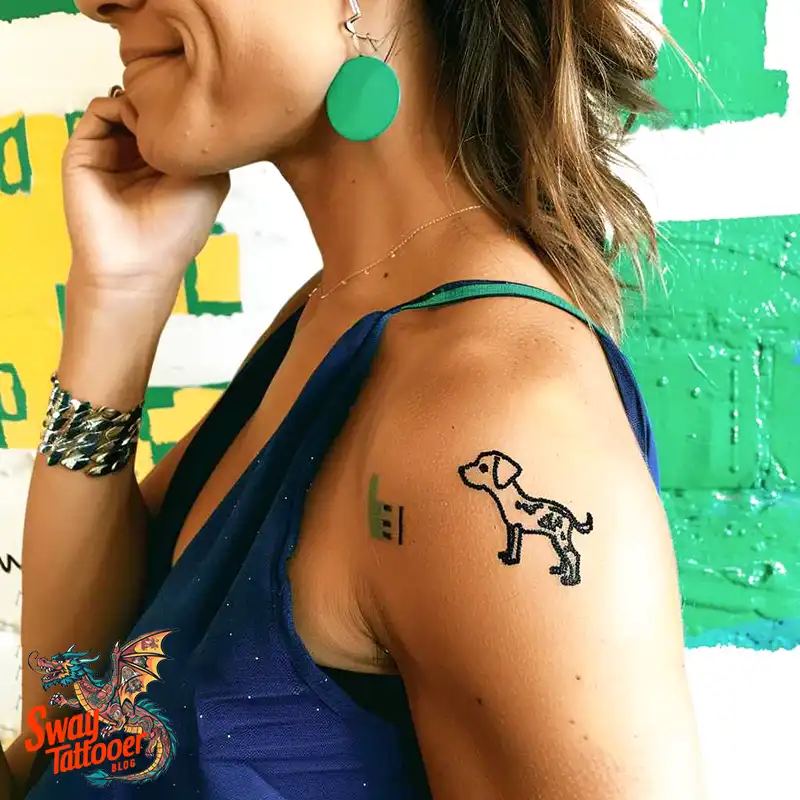
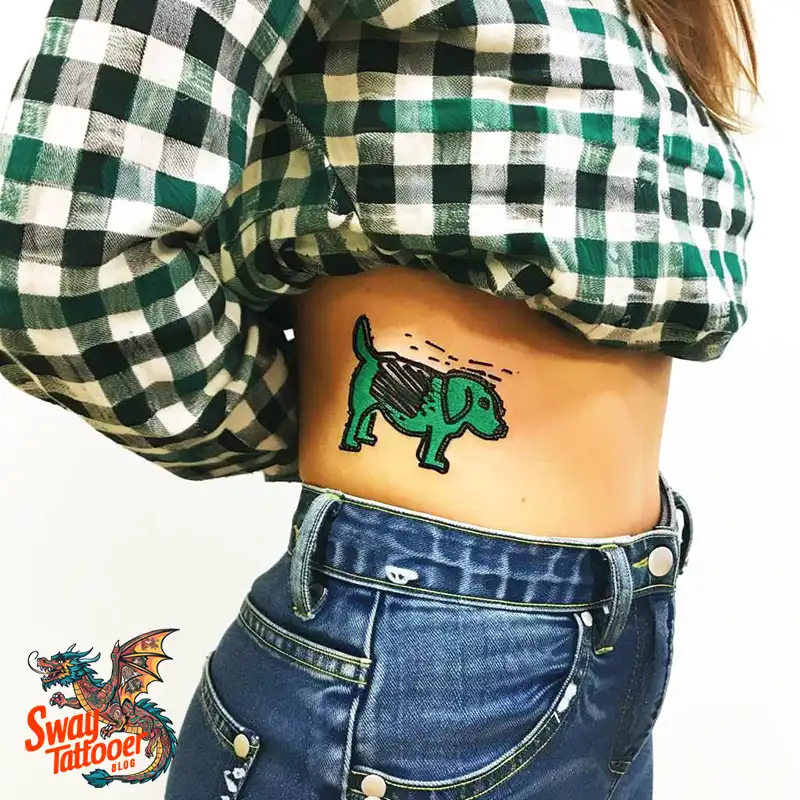
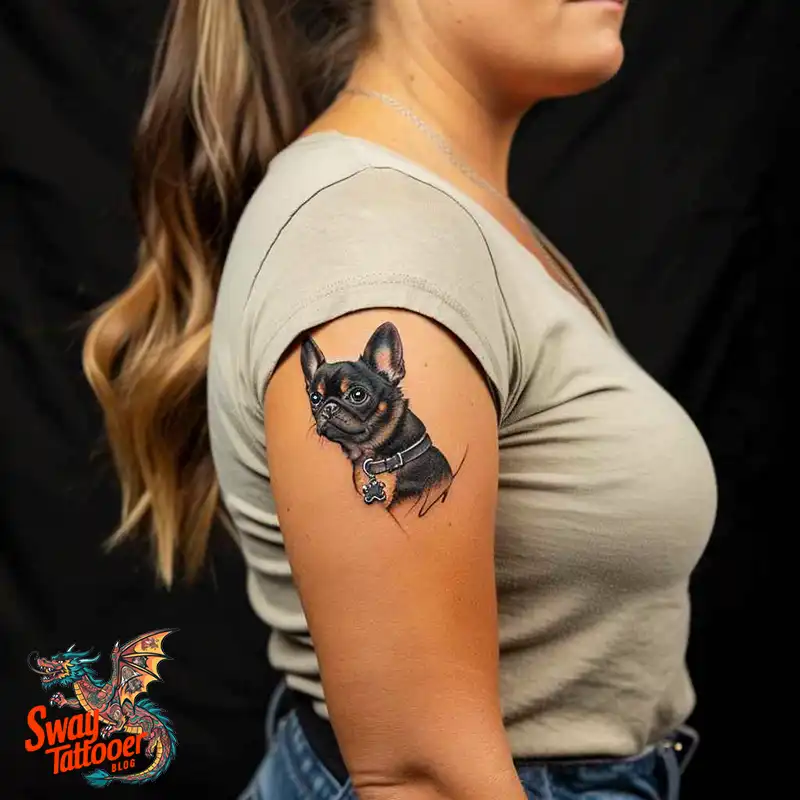
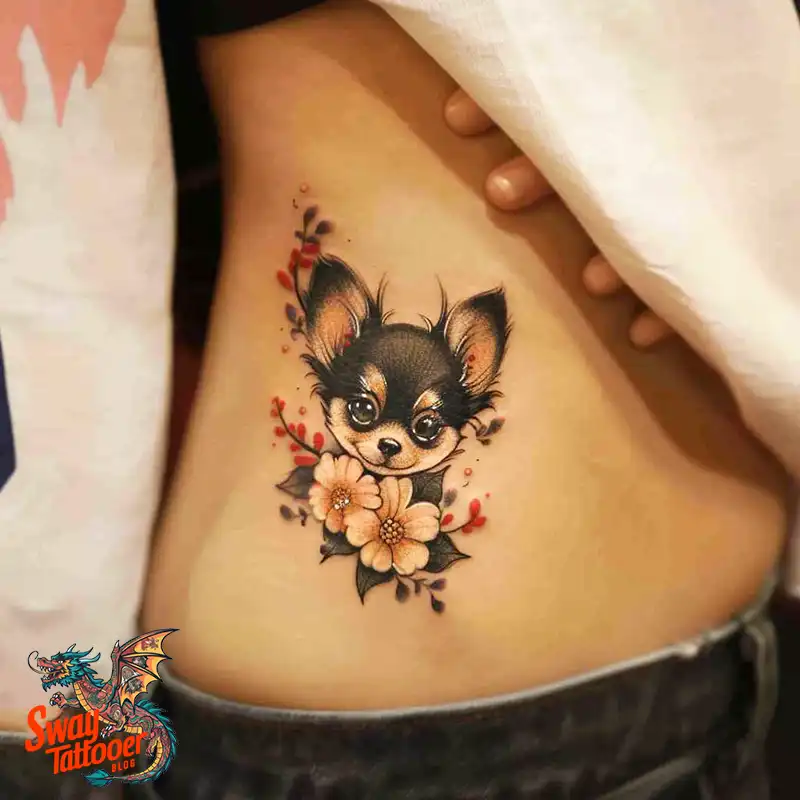
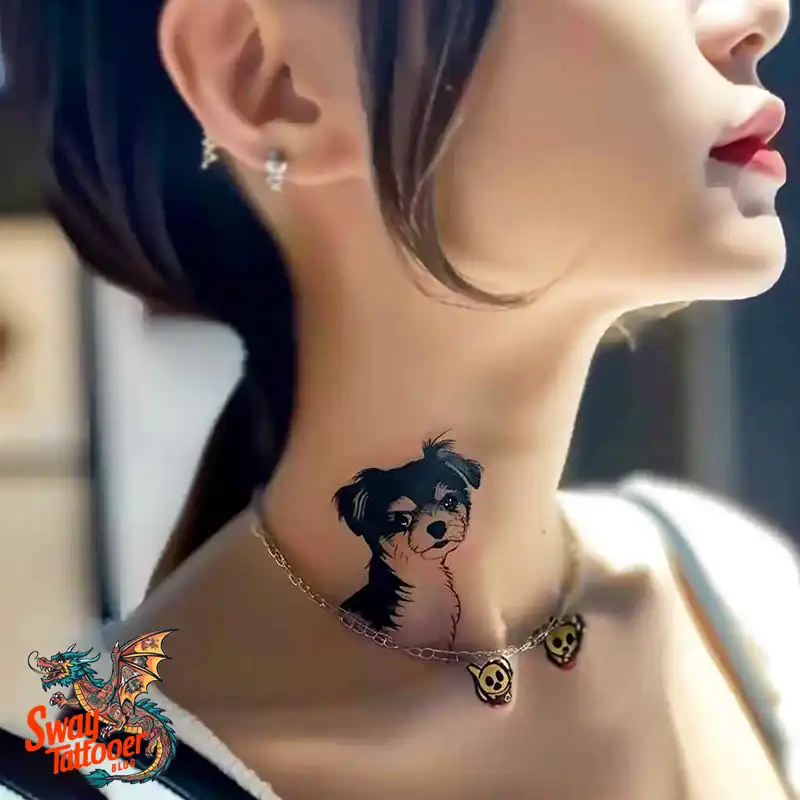
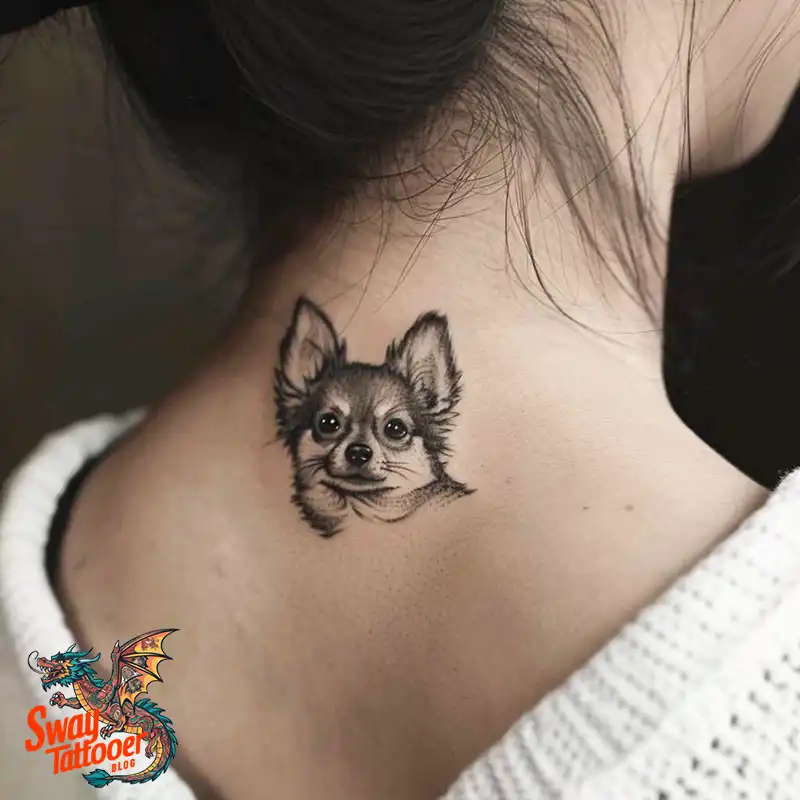
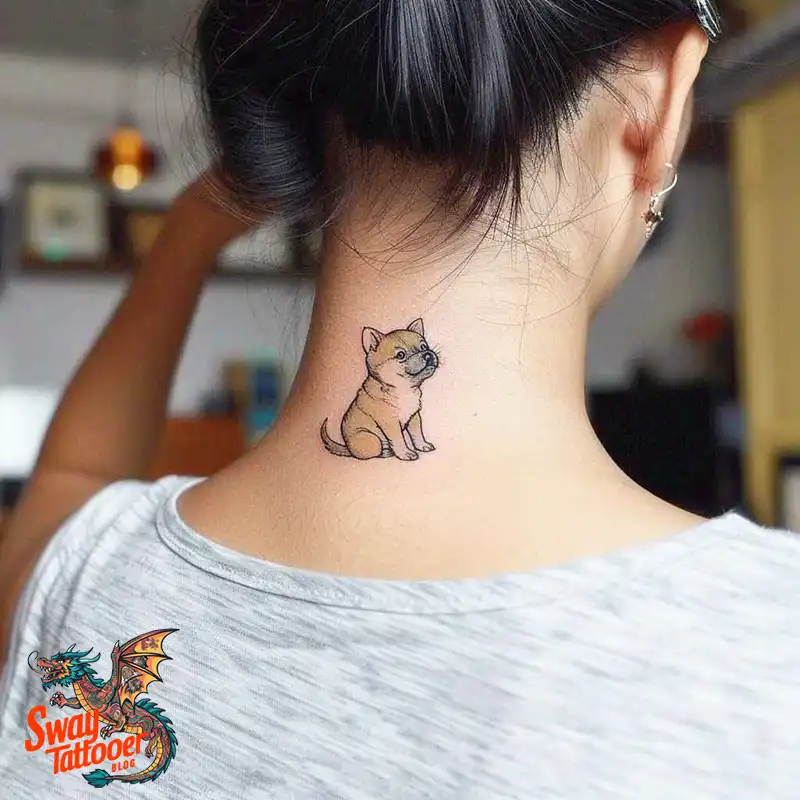

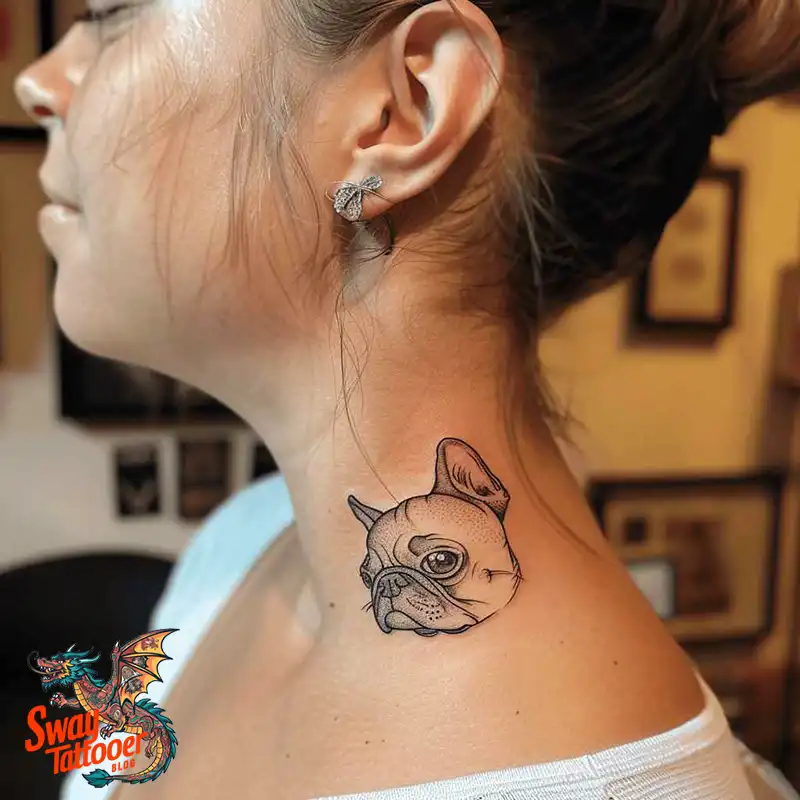

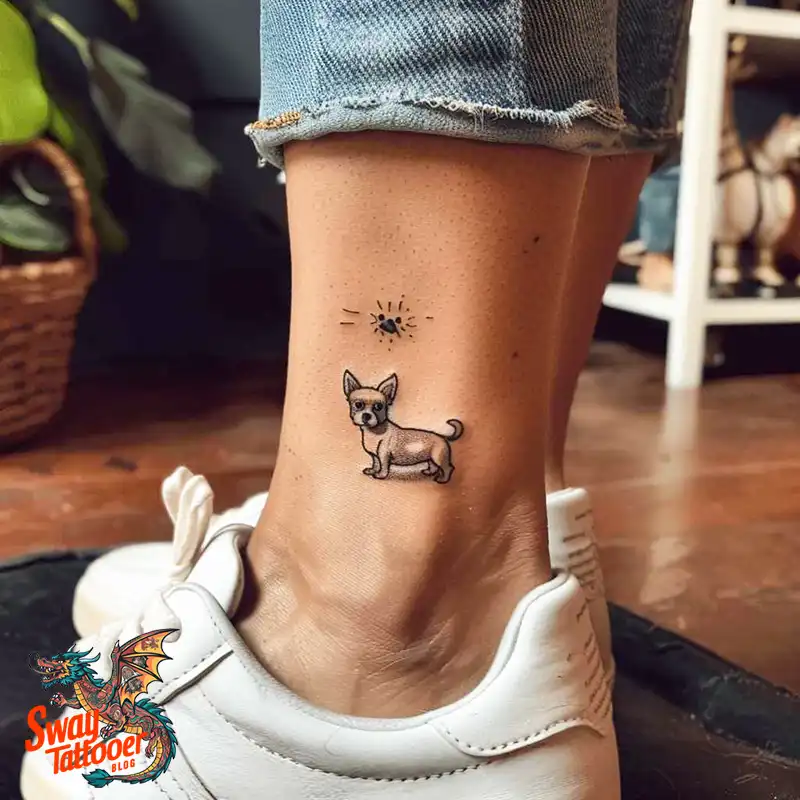
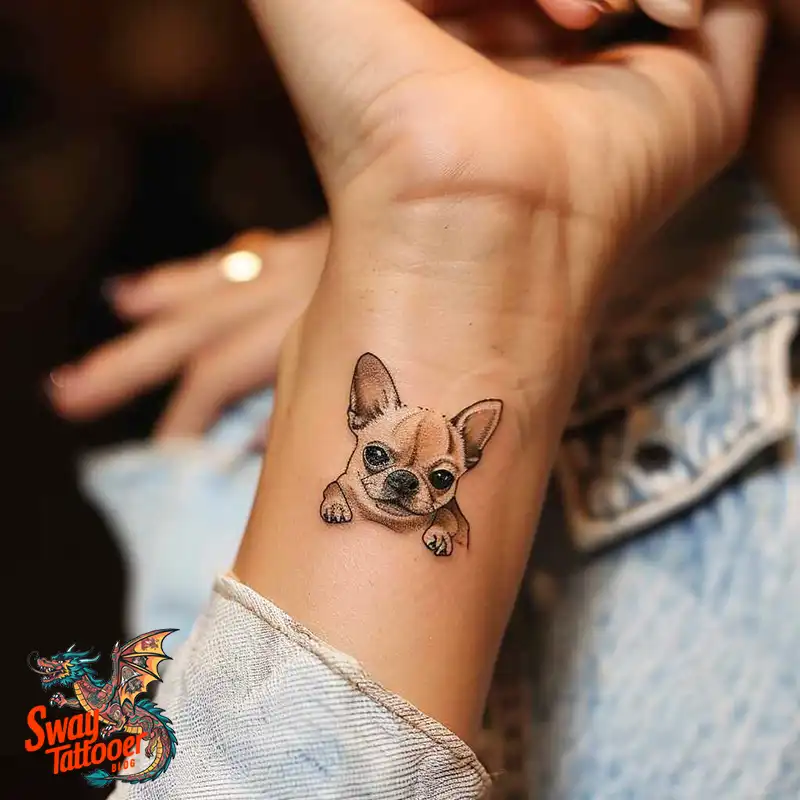
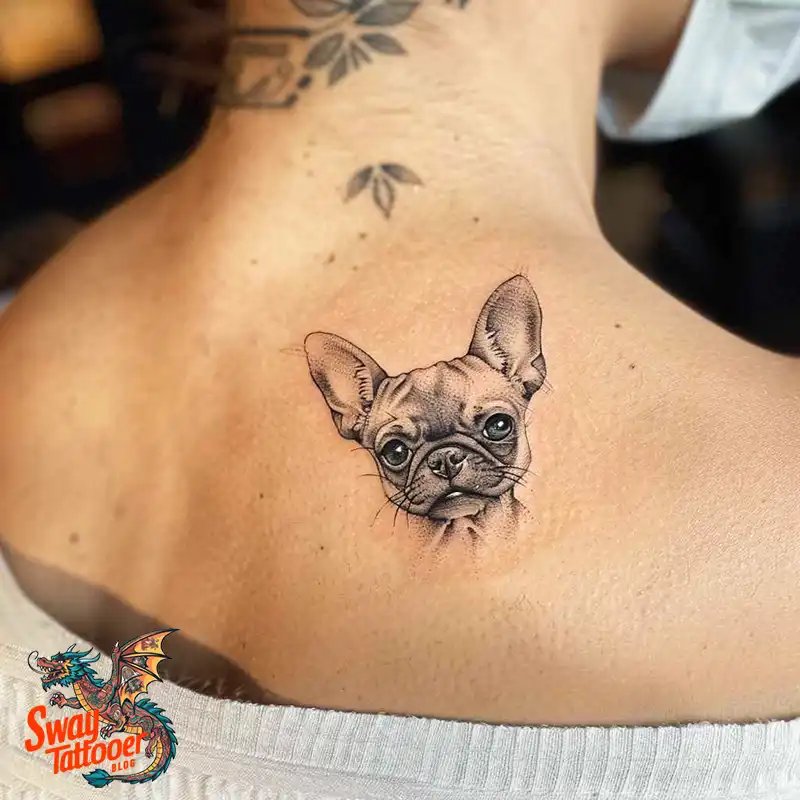
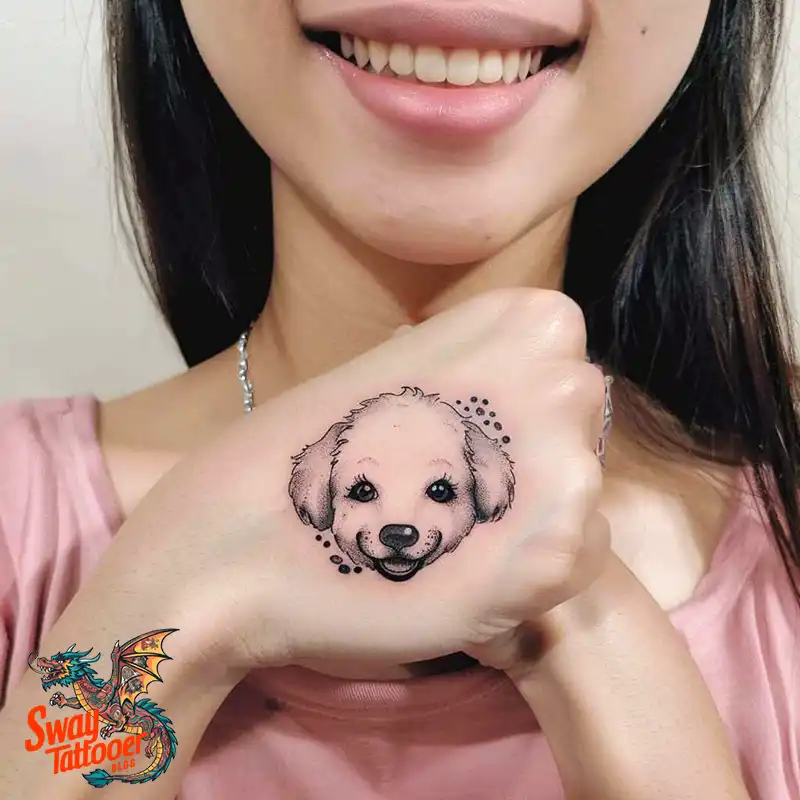
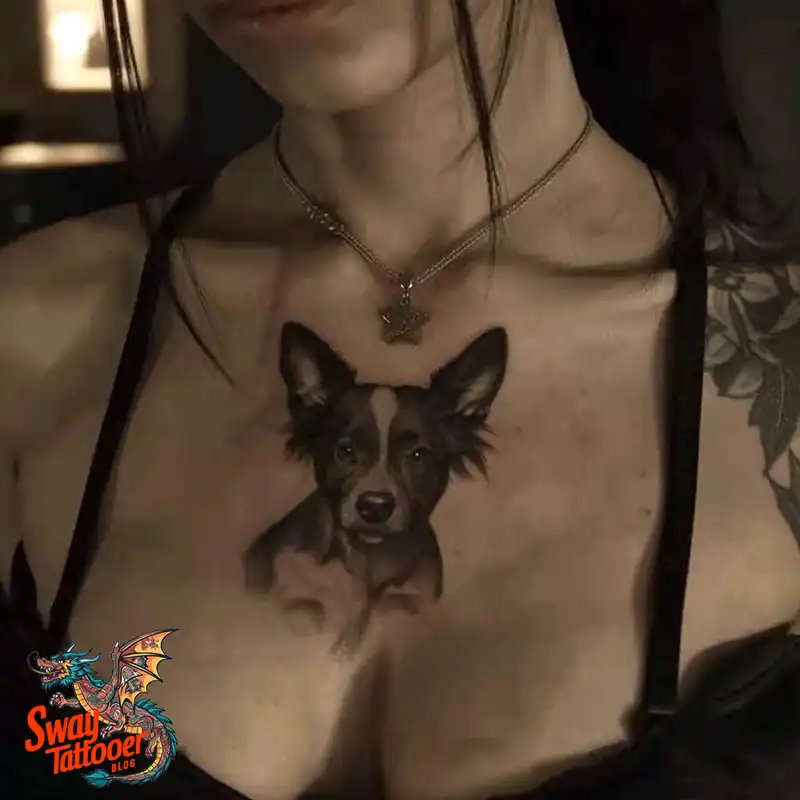
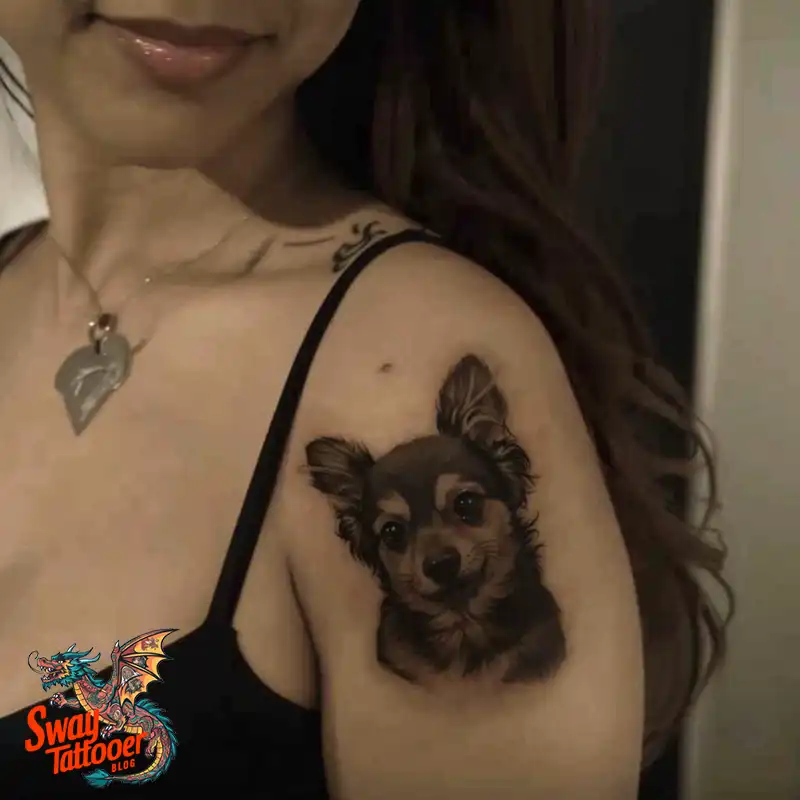
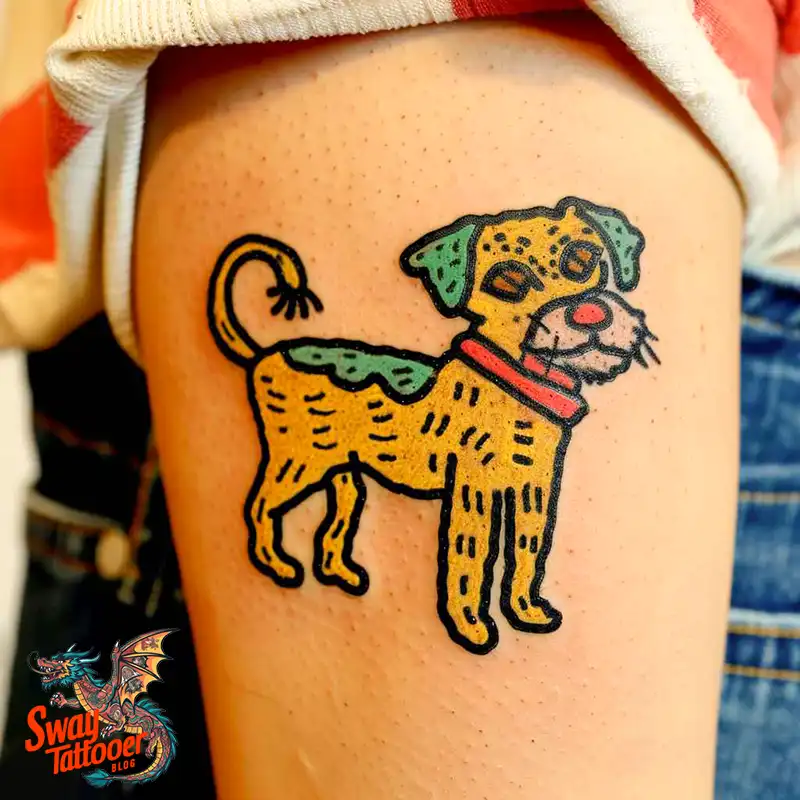
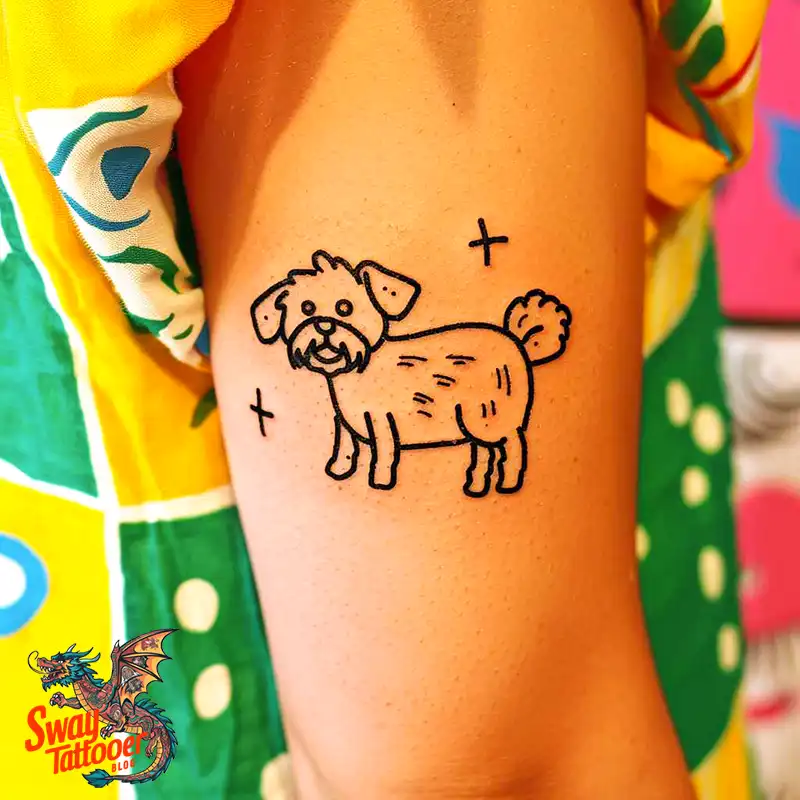
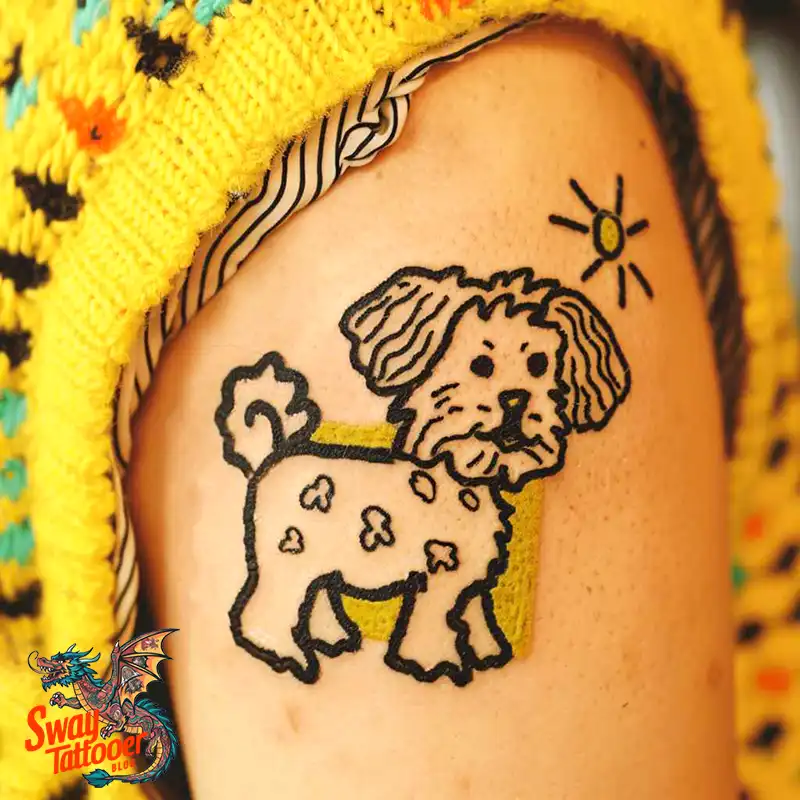
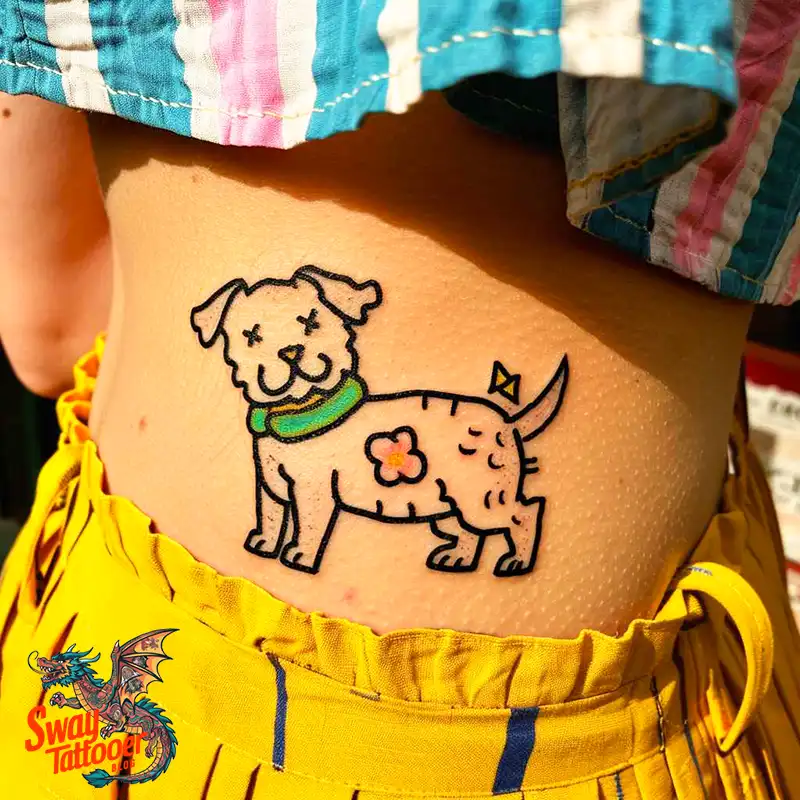

Some of the points we’ll cover include:
- Tales and Inspirations: Discover the stories behind this artwork and why these particular individuals have chosen to get dog tattoos.
- Popular Designs and Styles: From minimalist line drawings to detailed, hyper-realistic portraits, the most popular styles of dog tattoos are discussed here, along with what makes each one special.
- Symbolism and Meanings: Look into the deeper meanings and symbolism that most associate with dog tattoos and find out how these reflect values and emotions upon the wearer.
- The Tattooing Process: Understand what to expect from the process of getting a tattoo, like picking the right artist and necessary aftercare tips.
- Cultural Perspectives: Perceive how other cultures view dogs and their imagery in tattoos, citing particular traditions or beliefs that stand apart.
- Controversies and Ethical Considerations: Discuss the controversies in ethical discussions regarding pet-related tattoos, from animal tattoos-they do exist-to debating tattoos on deceased pets.
Come and embark on this journey with us, as we celebrate the love, loyalty, and legacy of dogs through the timeless art of tattoos. Whether you are a tattoo enthusiast or a dog lover, or simply interested in this fascinating trend, find something here for every individual. Let’s dive in and find how this ink in our skin can forever immortalize the paws on our hearts.
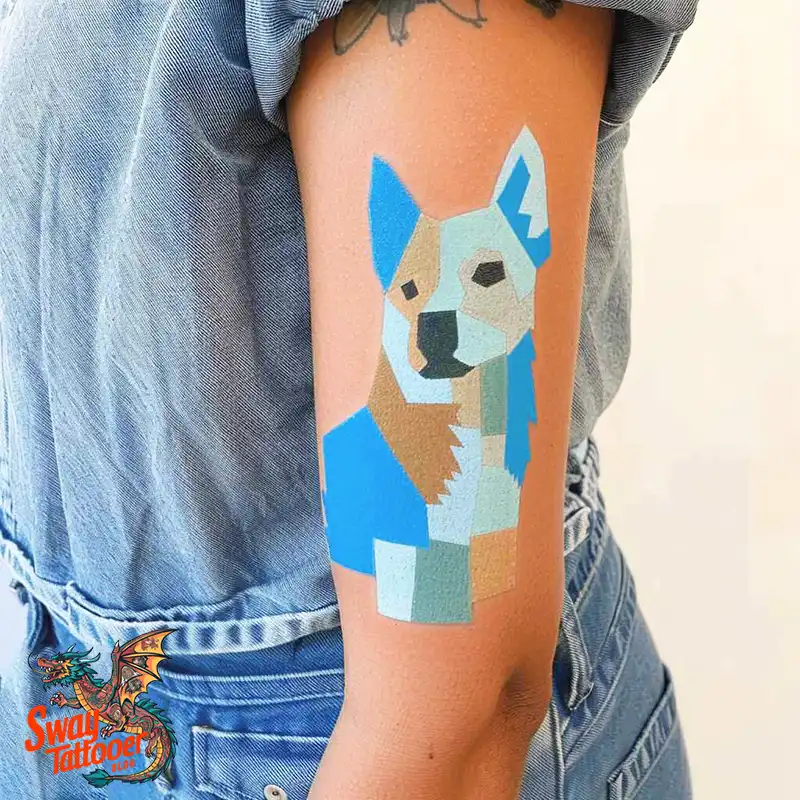
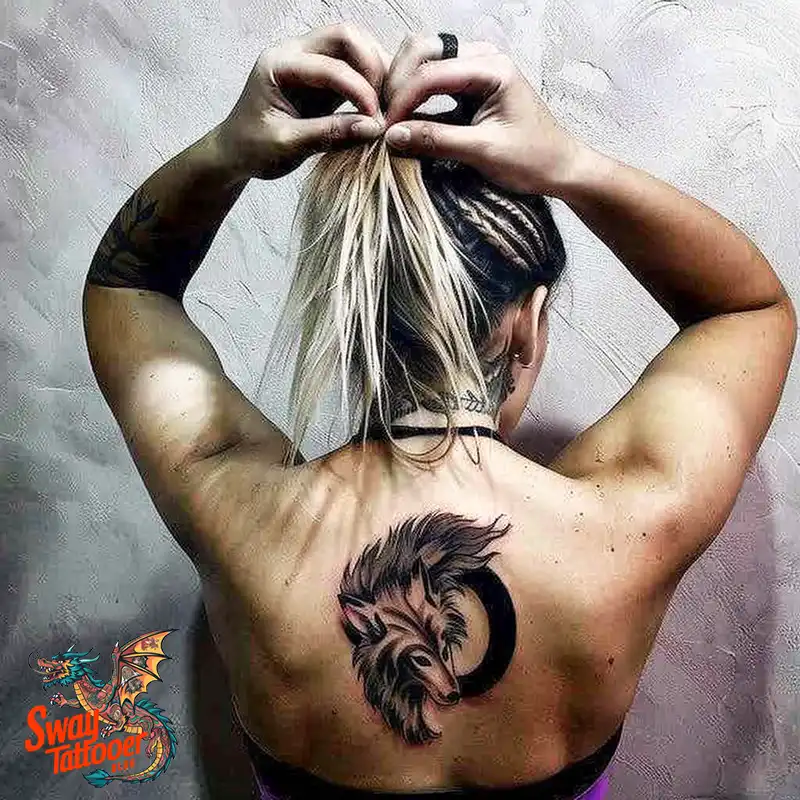
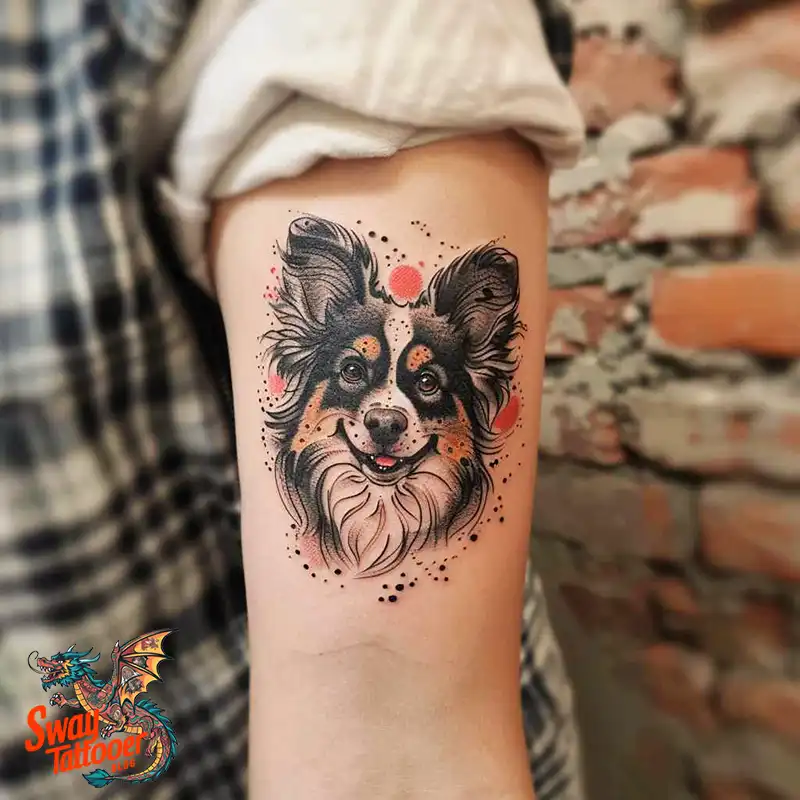
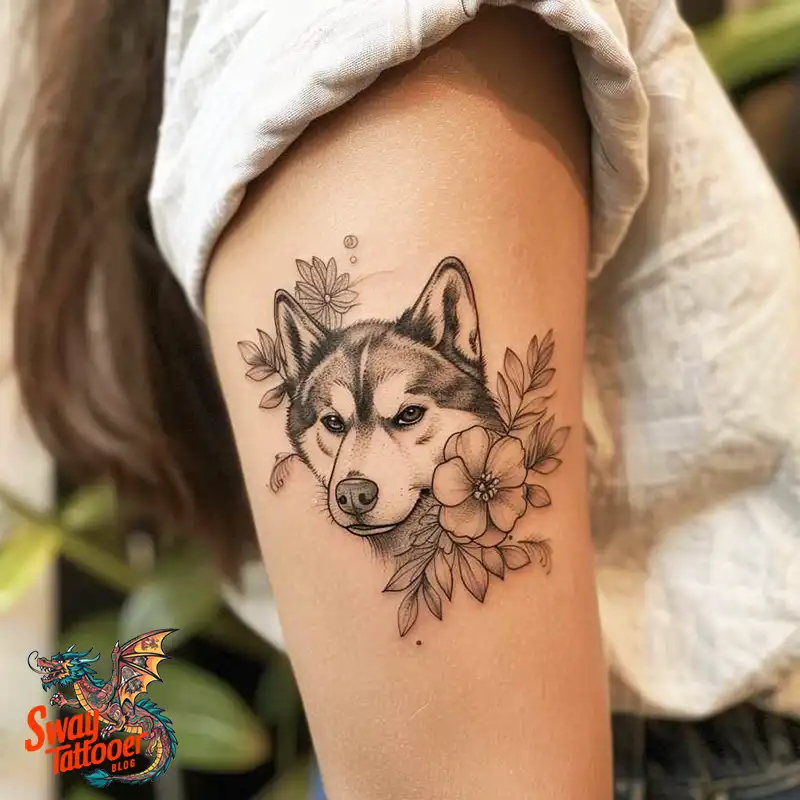
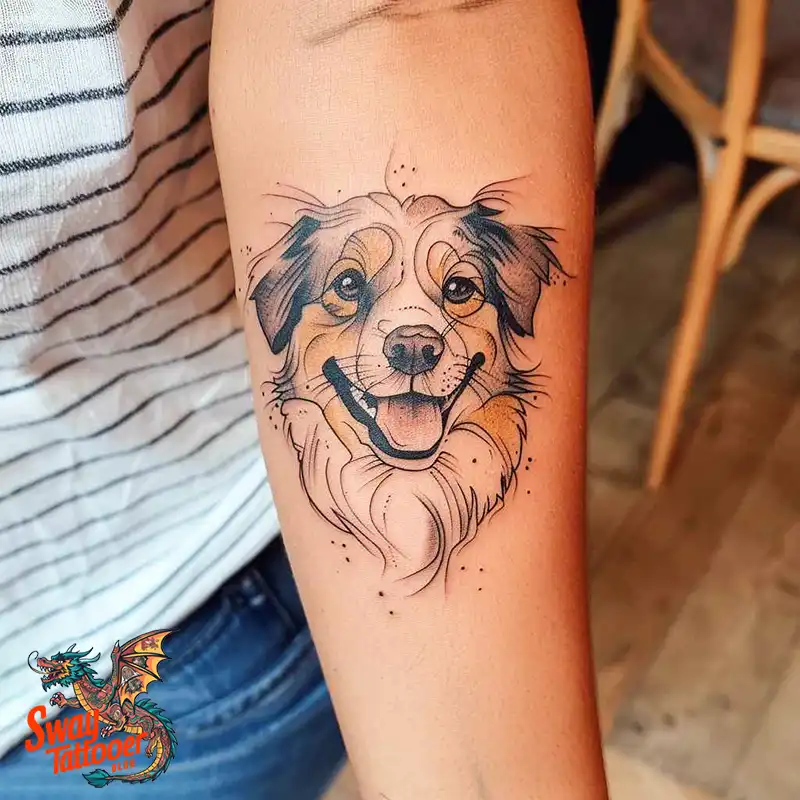
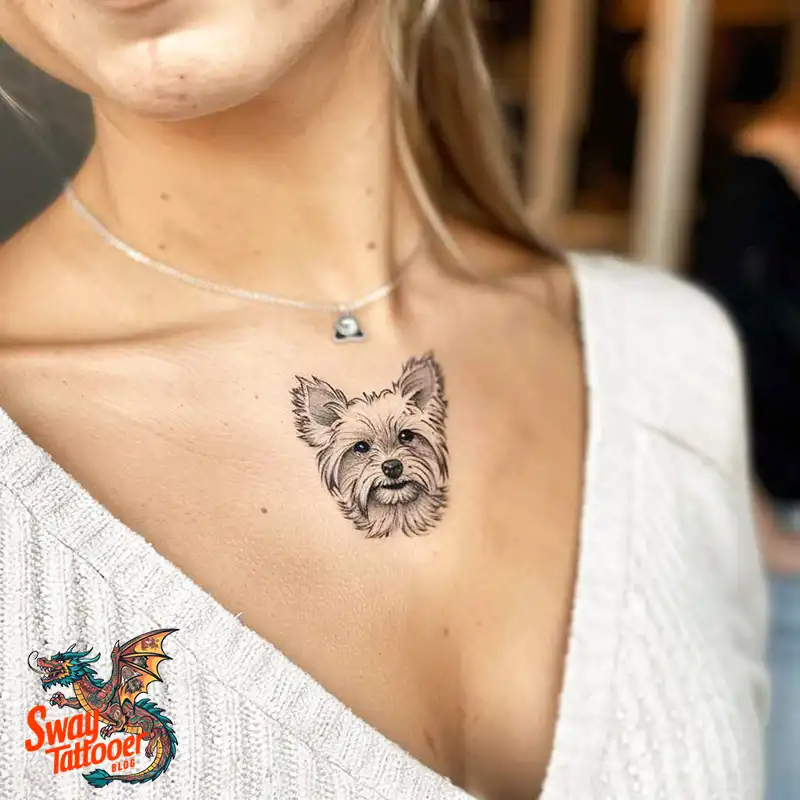
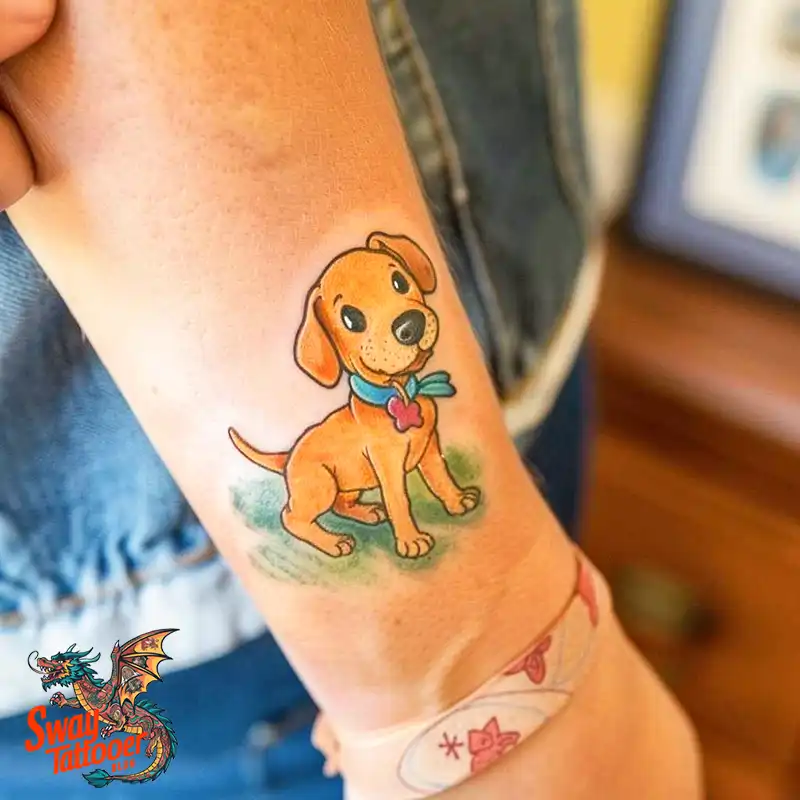
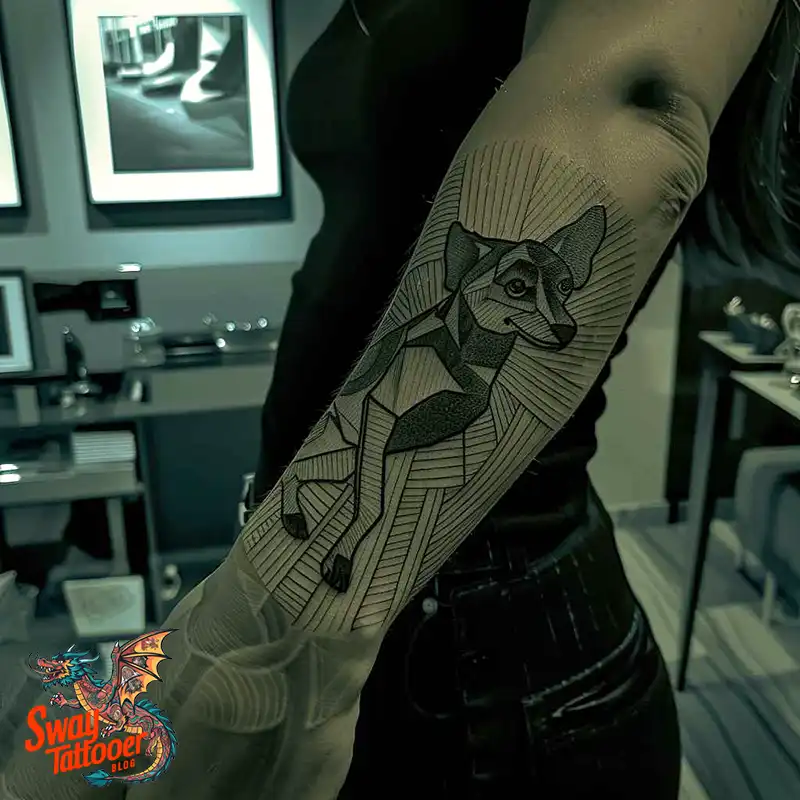
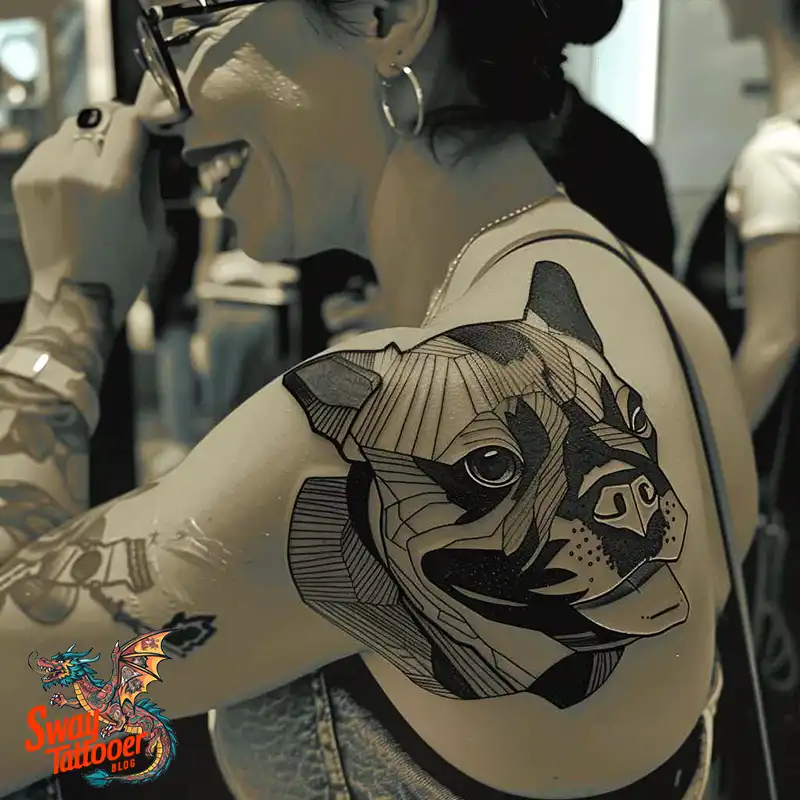
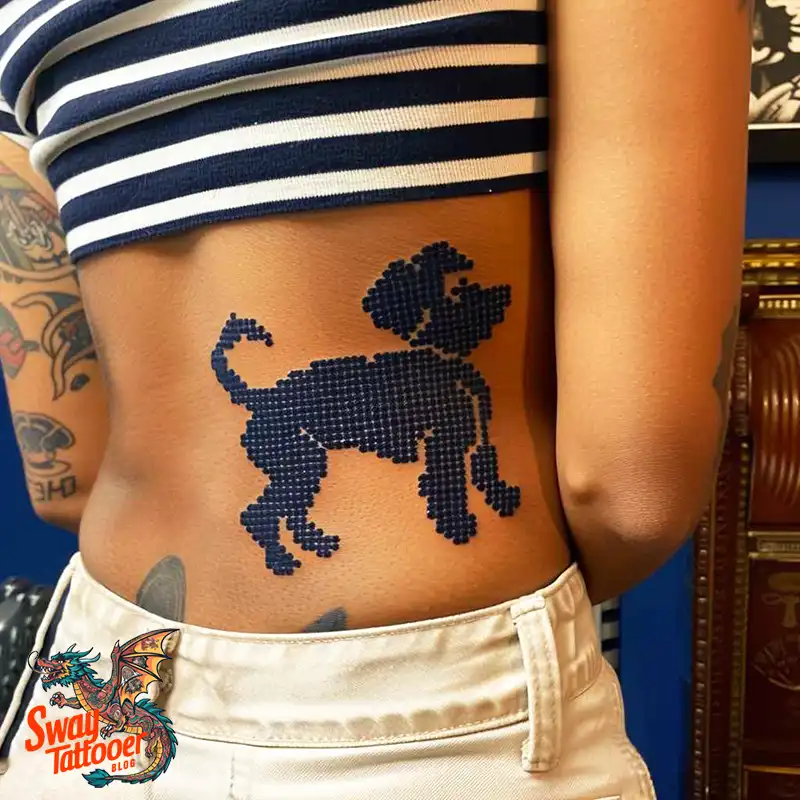
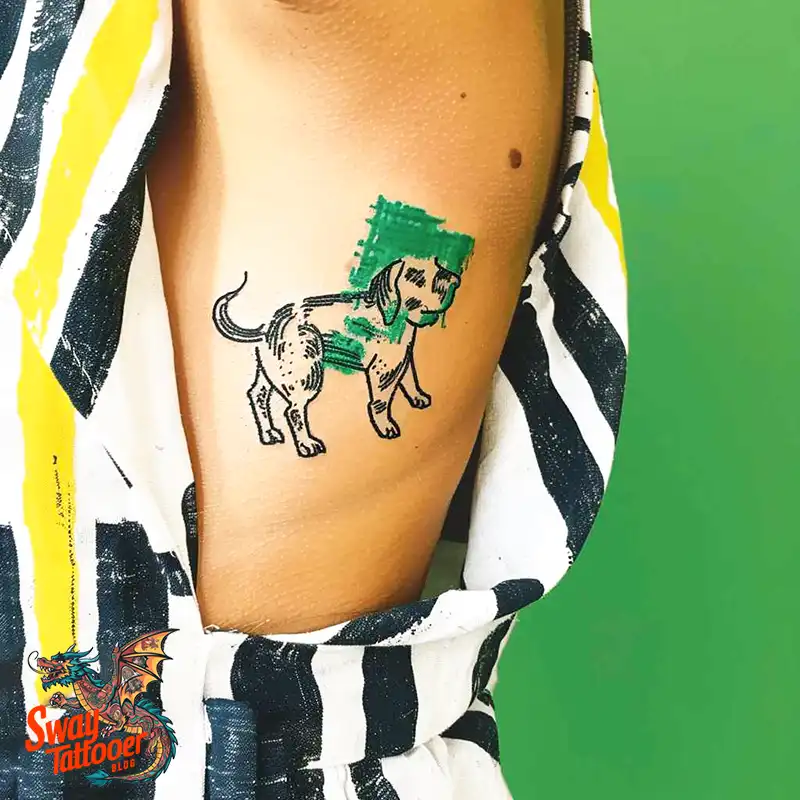
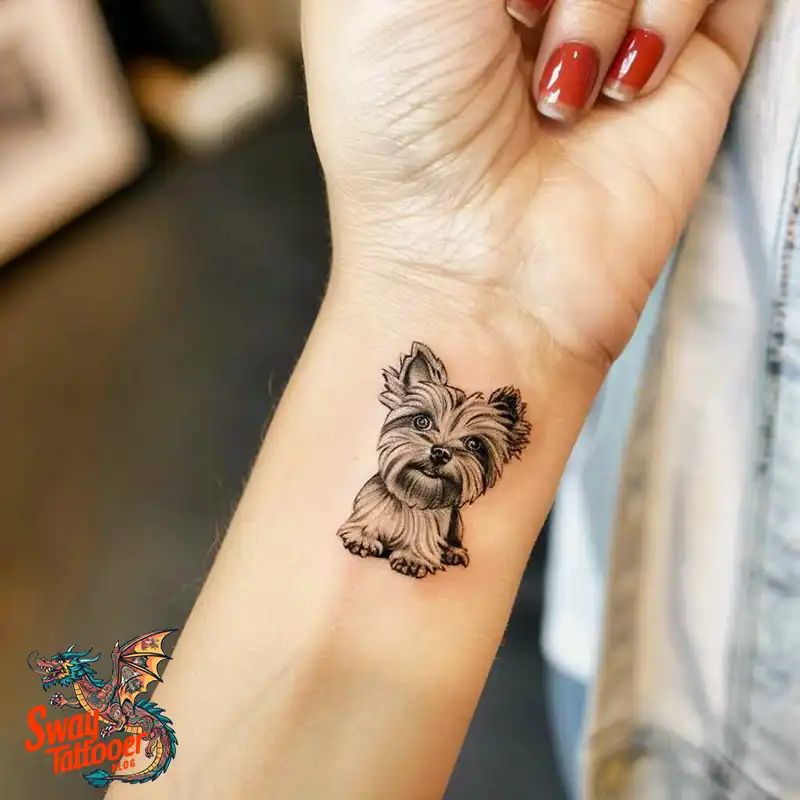
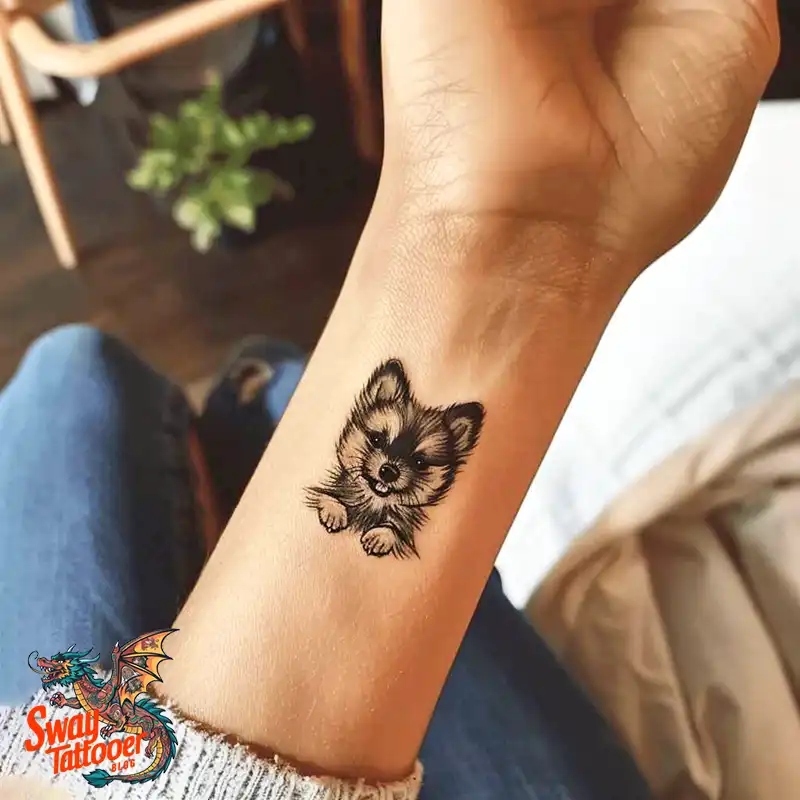
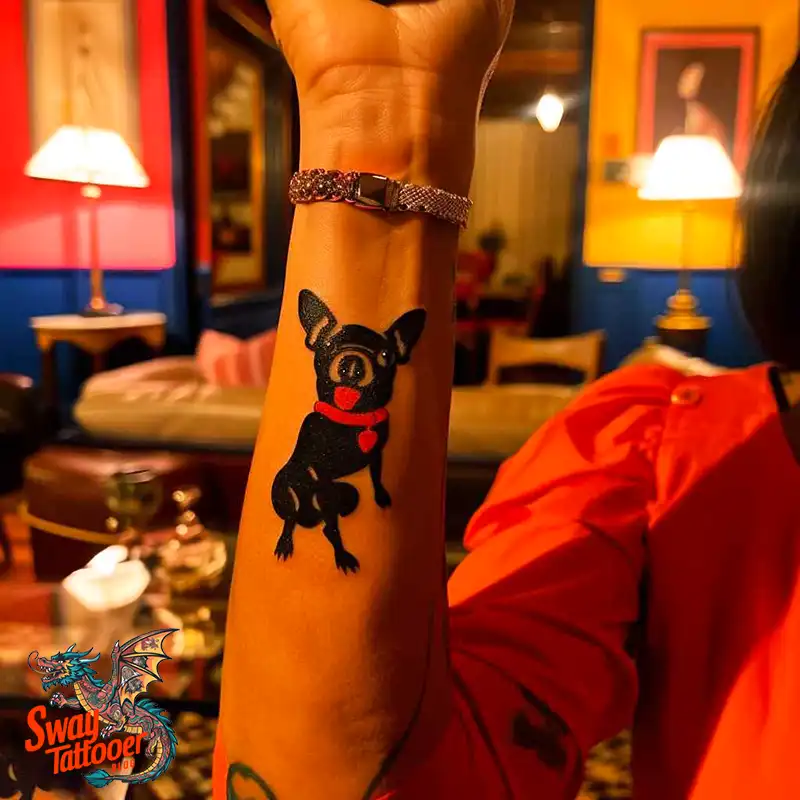
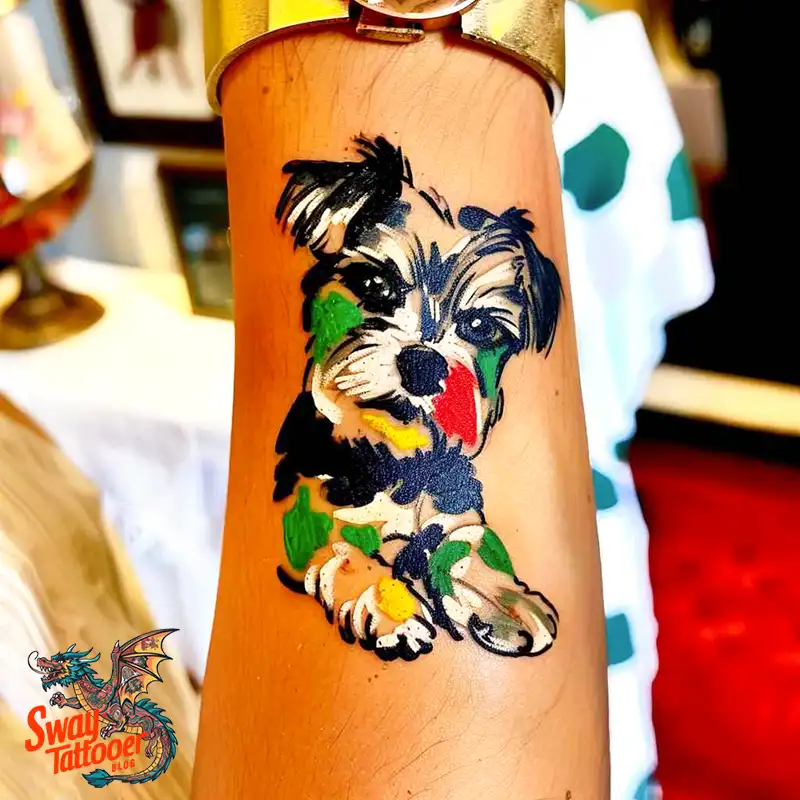
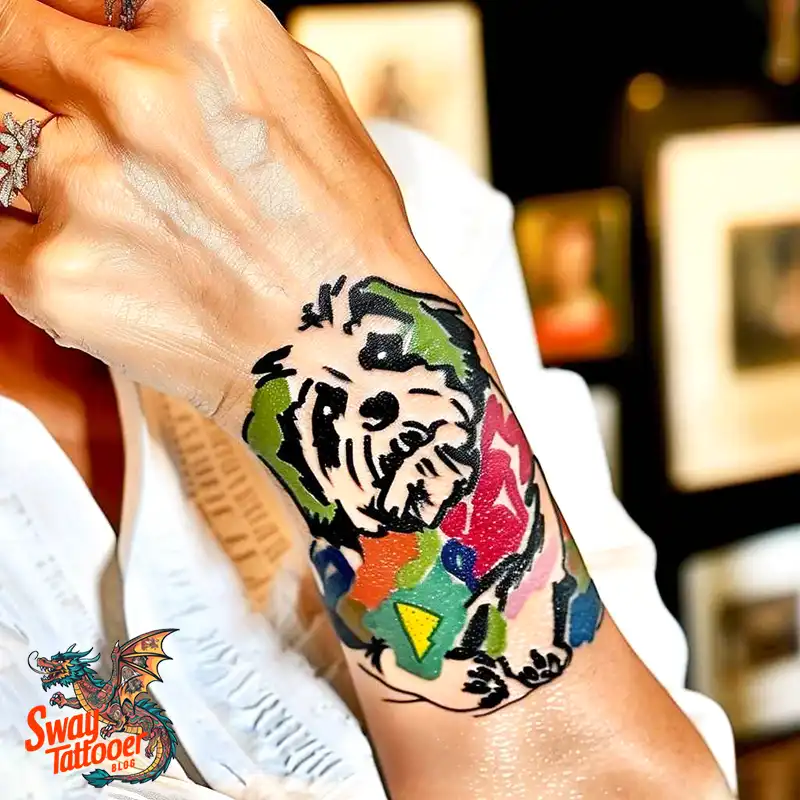
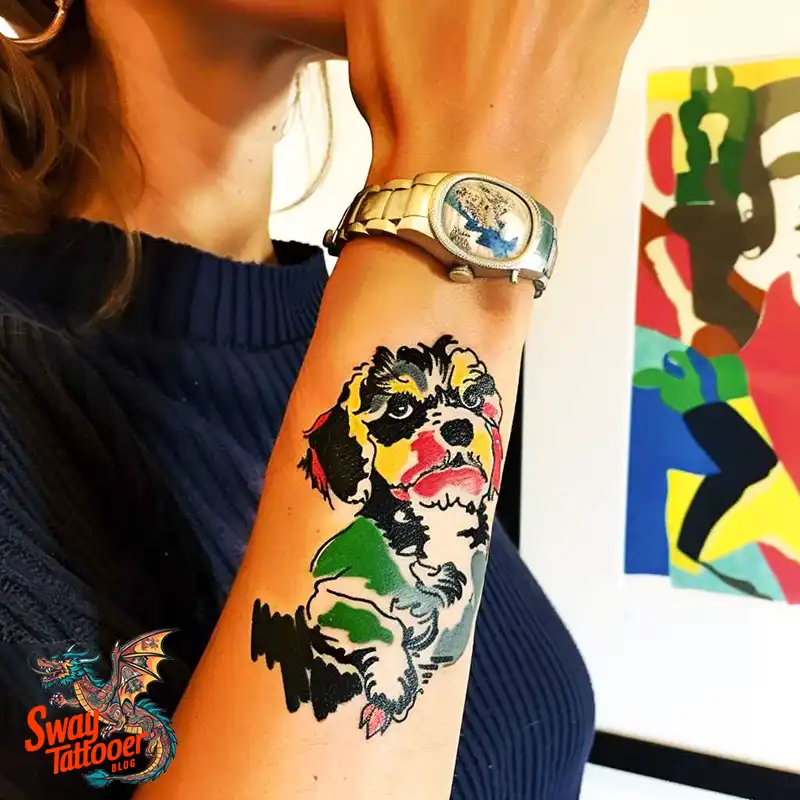
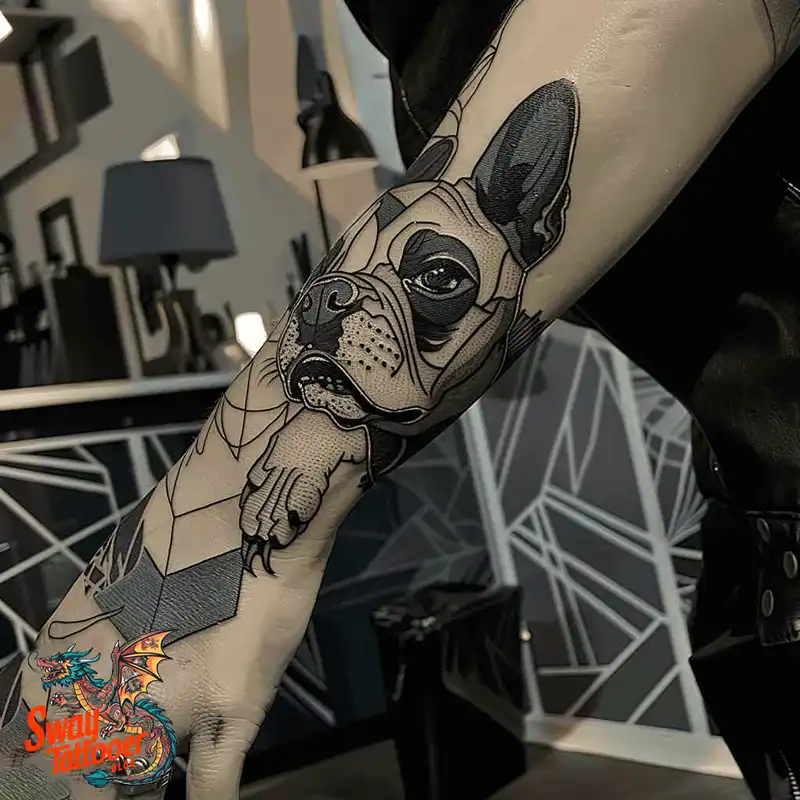
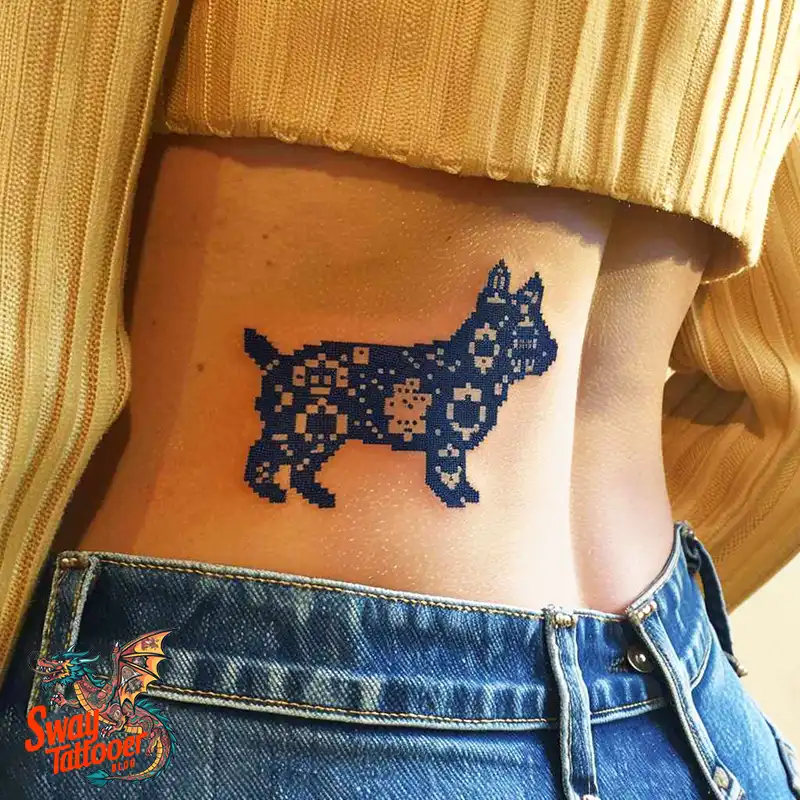
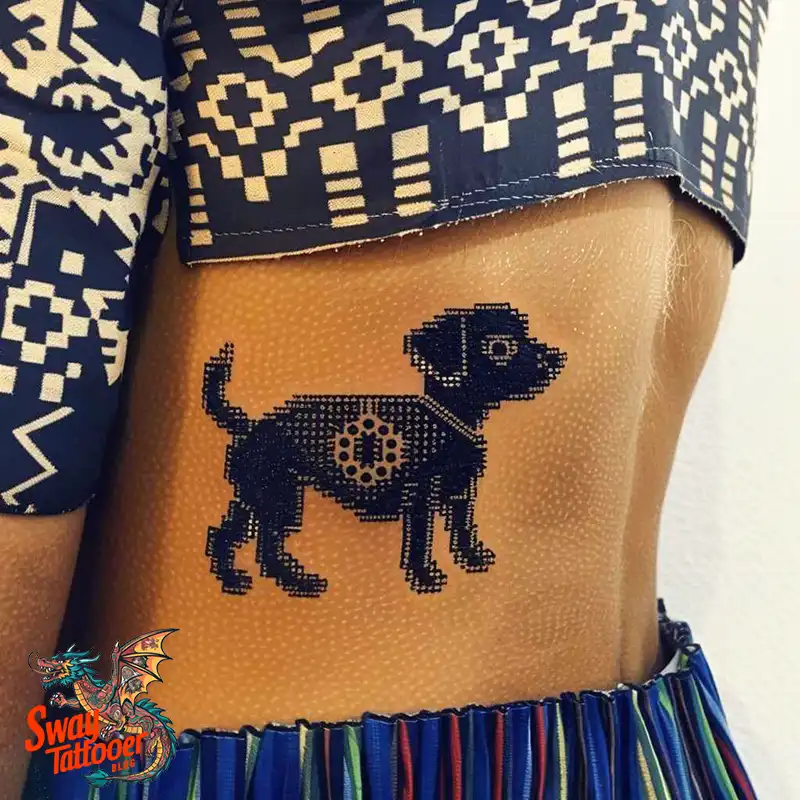
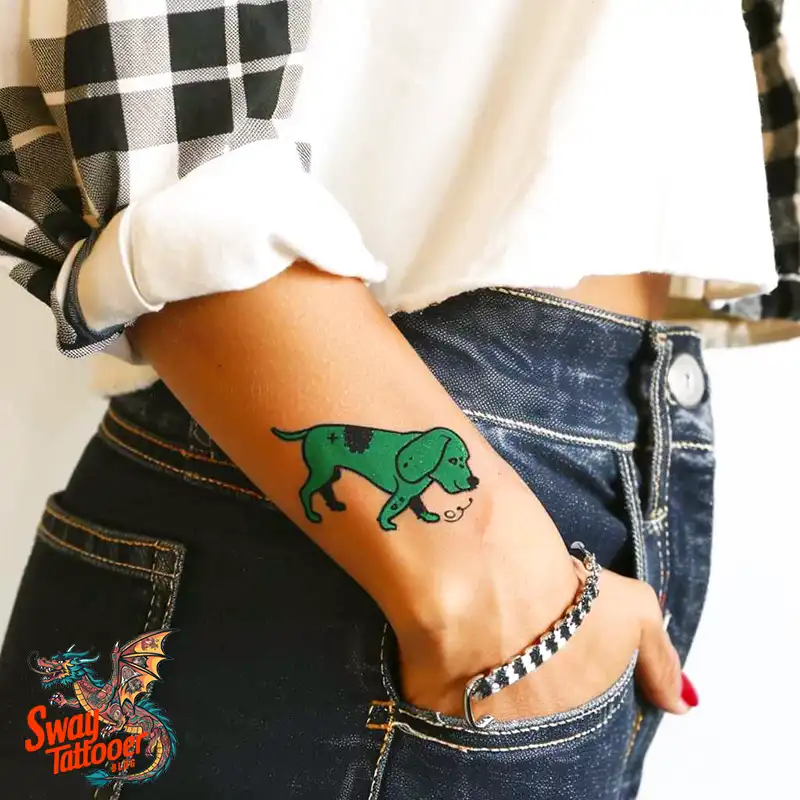
Dog Tattoos: A Deep Dive
The evolution of tattoos as body art has made them a very powerful medium for expression- for moments, memories, and passions that one feels strongly about. Of late, dog tattoos have emerged as a very interesting trend. Dog tattoos evoke the special bond between humans and their canine companions. In this blog, we look into the meaning, varieties, design inspiration, and things to consider while opting for a dog tattoo.
Meaning of Dog Tattoos
Dog tattoos are more than body art; they signify an unbreakable bond and constant loyalty between the dog and the owner. To others, dogs might mean more than just pets-family, best friends, and close confidants. Dog tattoos can be done for things such as:
- Memorials: to commemorate the life of your dearly loved pet who crossed the rainbow bridge.
- Celebrations: events like adoption anniversaries or any other special life milestones that occurred in your life with the dog.
Pride and Love: A way to express the joy and companionship dogs bring into the lives of their owners.
Dog Tattoo Styles
Dog tattoos are an expression of different styles and designs that one may do to pay tribute to a canine friend. Popular types include:
Realistic Portraits
It shows the exact likeness of a dog in detailed fur texture, colour of eyes, expression, among other things. The realistic portraits could either be black and grey or vibrant in color.
Minimalist Designs
The minimalist tattoos are designed through the use of clean lines and simple shapes to express a dog. These tattoos can be small and subtle-looking and thus can easily fit in any area of the body.
Silhouettes
Silhouette tattoos present the outline of the dog’s figure, usually in a single color. It’s strong and simple-a way to show your furry buddy.
Paw Prints
The tattoos of paw prints can be very personal; they can reproduce the real print of the dog’s paws. This is another adorable and touching alternative for dog lovers.
Abstract and Artistic Interpretations
These tattoos are more creative expressions of dogs, using unusual colors, patterns, and abstract forms to represent the essence of a dog rather than the exact appearance.
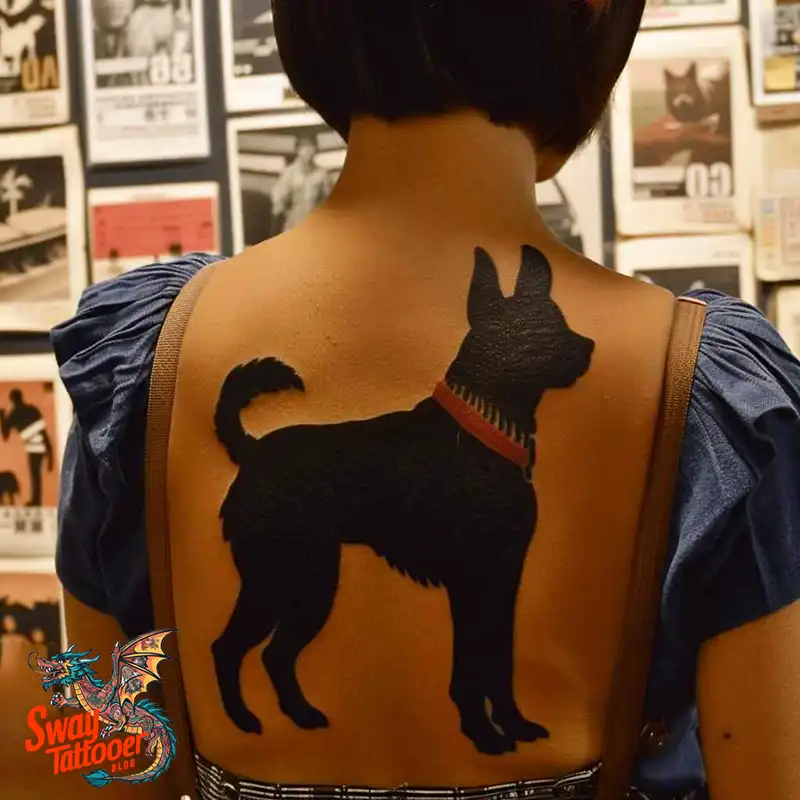

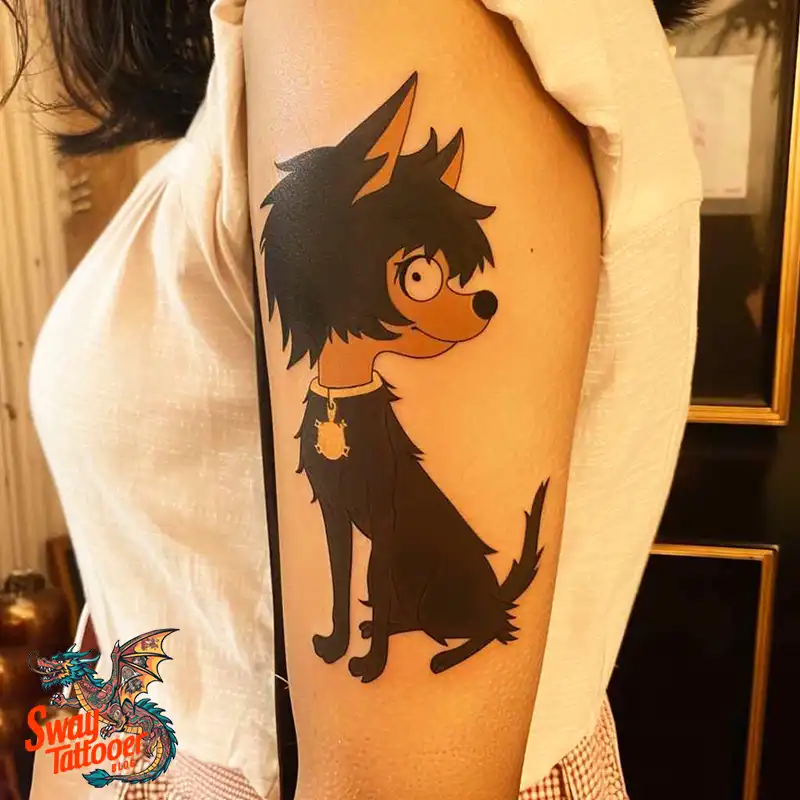
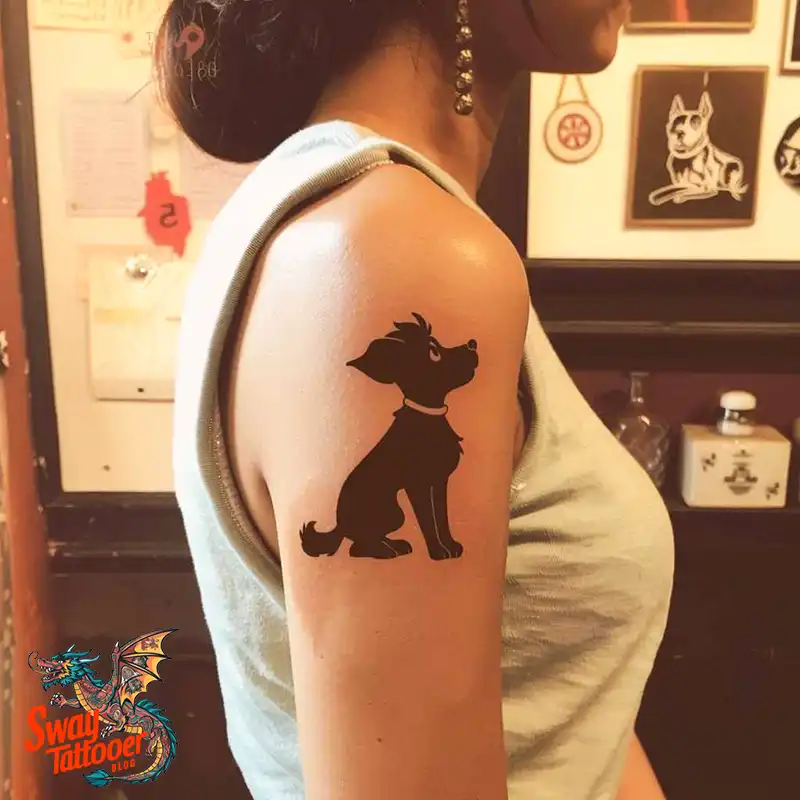
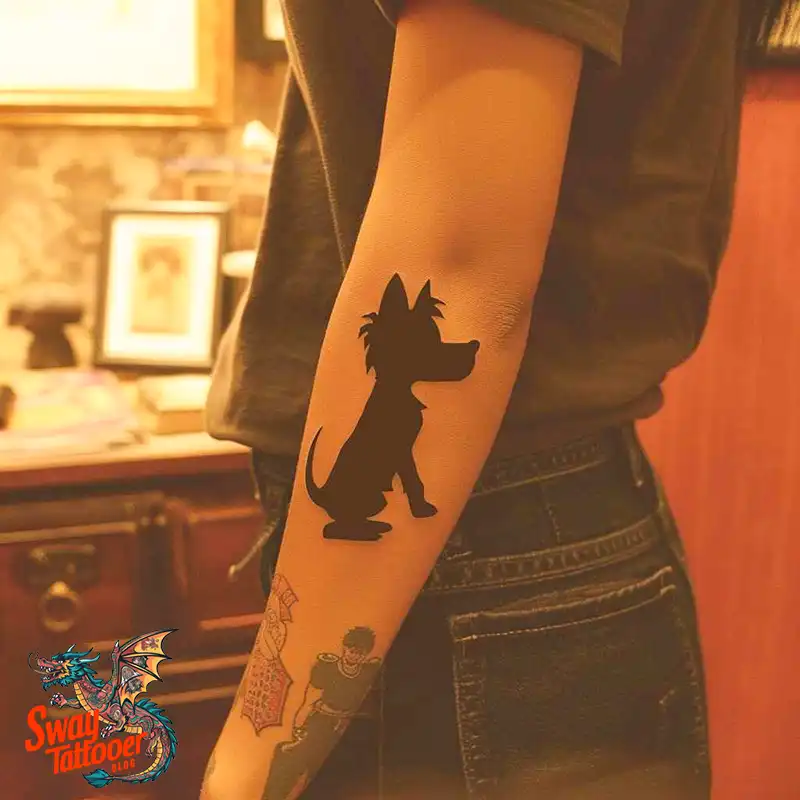
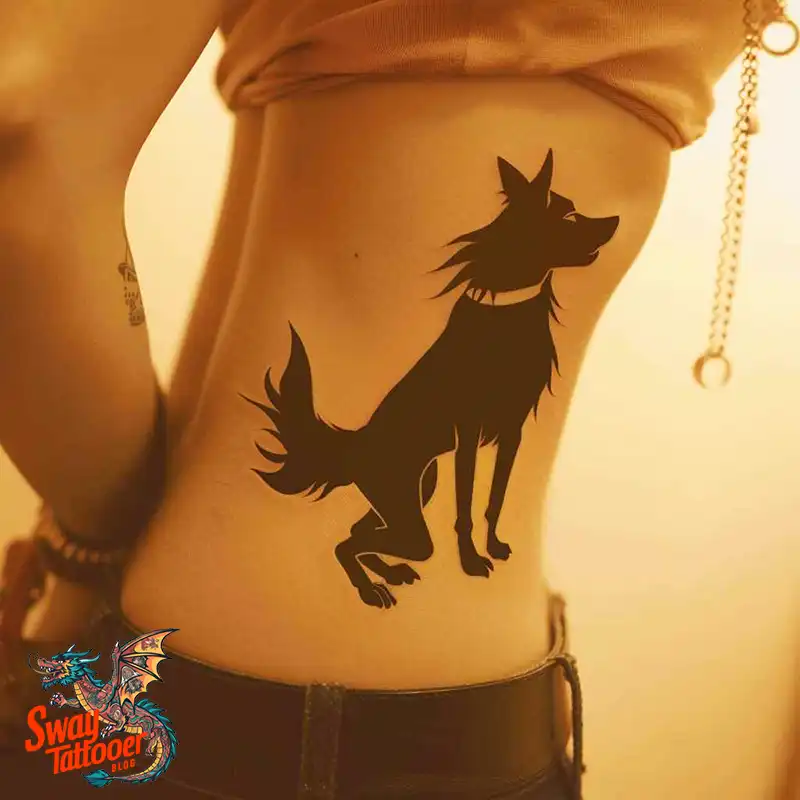
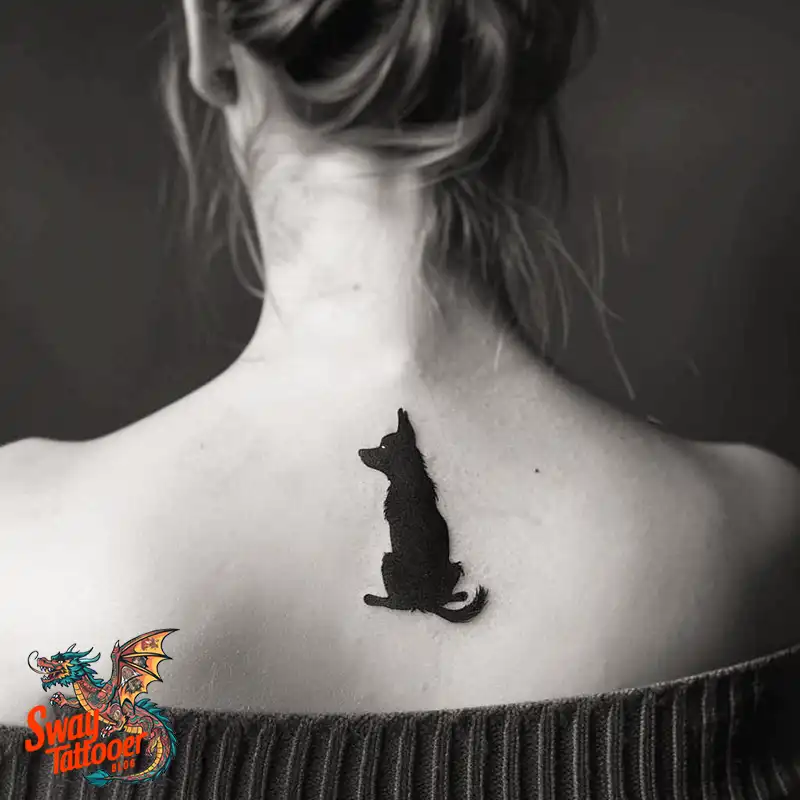
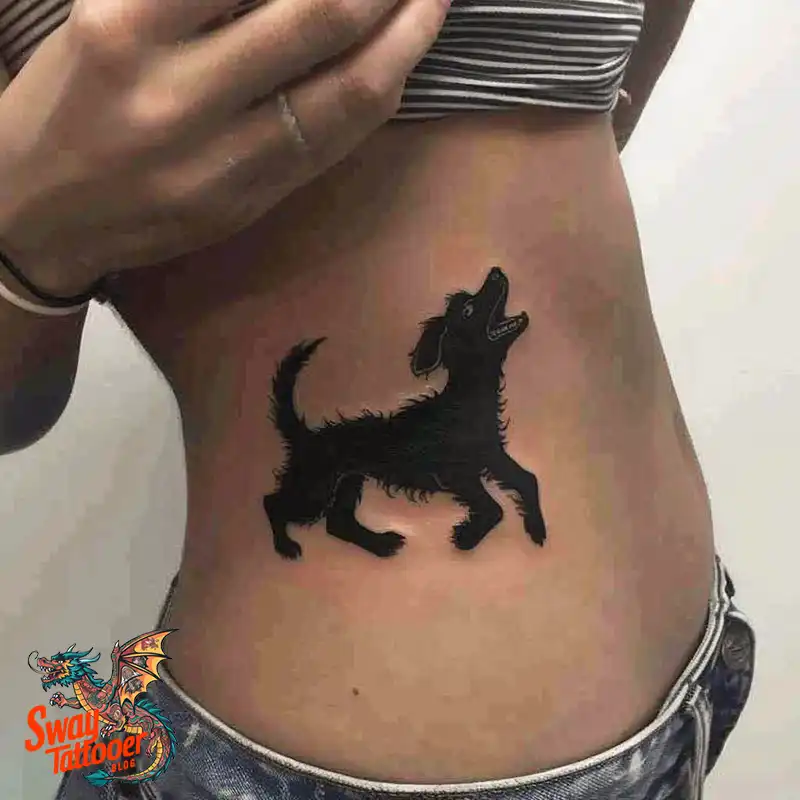
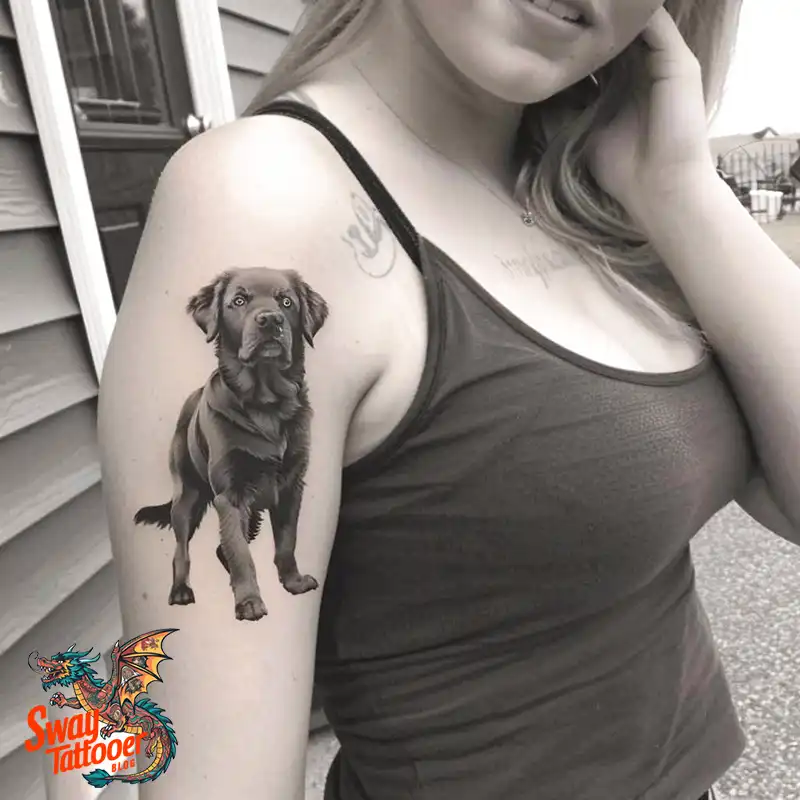

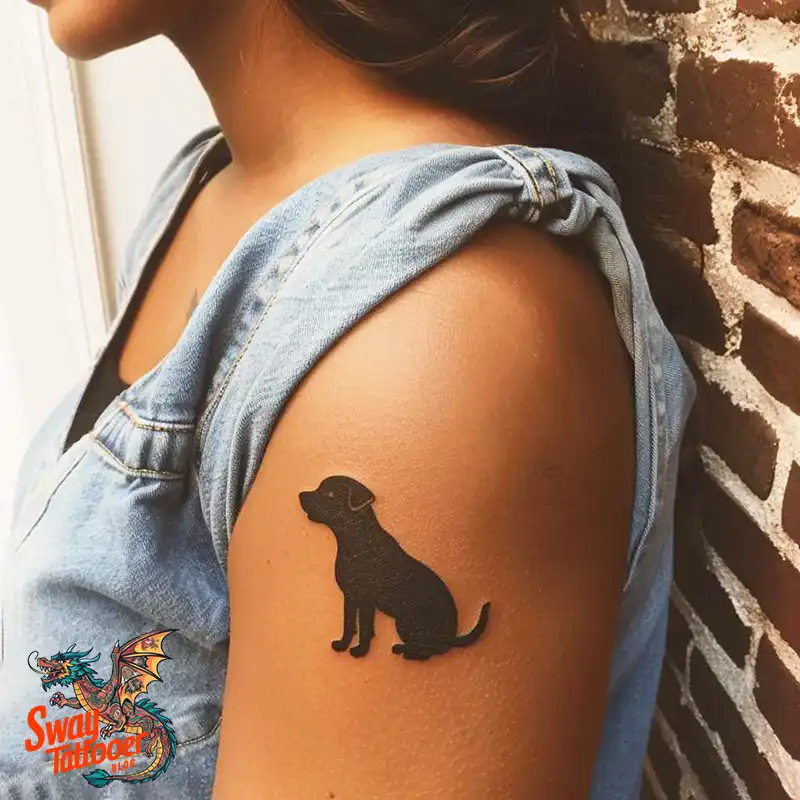
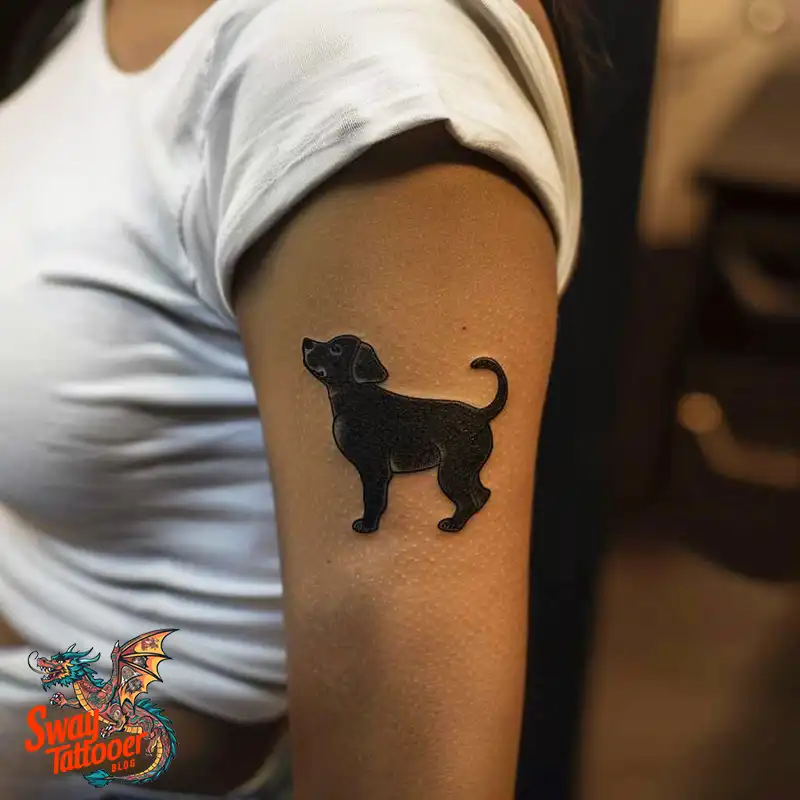
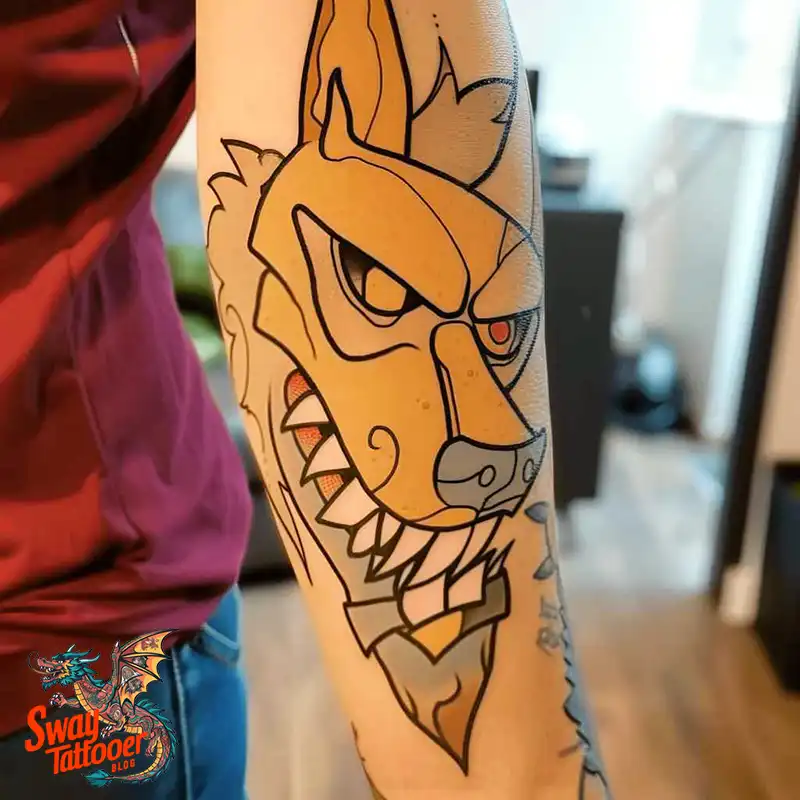
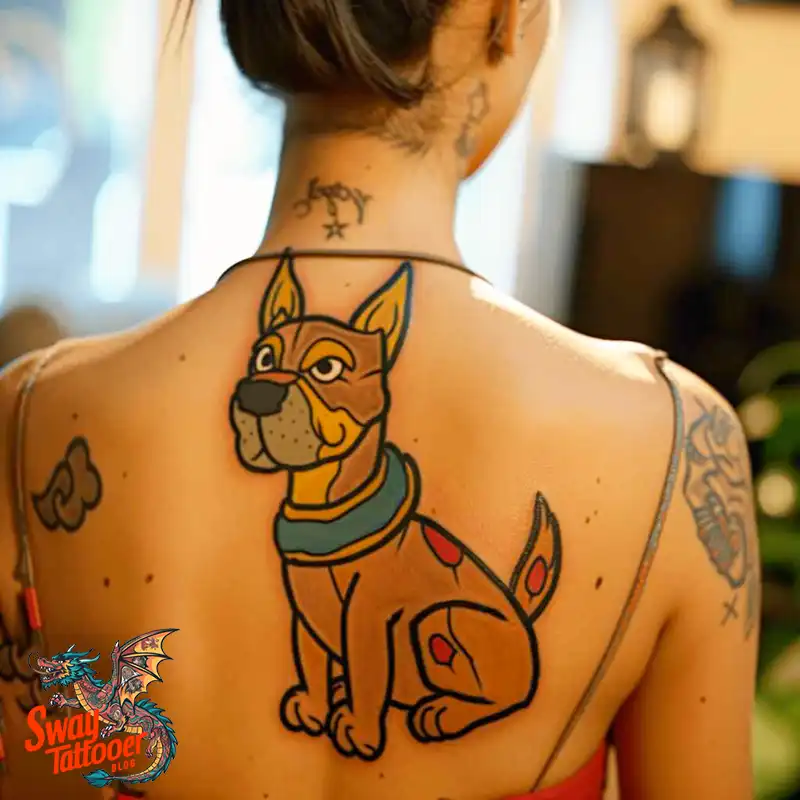
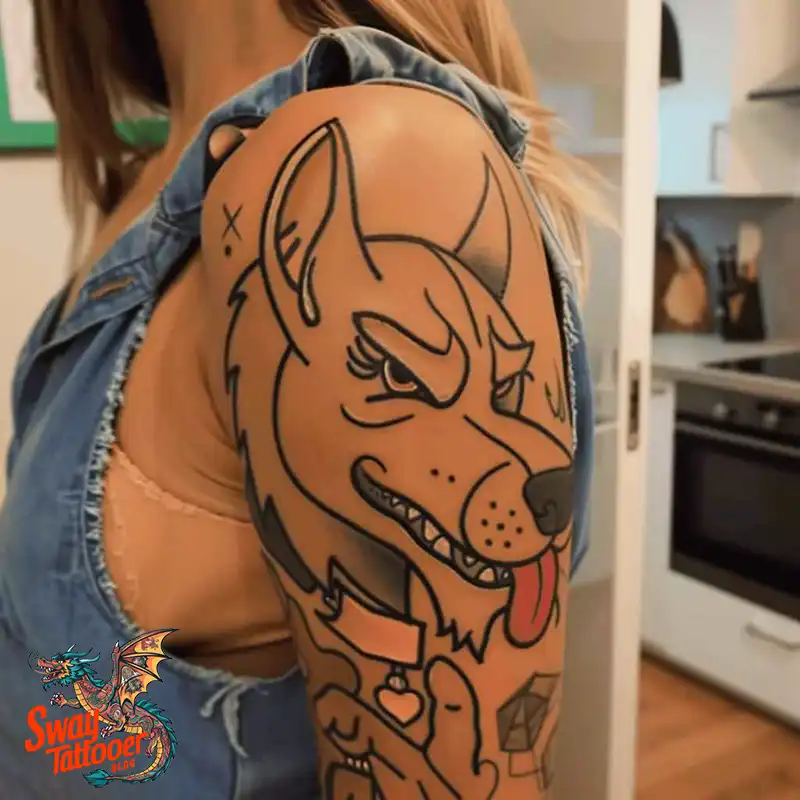

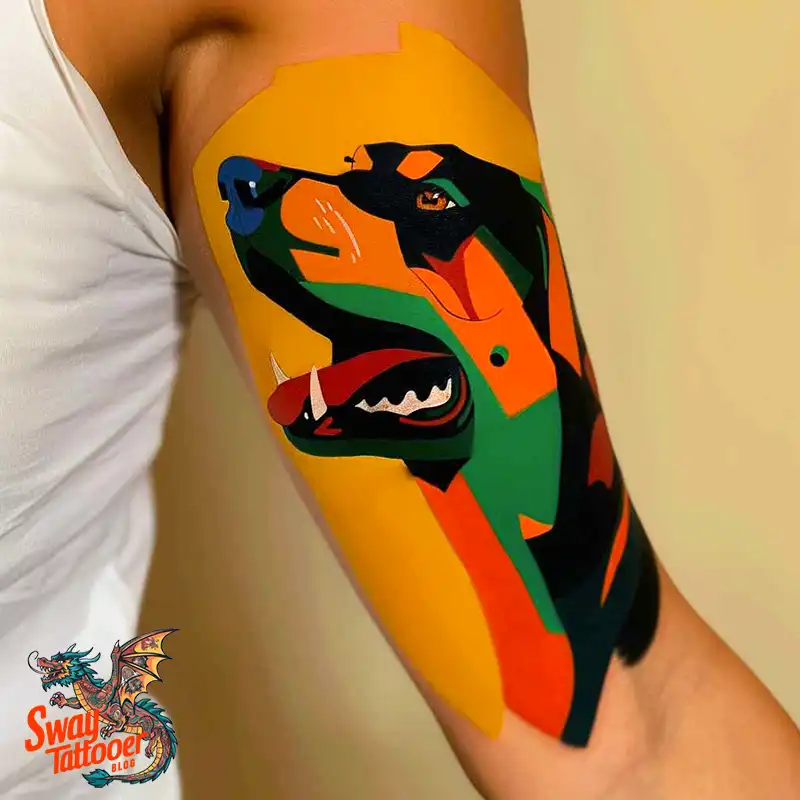
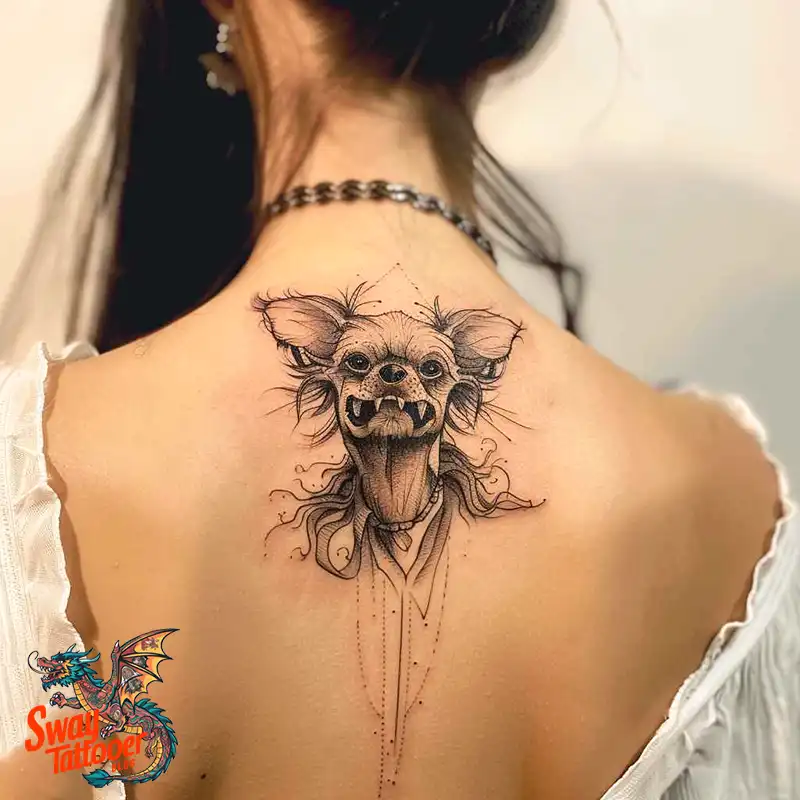
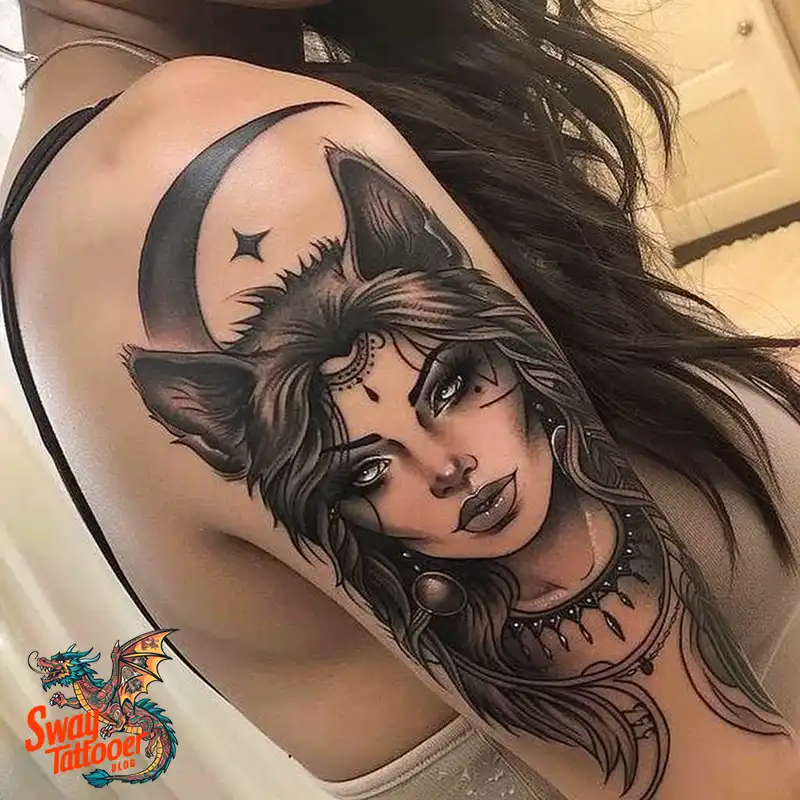
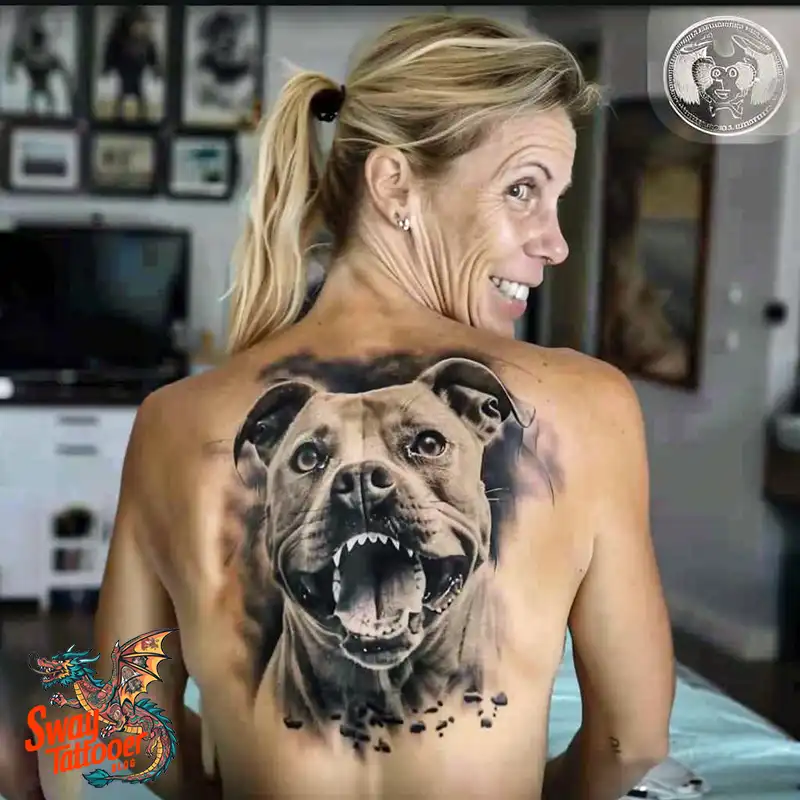
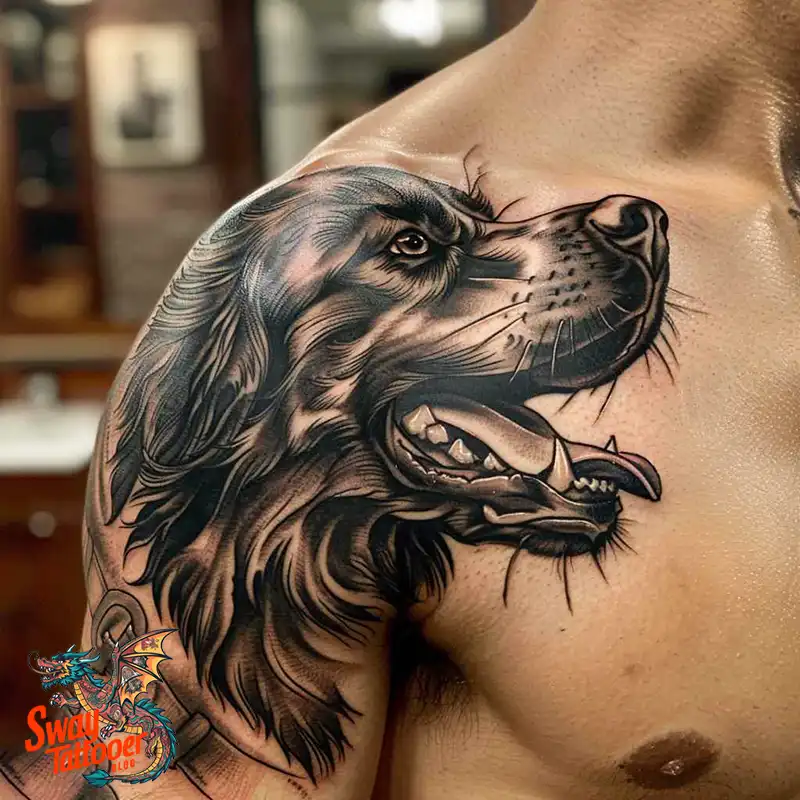
Design Inspirations for Dog Tattoos
Finding a design for a dog tattoo can be as exciting as it is daunting. Here are some inspirations to consider:
Personal Photos
It ensures the tattoo is an actual representation of one’s dog. Tattooists can paint these photographs into fantastic forms of body arts.
Artistic Styles
Consider any such artistic style that resonates with you, for instance, watercolor, geometric, or traditional. Each may bring a different aesthetic and emotional appeal.
Symbols and Icons
Adding symbols to your design, such as hearts, bones, or an infinity symbol, may give additional weight and meaning to your dog tattoo. These secondary elements may complement your design and push the meaning further.
Incorporation of Text
Your dog’s name, a particular date, or a quote that means a lot may be incorporated into your design. Fonts and text placement may also change w.r.t. the nature of the design theme.
Things to Consider Before Getting a Dog Tattoo
Getting a dog tattoo is one of those decisions that should be done with ample thought and deliberation. Basic considerations include:
Picking an Artist
You need to select a tattoo artist who has experience working on the style you want. Take a look at portfolios, read reviews, and possibly even consult with the tattoo artist prior to making a decision.
Placement of the Dog Tattoo
Consider the placement, which might be on the arm, chest, back, or leg. Reflect upon the question of visibility, size, and personal pain thresholds associated with specific areas.
Size and Detail
The size of the tattoo can be a limiting factor for an artist concerning the detail he is able to put into it. For a very detailed portrait, one would want a larger tattoo so as to express nuances.
Emotional Readiness
Dog tattoos can be very emotional for many. Be prepared to bear this permanent reminder, and to make it a joyful and comforting presence in your life rather than one of sadness.
Aftercare
Your artist can provide specific aftercare instructions, but many stress cleaning, moisturizing, and protecting your tattoo from the sun as ways to keep it healthy and looking its best.
The dog tattoo is, in itself, a tribute to such beauty between two species. From celebrating your present, lively pup to remembering your recently deceased canine companion, a tattoo of a dog is an exceptional means of commemoration that is more permanent. If you pay due attention to design issues, artist selection, and emotional readiness, then this permanent work of art will be a source of joy for you and an honoring one of the special relationship that exists between you and your dog.
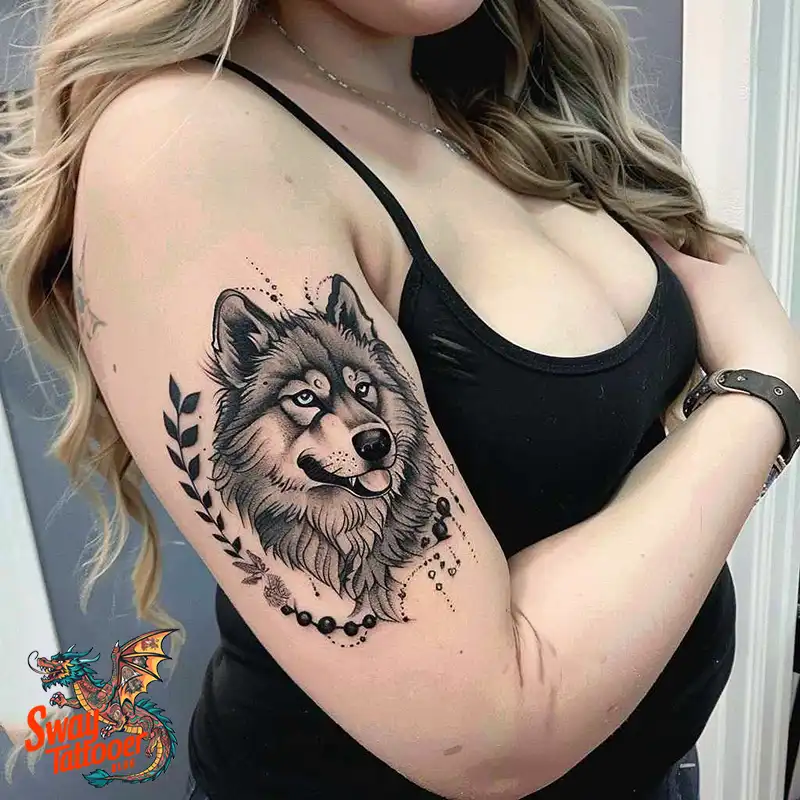
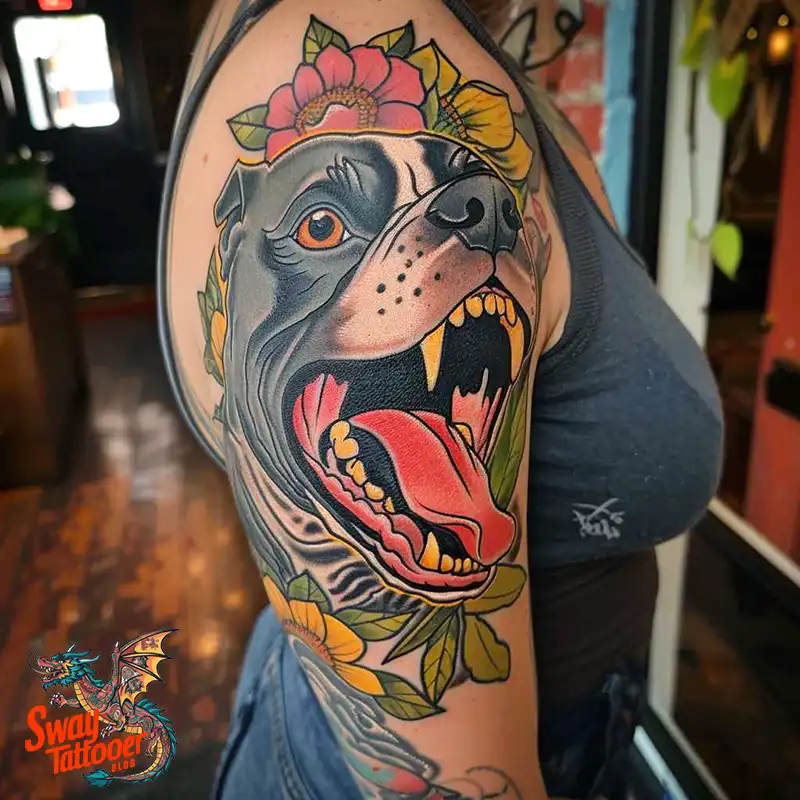
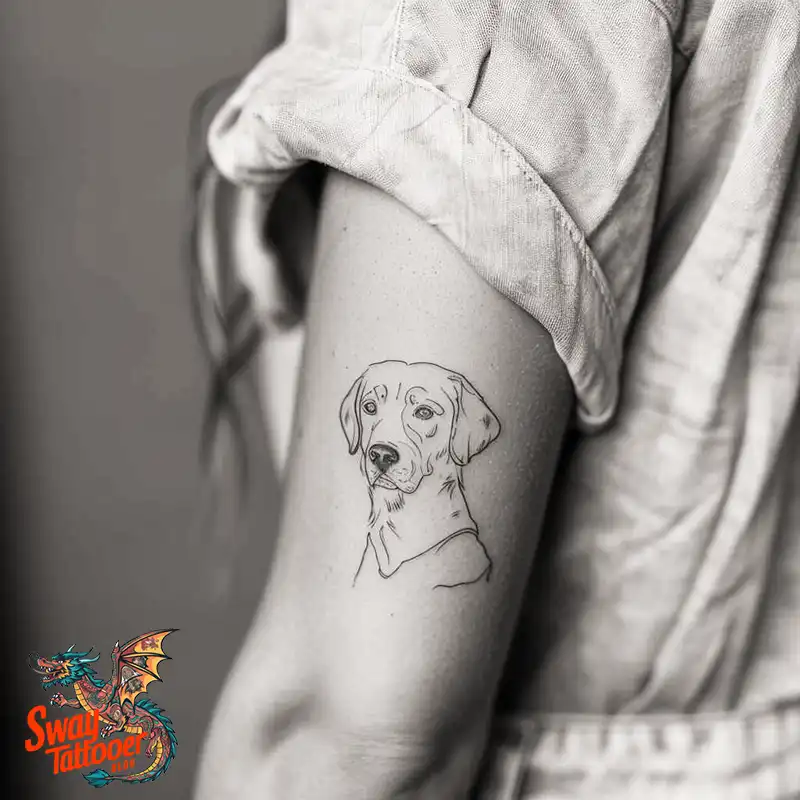
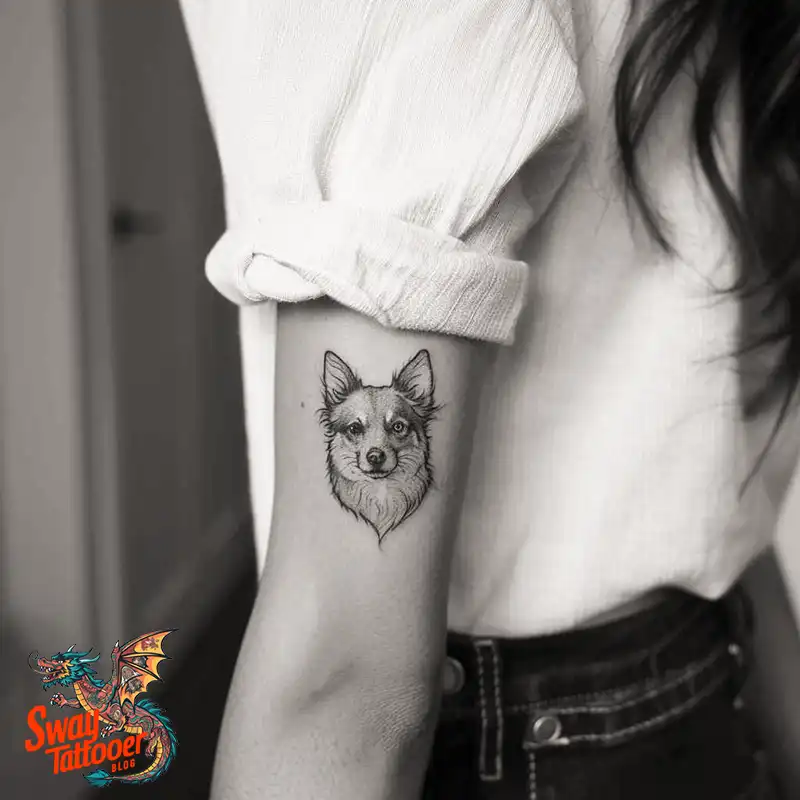
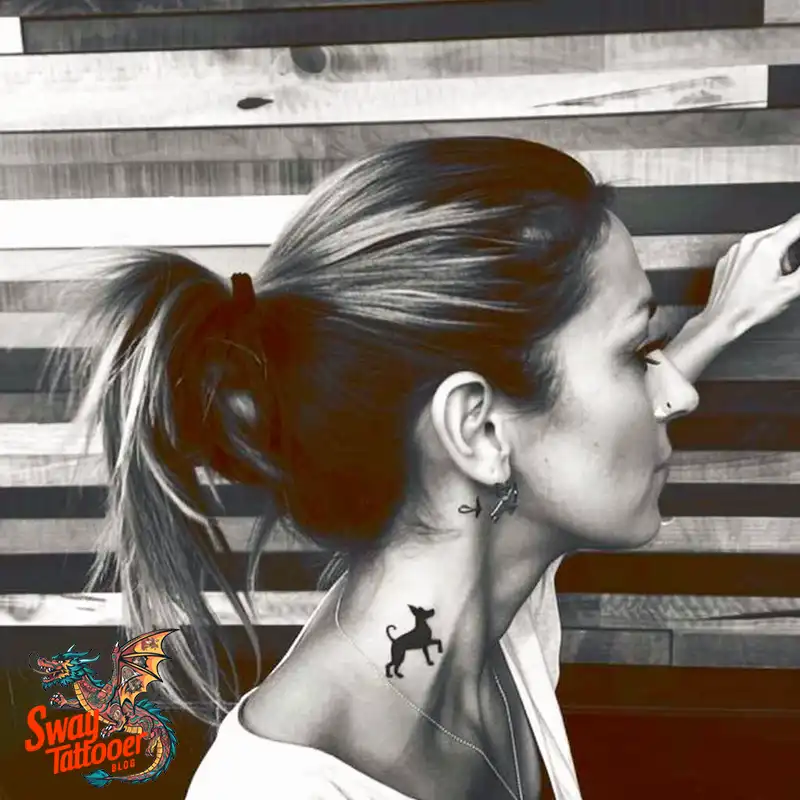
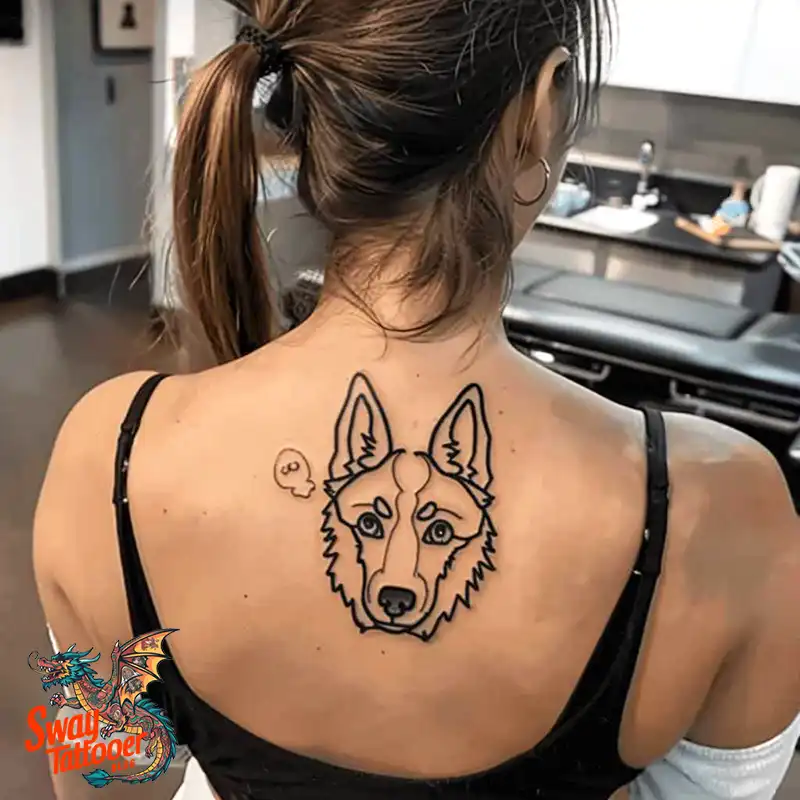
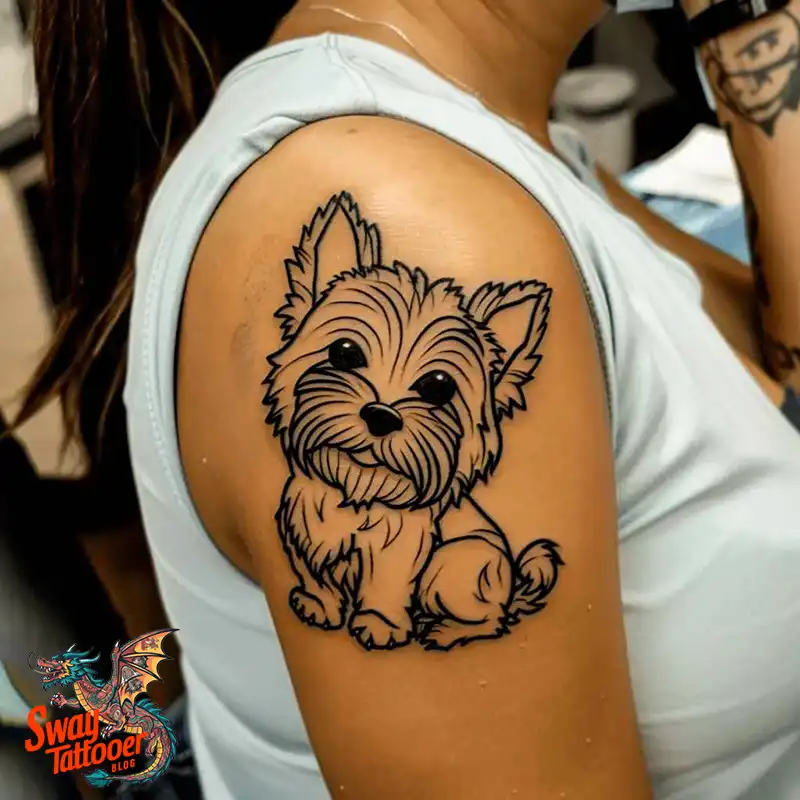
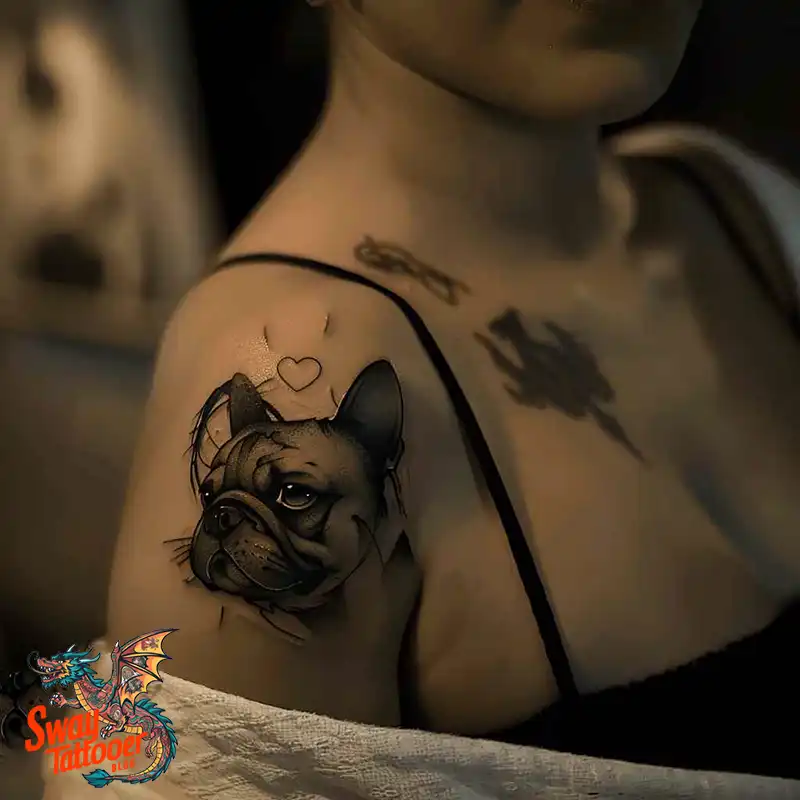
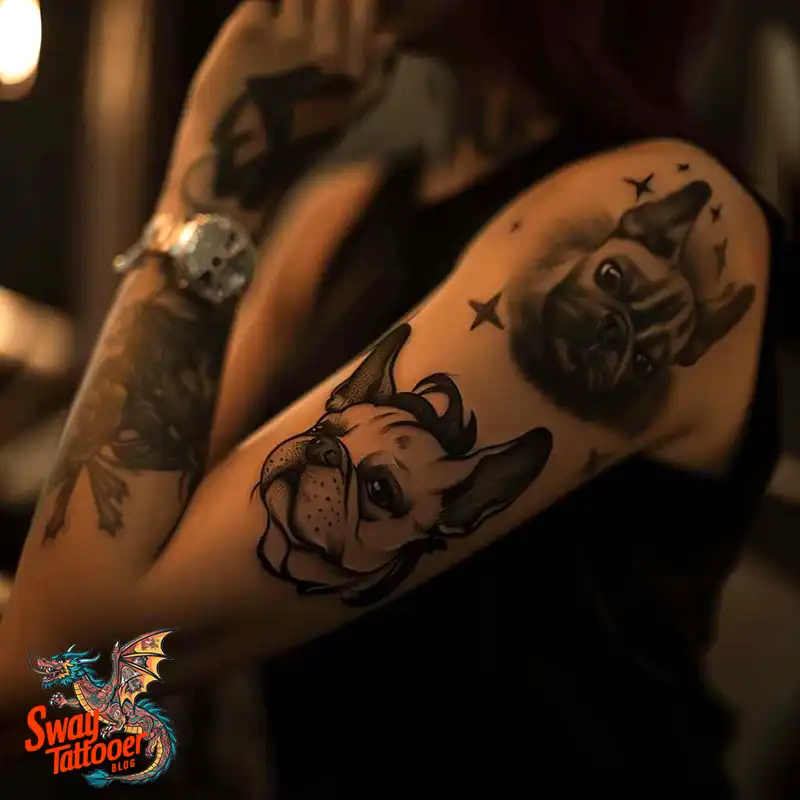
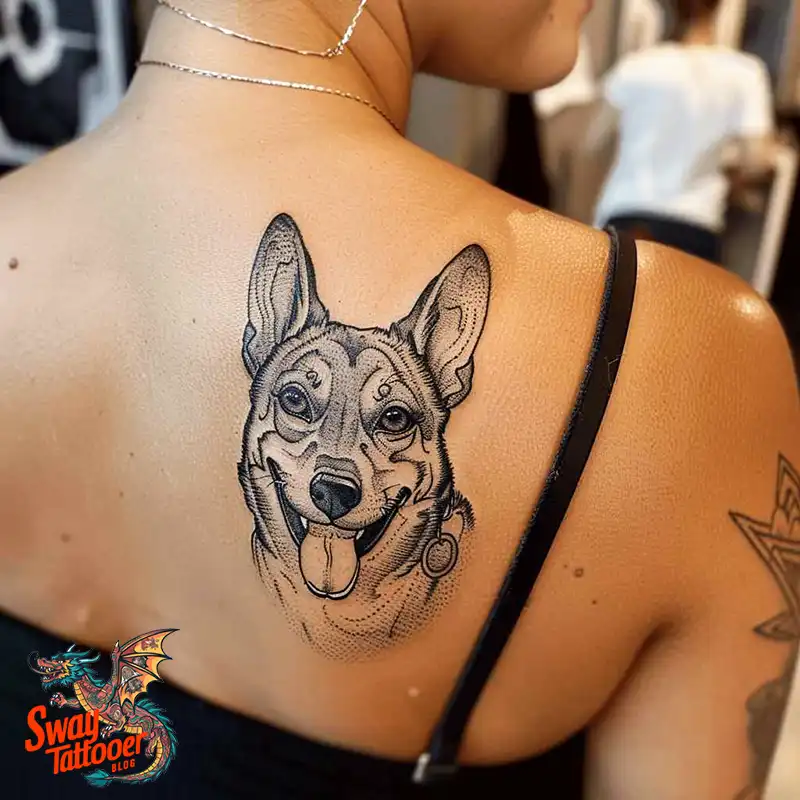
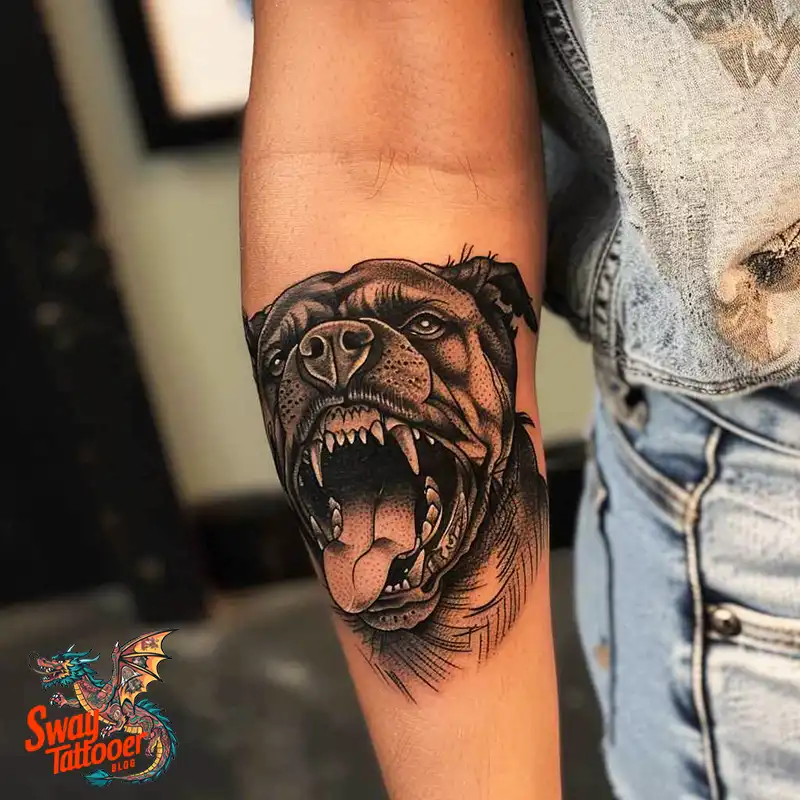
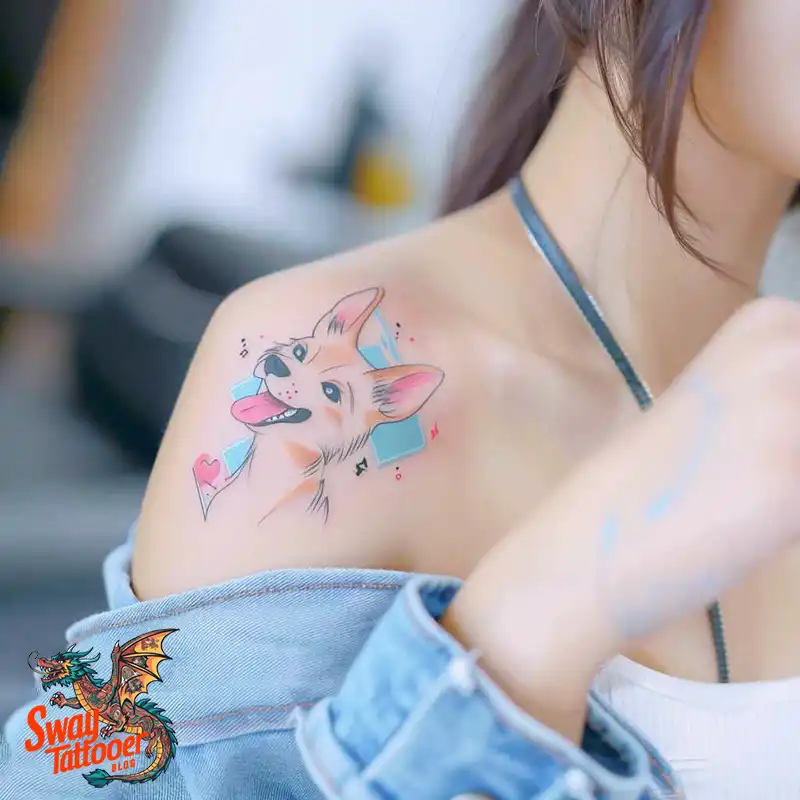
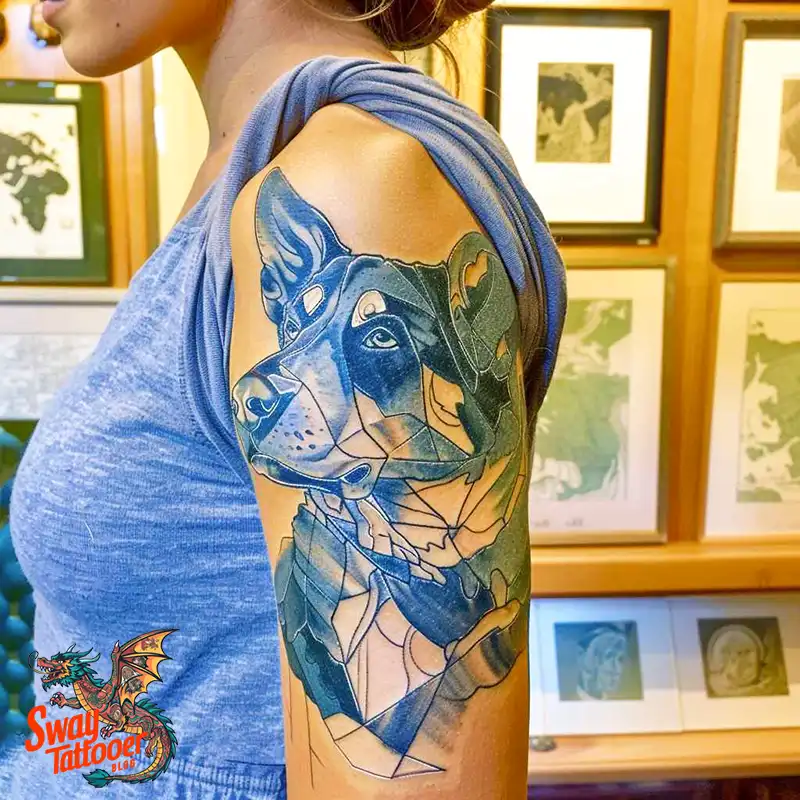
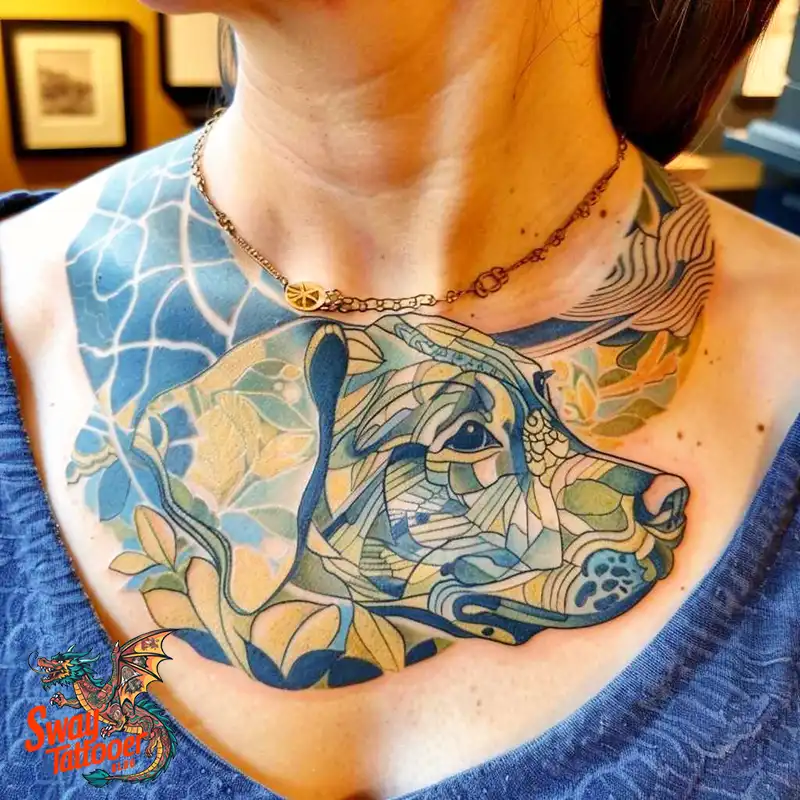
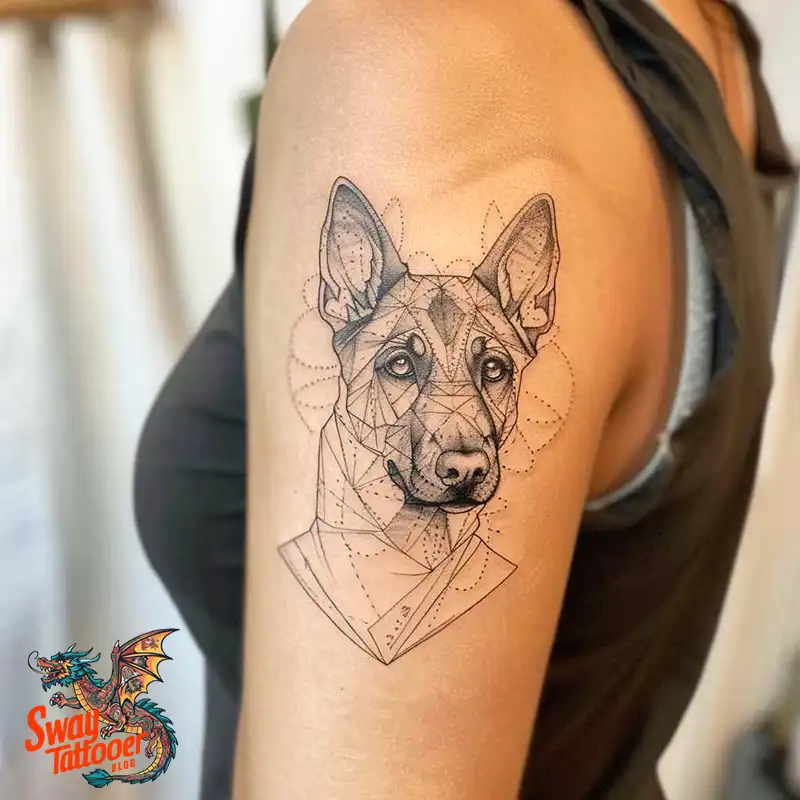
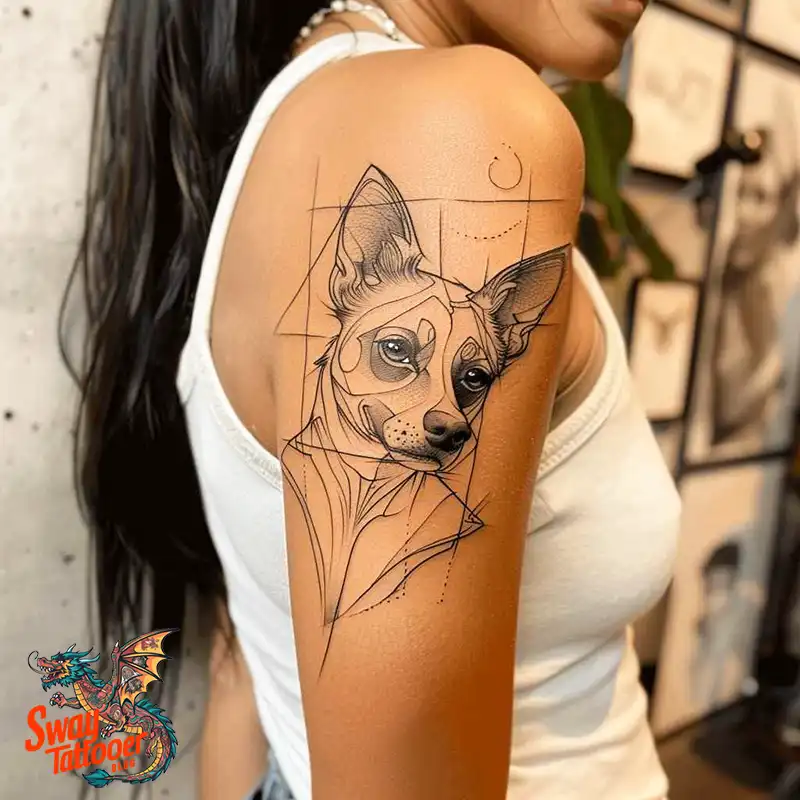
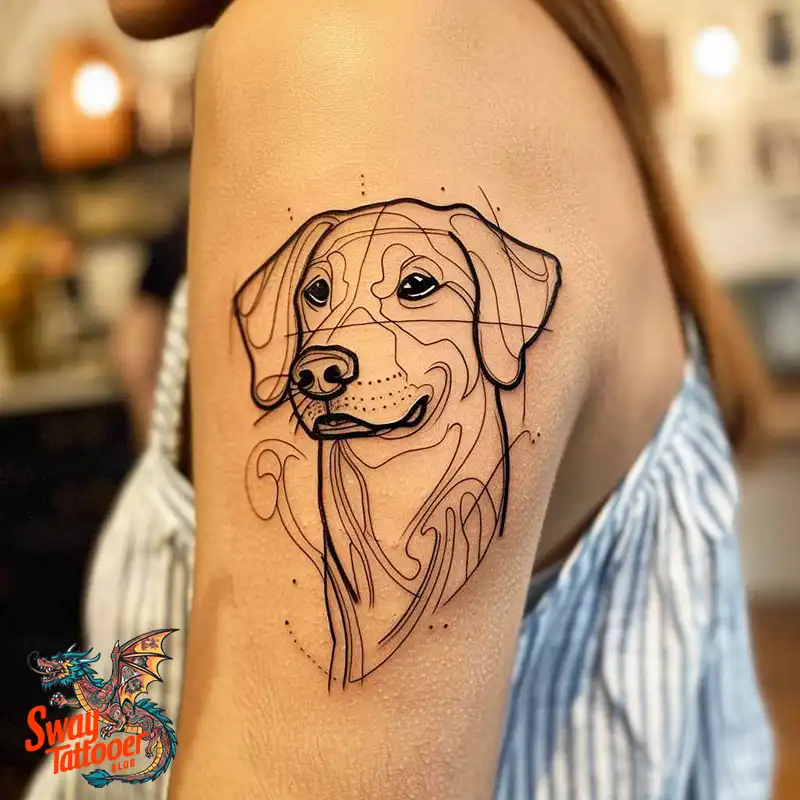
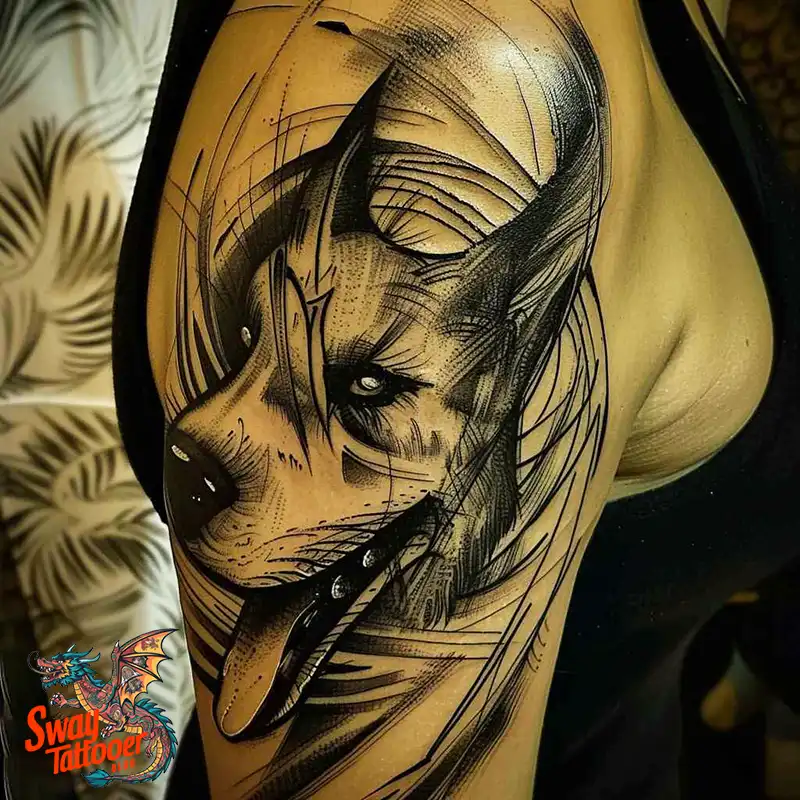
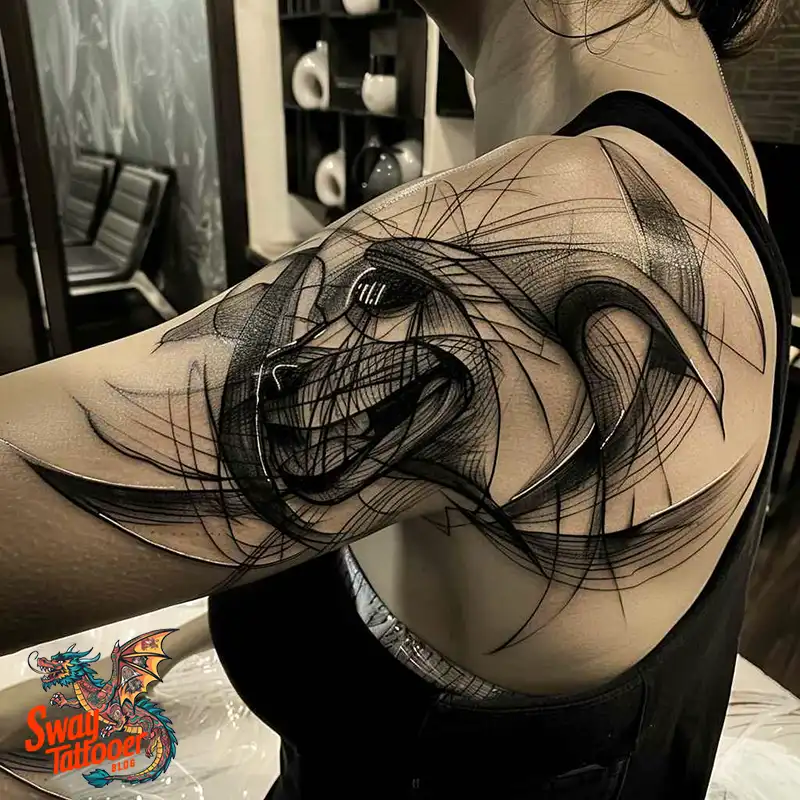
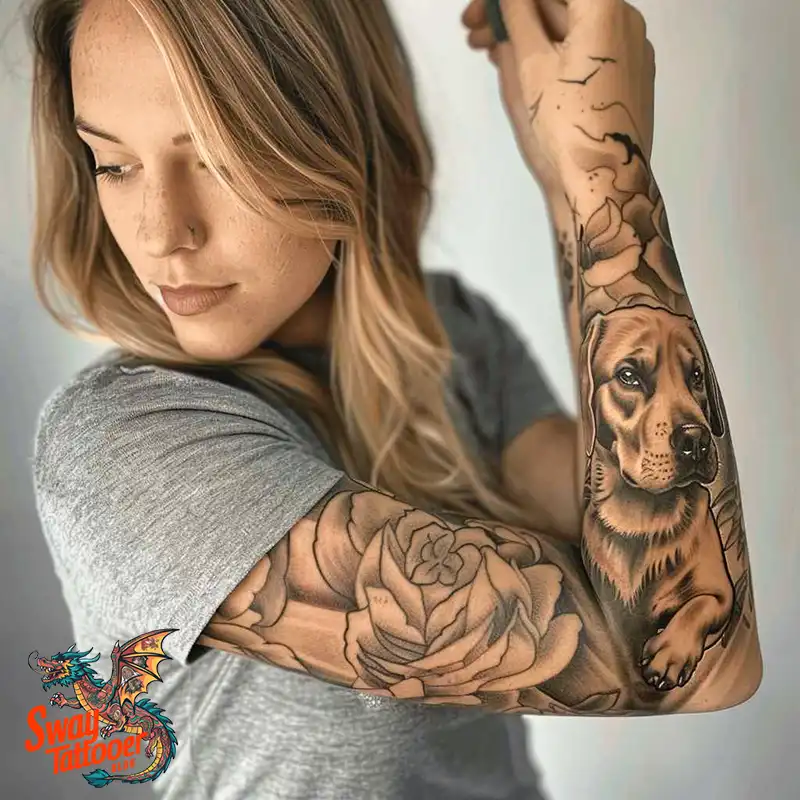
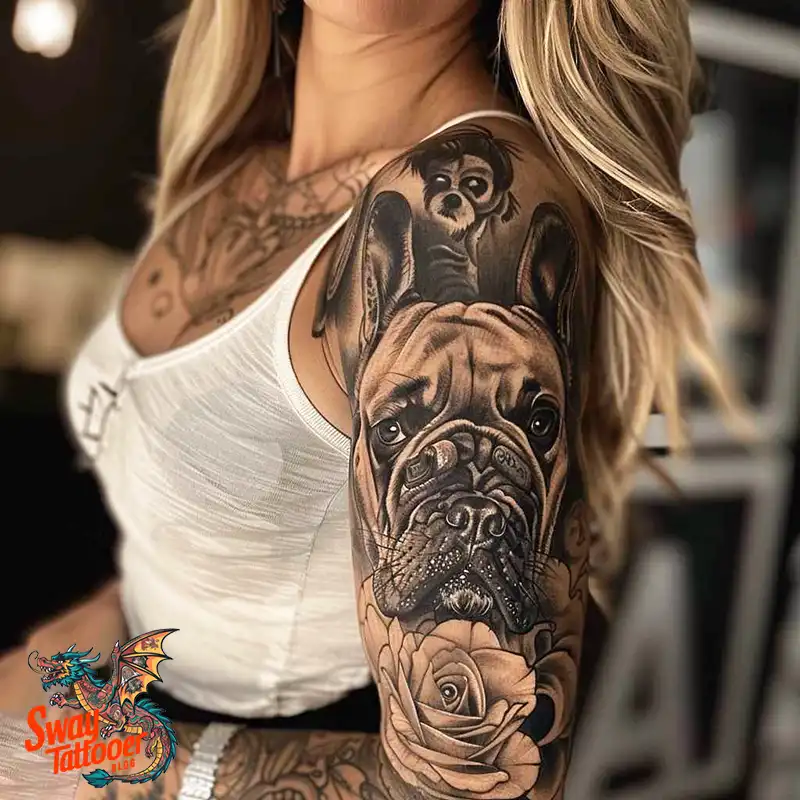
Various Types of Dog Tattoos and their Significance
There are only a few forms of body art that are as prevalent as well as dear to the heart of the wearer as tattoos. Regardless of what theme or subject has been used to create this permanent impression in ink, the tattoo will be more or less important to the wearer.
Out of the themes and subjects possible in tattoo art, dog tattoos arguably stand apart for their poignancy in literal and symbolic sense. Whether one is a pet parent, an animal lover, or someone who just admires the traits dogs represent, getting a dog tattoo can be an effective way to express sentiments.
1. Portrait Tattoos
In this section, we will go over various dog tattoos, their design styles, and why they relate to people so well. Portrait tattoos are very detailed and real in portraying a particular dog. Quite often, portrait tattoos contain the head of the dog, which can include fur texture, the color of the eyes, even specific markings.
Portrait tattoos are very popular, especially for those who want to memorialize a favorite pet. These tattoos can be used as a continuing expression of gratitude to a four-legged companion for their unconditional love and companionship. It may also give a living quality to the tattoo of the dog and, as such, provides much comfort and even reassurance of their presence well after they may have died.
2. Silhouette Tattoos
Summary:
Silhouette tattoos are simple, yet elegant designs showing the outline of a dog without interior detail. These can range from minimalist-five-minute jobs with just the contour of a dog in a certain pose-to more stylized pieces that include other elements, like hearts or paw prints.
Relevance:
Silhouettes are great for those who want something a little more understated; it captures the spirit of the dog, but without delving into the complexity of a full portrait. Most of the time, these tattoos are easier to place anywhere on the body and take less time, pain, and financial investment compared with larger portrait tattoos.
3. Paw Print Tattoos
Summary:
The dog’s paw print tattoo is an image capturing the unique imprint of a dog. These can be as realistic as using the real deal from a pet or as fanciful as adding names, dates, and decorative patterns.
The tattoos of paw prints are very personal to an individual and, in most instances, tend to memorialize a specific dog. They might symbolize the influence of a dog on one’s life, whereby the pet has left an indelible mark on the heart. These tattoos are ideal for those people who wish to retain part of their pet with them all the time.
4. Watercolor Dog Tattoos
Summary:
Watercolor tattoos are designed with bright, fluid colors to form a design that resembles the appearance of watercolor painting. In dog tattoos, this could add a dynamic and artistic touch to represent one’s beloved pet.
Watercolor dog tattoos look not only outstanding but also carry in themselves the beauty and joy of having pets in one’s life. The use of vivid and variable colors can represent the much playful and lively nature of dogs, hence the tattoo is sure to celebrate your pet’s personality.
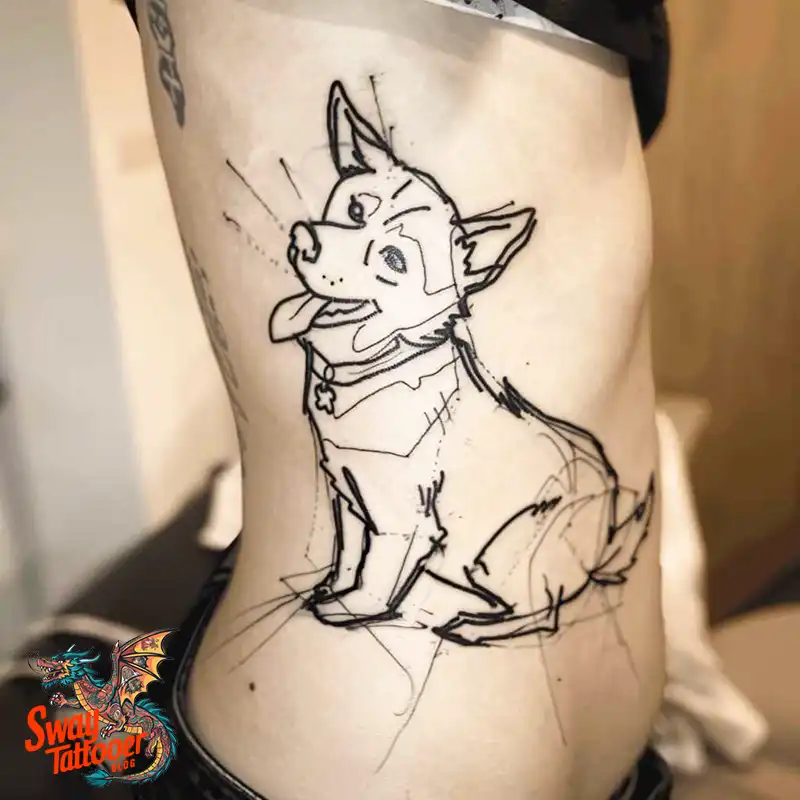
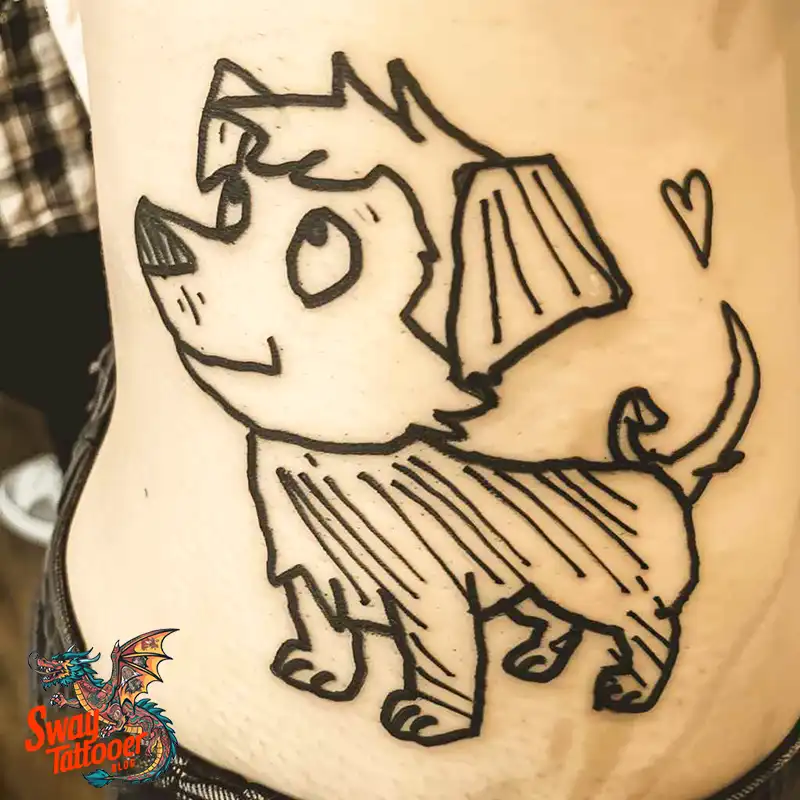
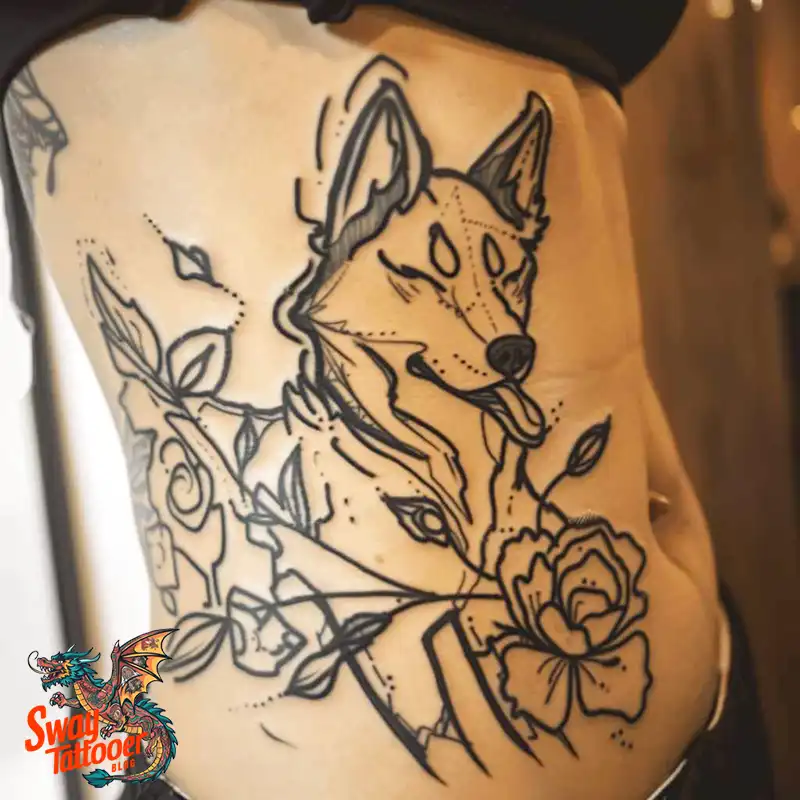
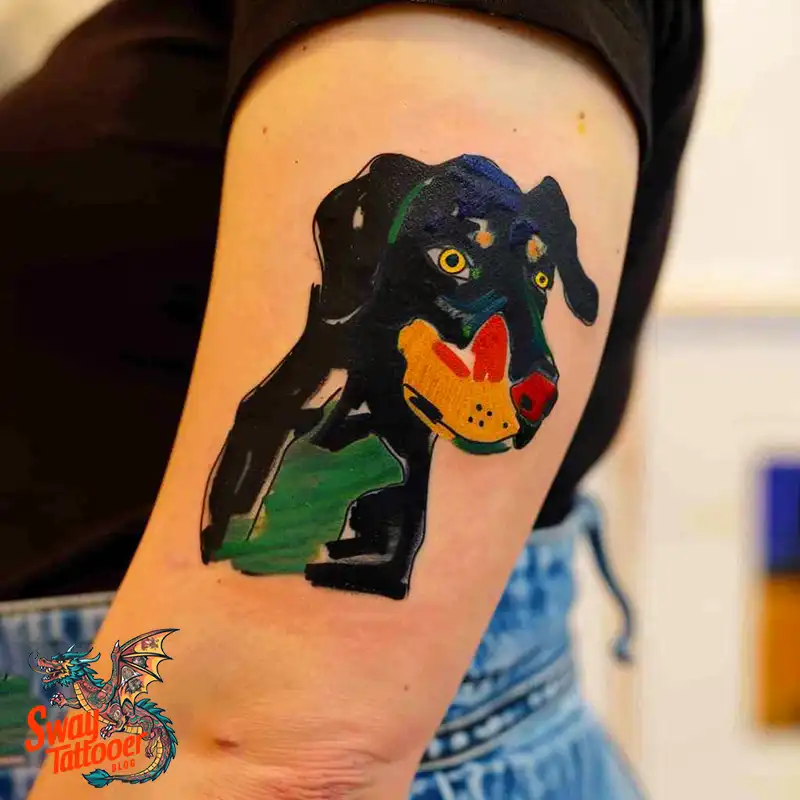
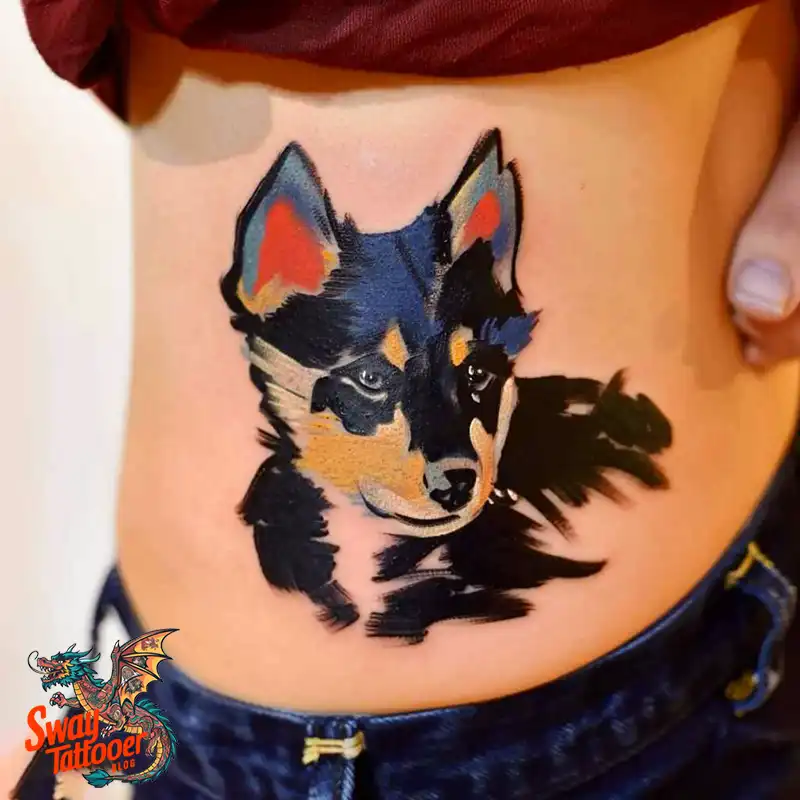
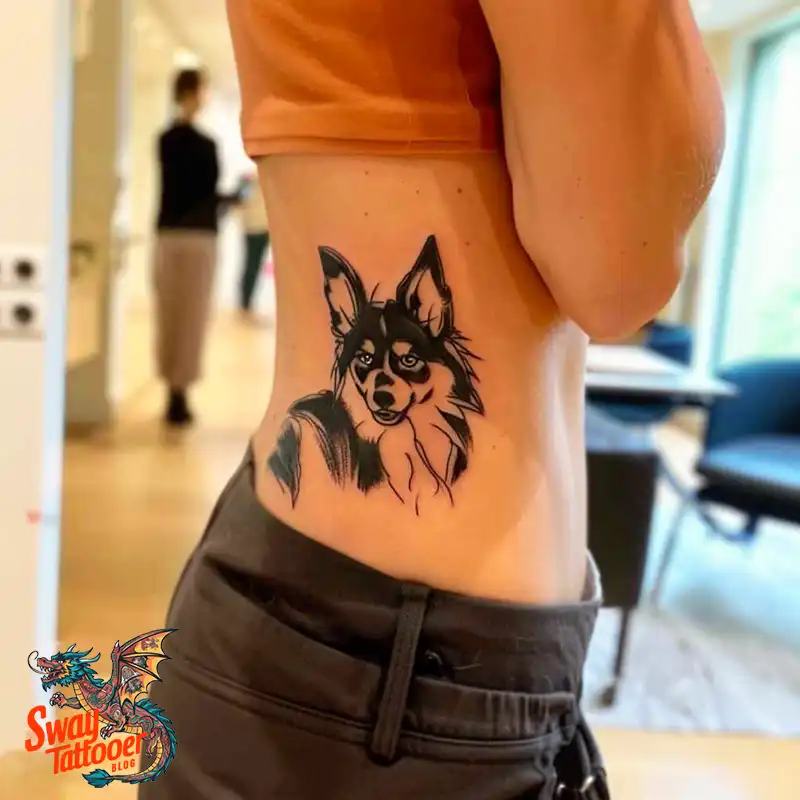
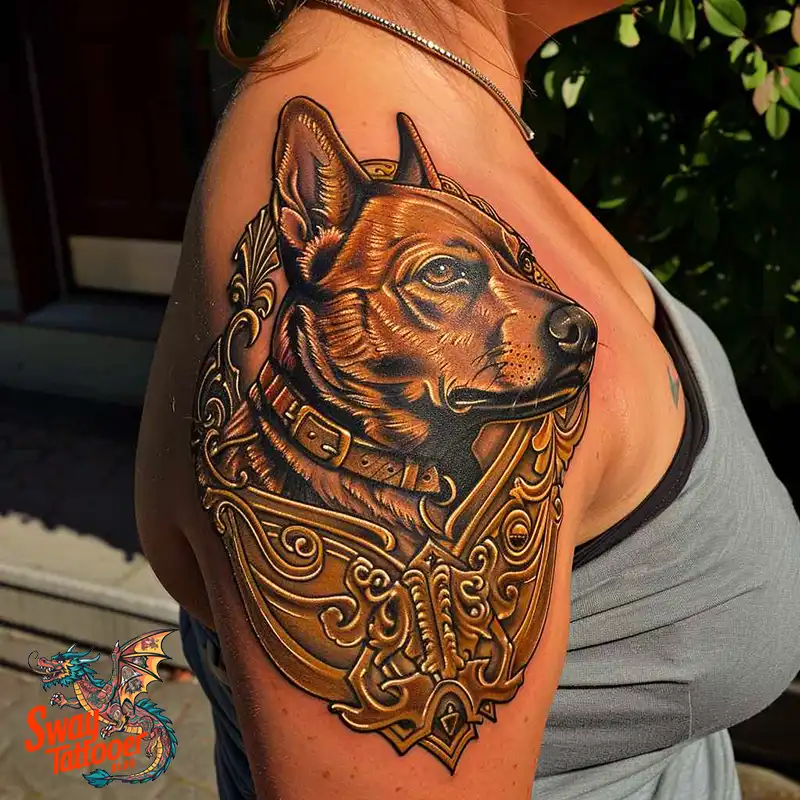
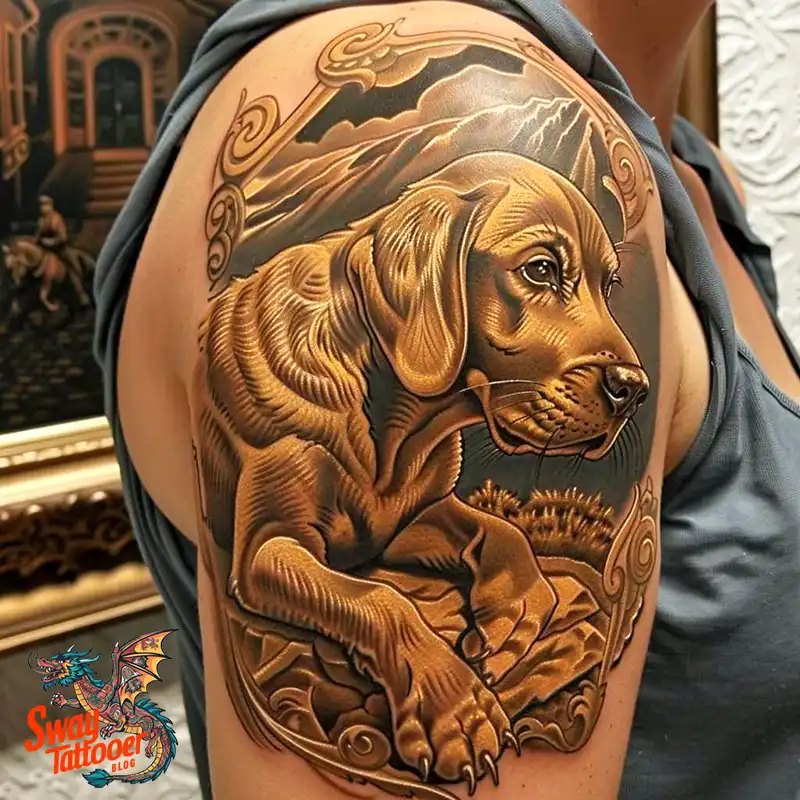
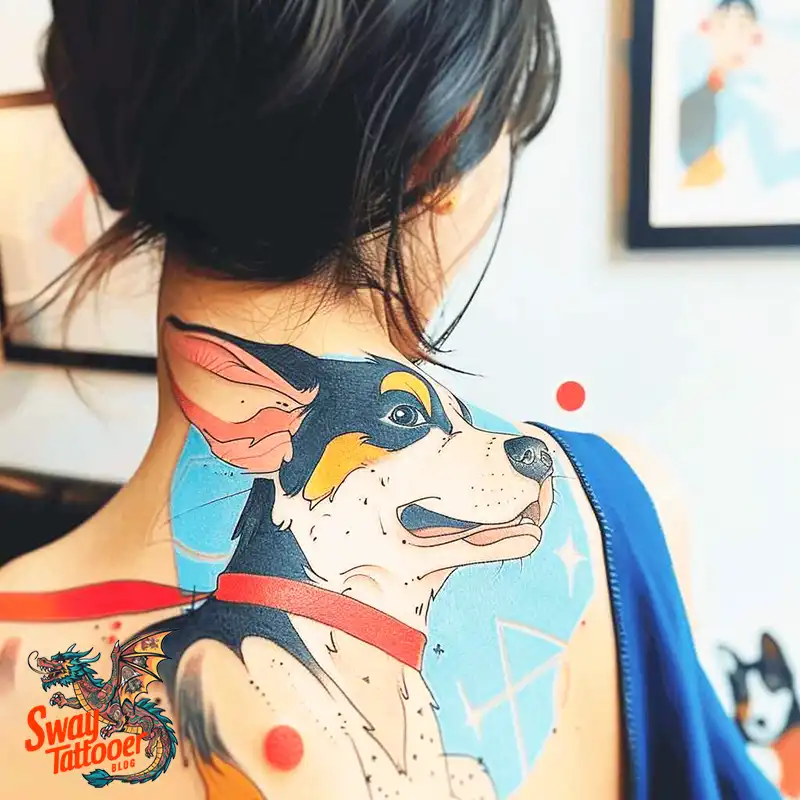
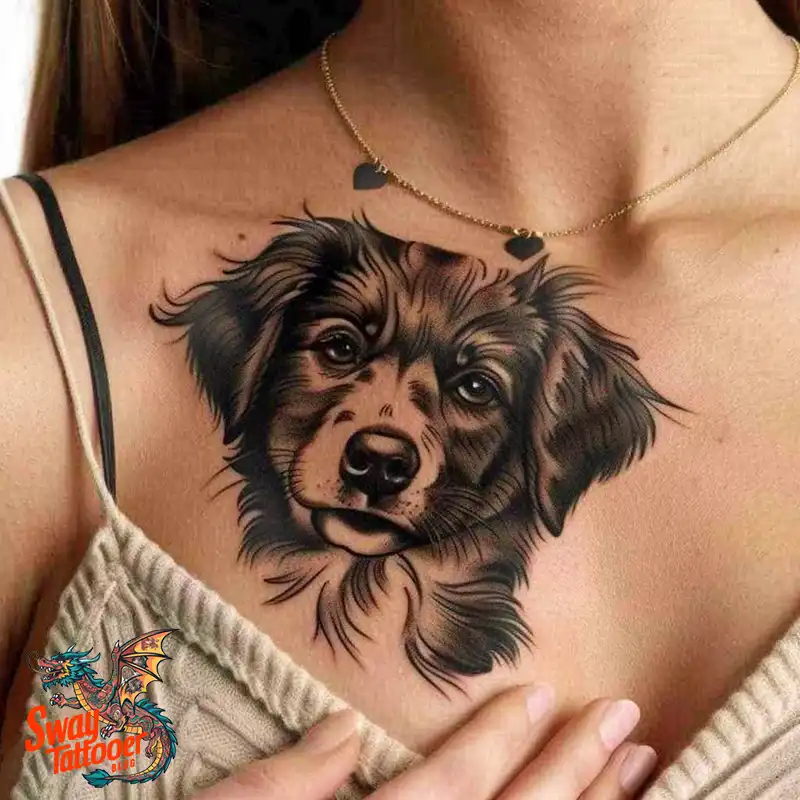
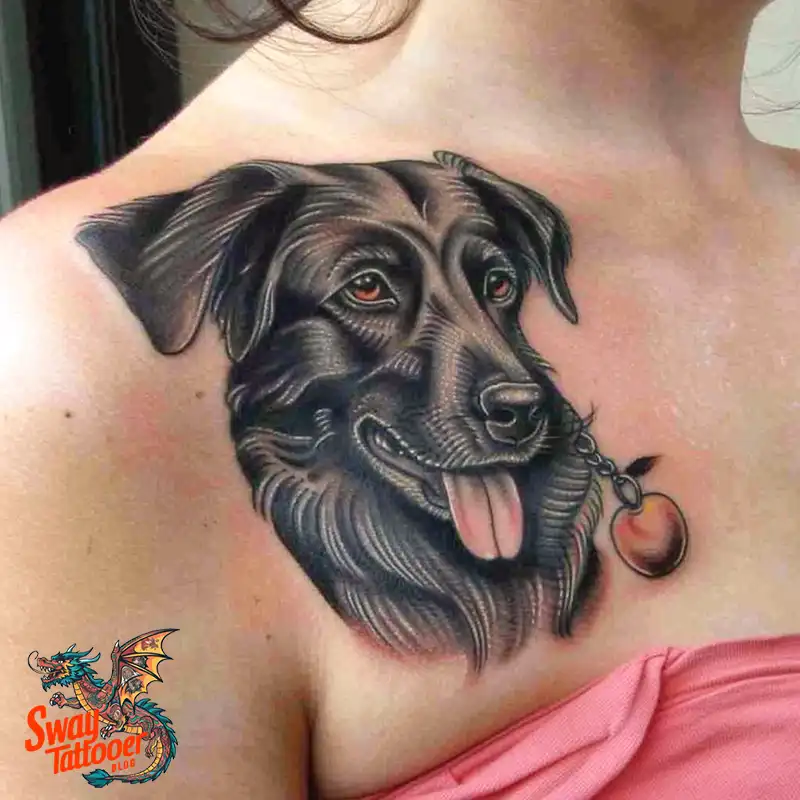
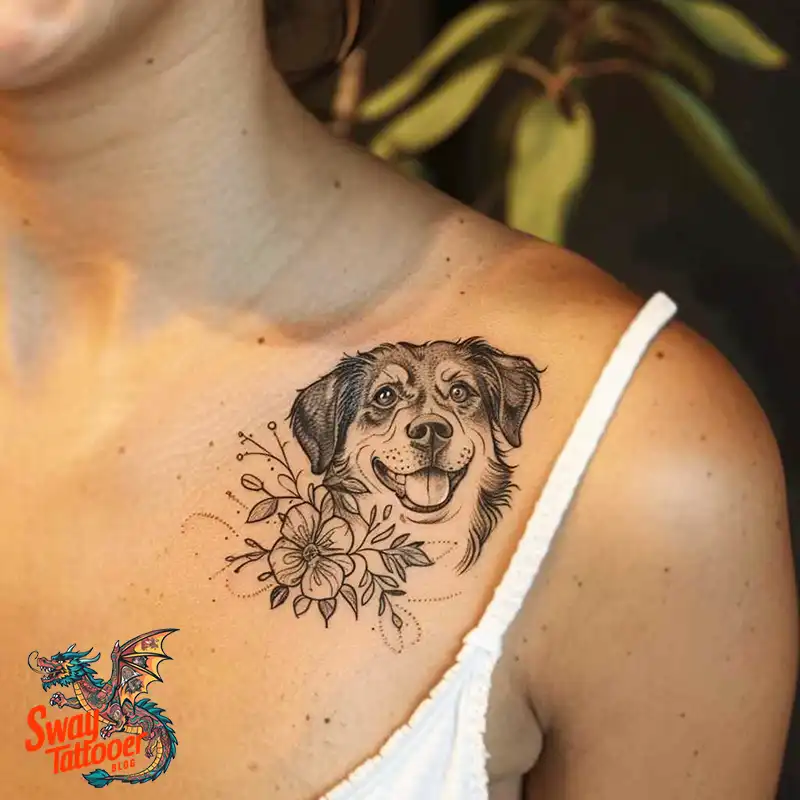
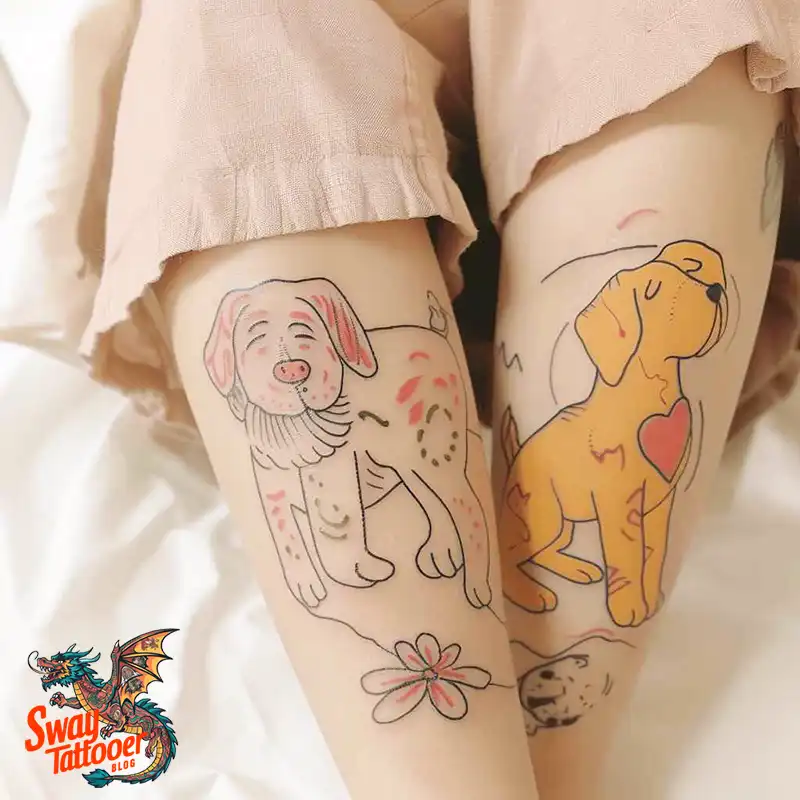
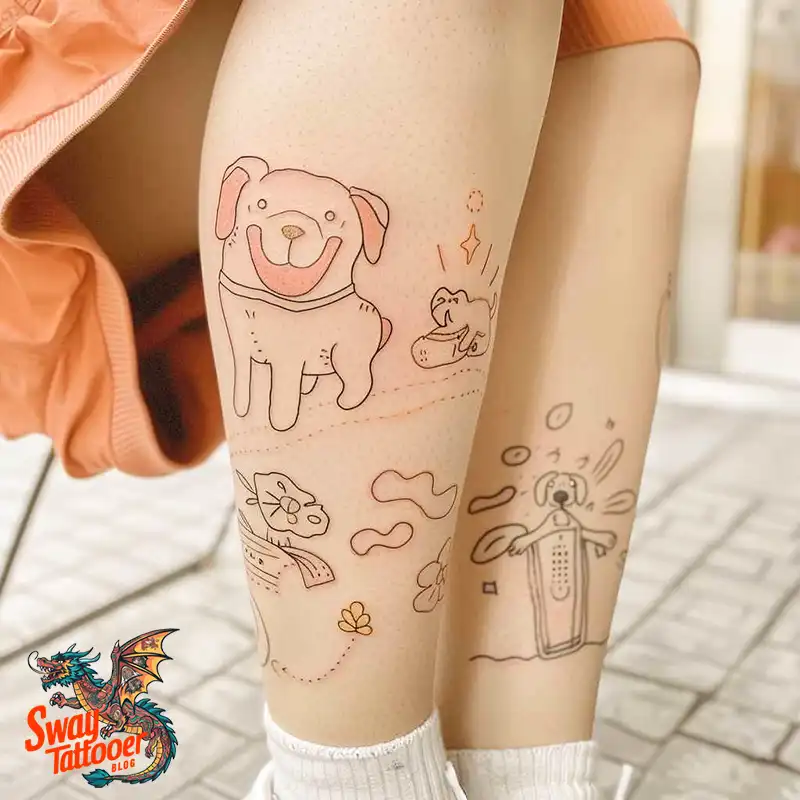
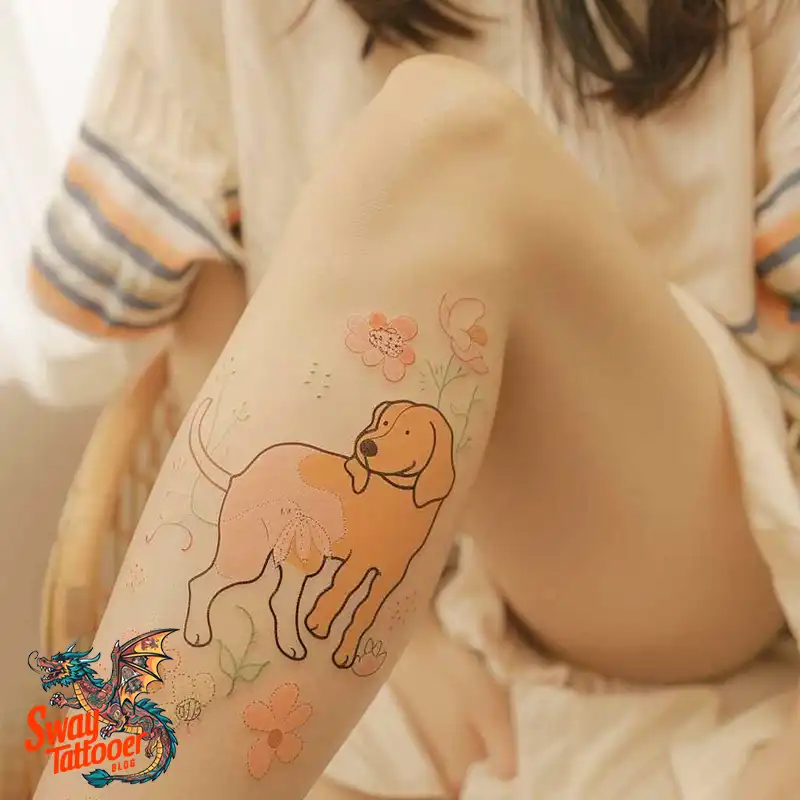
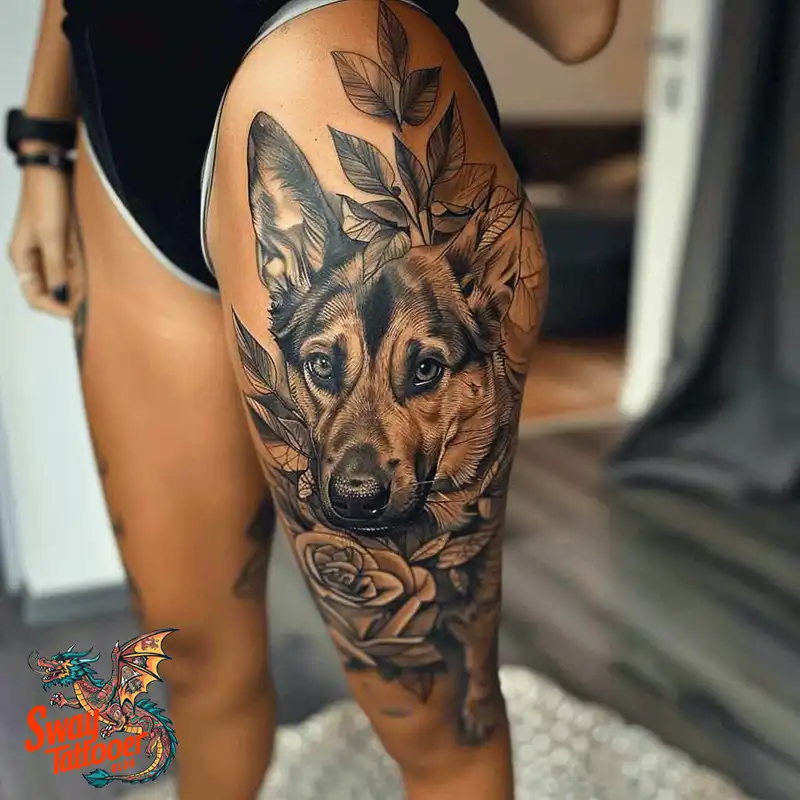
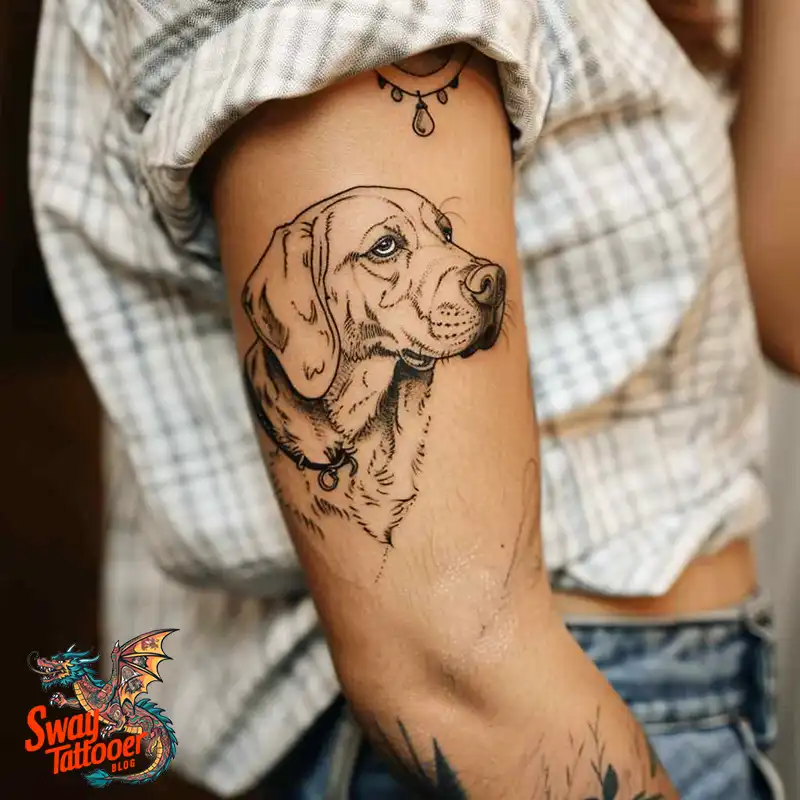
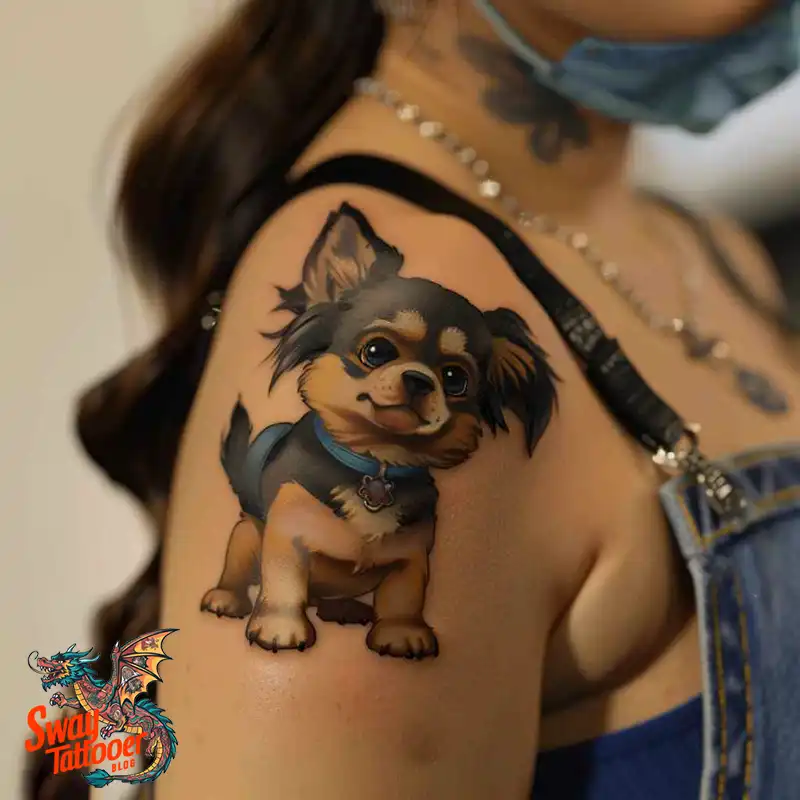
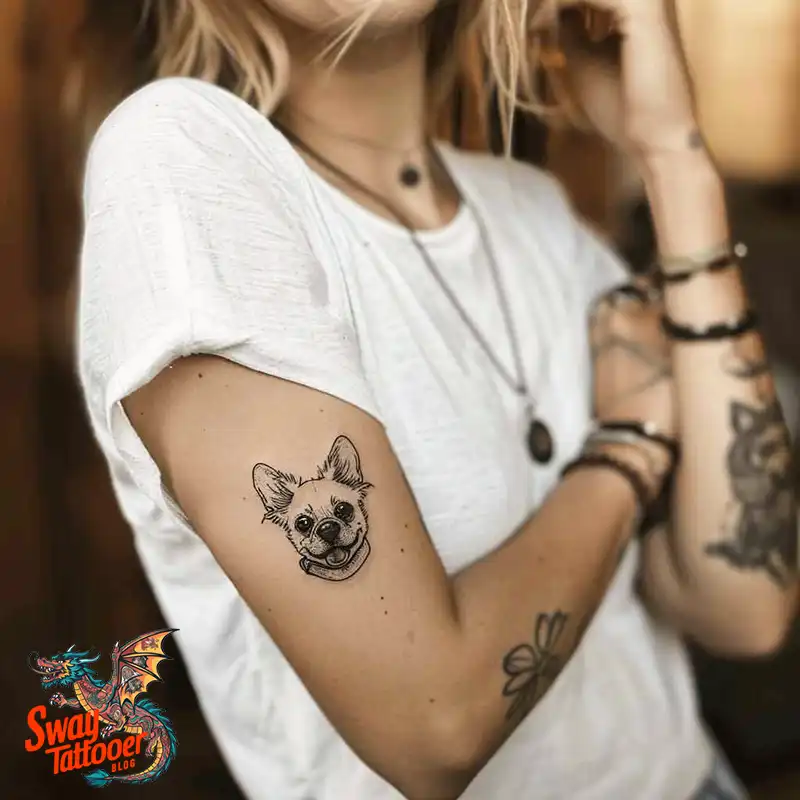
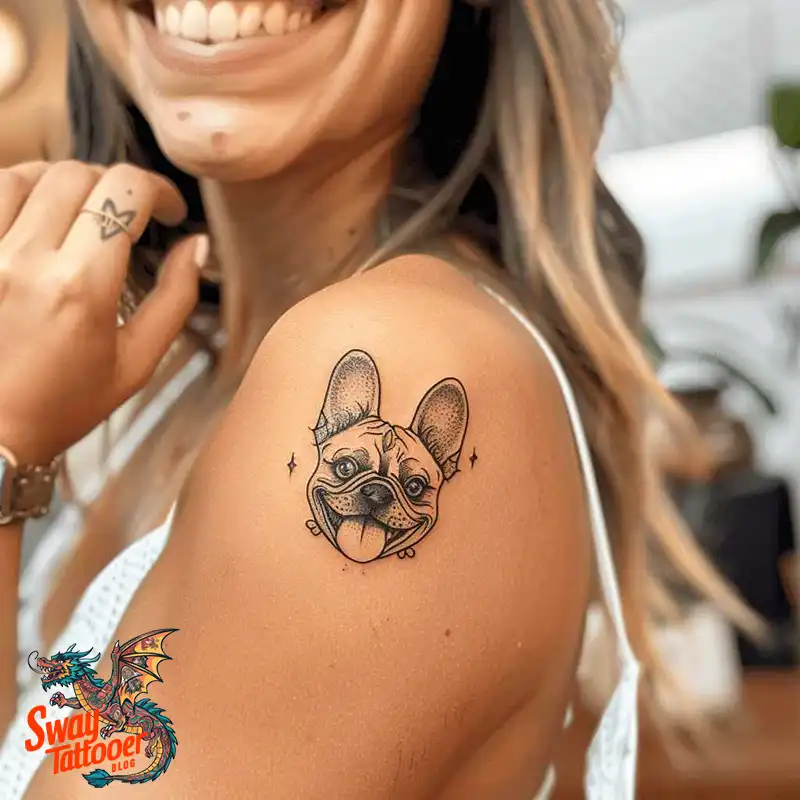

5. Geometric Dog Tattoos
Summary:
Geometric tattoos are those that involve triangles, circles, and lines, among other shapes, to generate some sort of image of dogs. These can be anything from simple, abstract designs to more complex ones.
Appropriateness:
Geometric dog tattoos are ideal for those who appreciate modern and contemporary styles of art. The geometric aspect may be added to show the multi-dimensional and complex nature of a dog and owner’s relationship. They are often wanted by individuals seeking a unique and artistic way to express their pet.
6. Cartoon and Caricature Tattoos
Summary:
The cartoon and caricature tattoos feature dogs in their most frivolous and farfetched forms. The humor element of a dog’s nature and playful side is usually brought to the fore, including their much-exaggerated expressions and postures.
Relevance:
Cartoon and caricature tattoos are ideal for any dog owner who would wish to portray the fun and joyful moments shared with pets. These tattoos may remind one of the laughter and happiness a dog brings along in one’s life, and mostly evoke fond memories of playful antics and quirky mannerisms.
7. Memorial Tattoos
Summary:
Most memorial tattoos of dogs include elements like portraits, paw prints, and dates of birth and death in their design in order to come up with an idea celebrating the dogs that had passed. These tattoos also can have text involved, like a dog’s name or some sort of short tribute.
**Relevance:
Memorial tattoos are one touching way of honoring and remembering the memory of a pet that has crossed the rainbow bridge. They bring some sense of closure, along with a way to keep the memory of the pet alive. These kinds of tattoos can be deeply comforting since they are a permanent reminder of a love and a bond shared.
8. Symbolic and Mythological Dog Tattoos
Summary:
These are usually tattoos of dogs carrying cultural or mythological significance, like Anubis, the Egyptian god carrying a canine head; Hachiko, Japan’s famous Akita dog that gained fame through its loyalty; or even Cerberus, the three-headed dogs in Greek mythology.
Relevance:
The symbolic and mythological dog tattoos have much appeal for those who like to delve deep into the meanings and stories associated with dogs in different cultures. These tattoos can symbolize such qualities as loyalty, protection, and companionship, an eternal myth and legend coming from the past. The tattoos link the wearer to a greater cultural and historical context and thus give manifold meaning to the design.
Dog tattoos come in many styles and forms; all of them may reflect the relationship between a human and his or her canine companion in different ways. A hyper-realistic portrait of your dog, a simple silhouette, or an artistic watercolor design-these tattoos are personal and deep, not only remaining pieces of beautiful art but also permanent tributes to the loyalty, love, and joy that dogs bring into our lives.
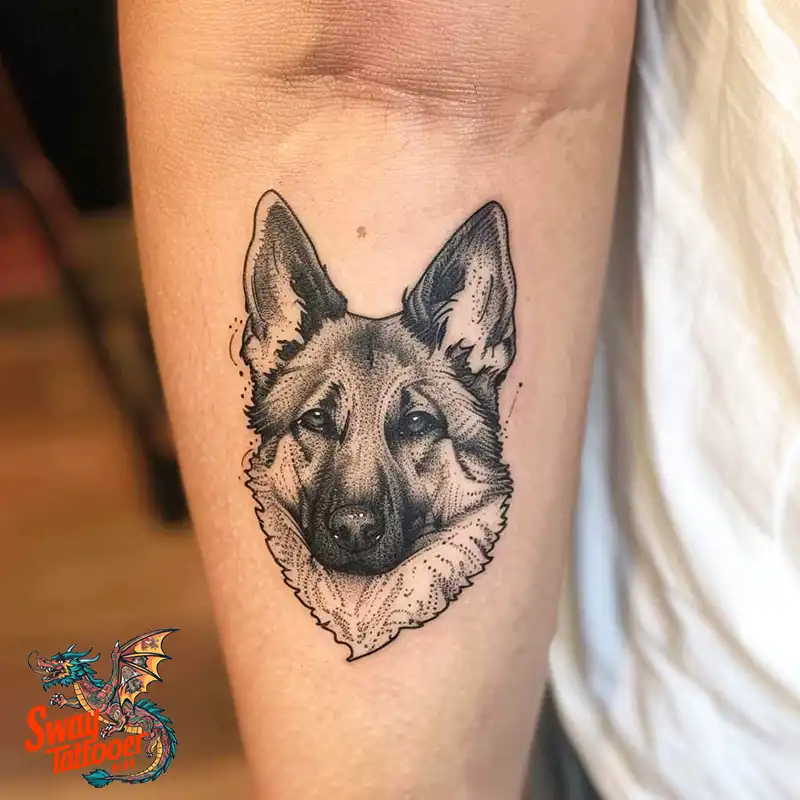
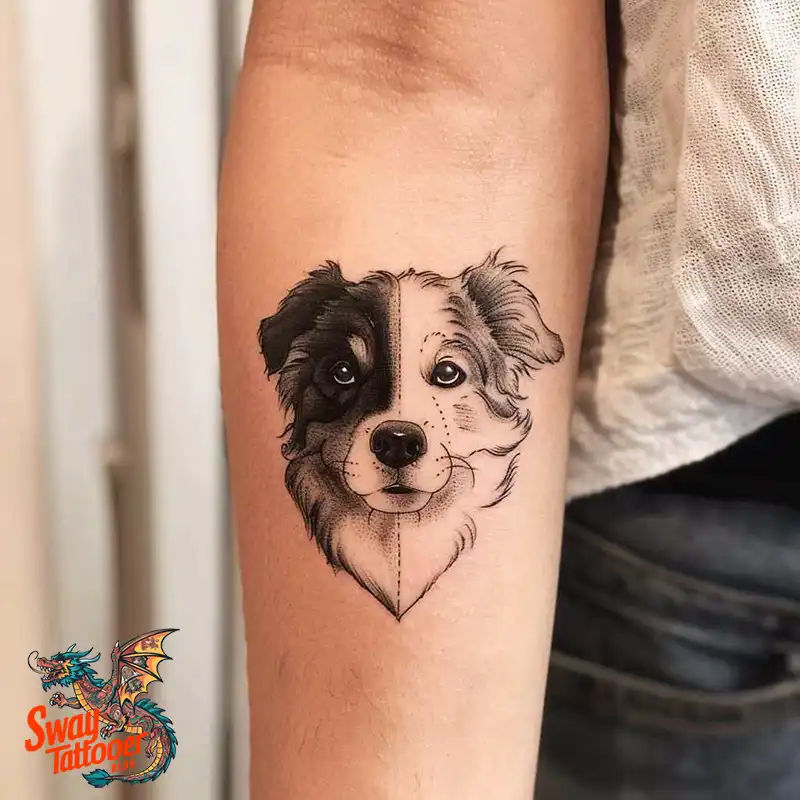
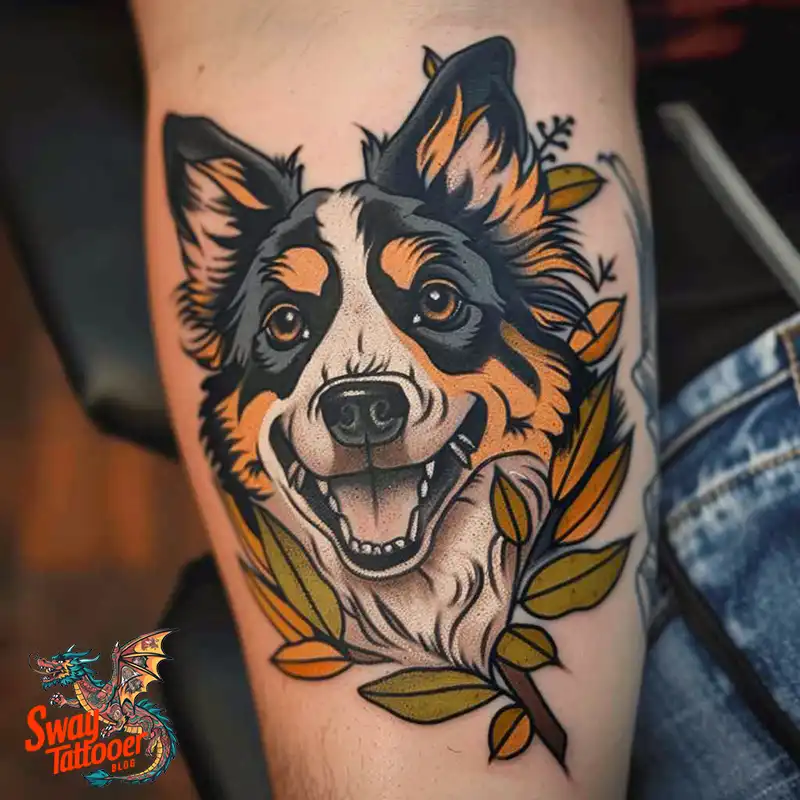
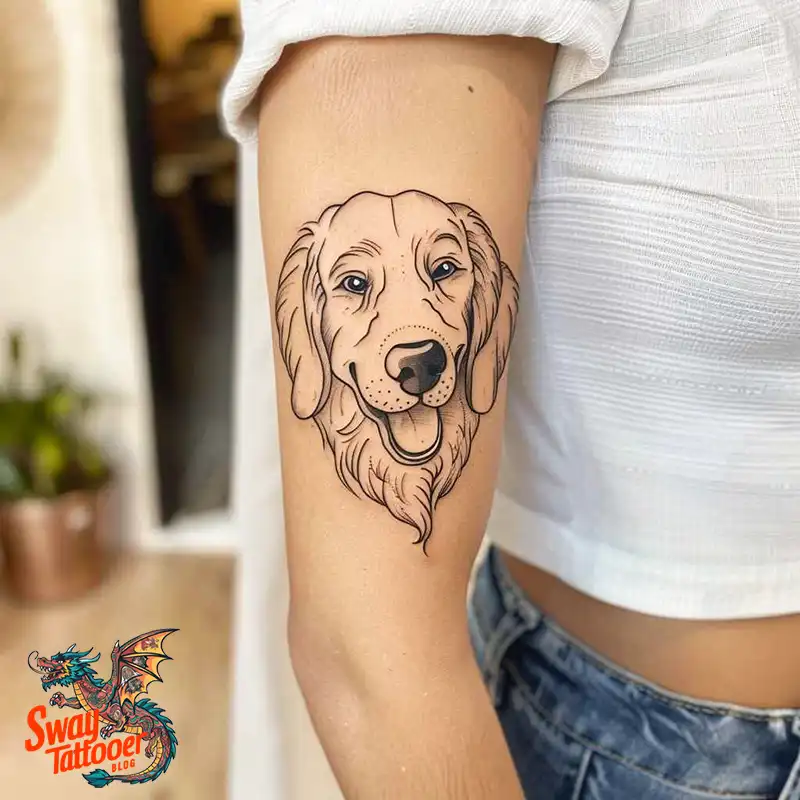
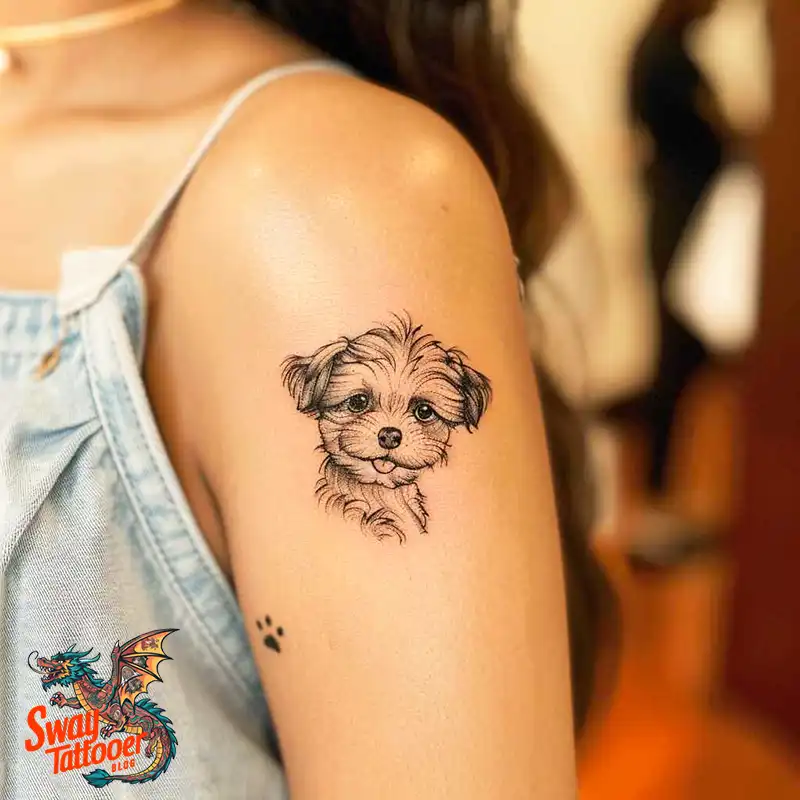
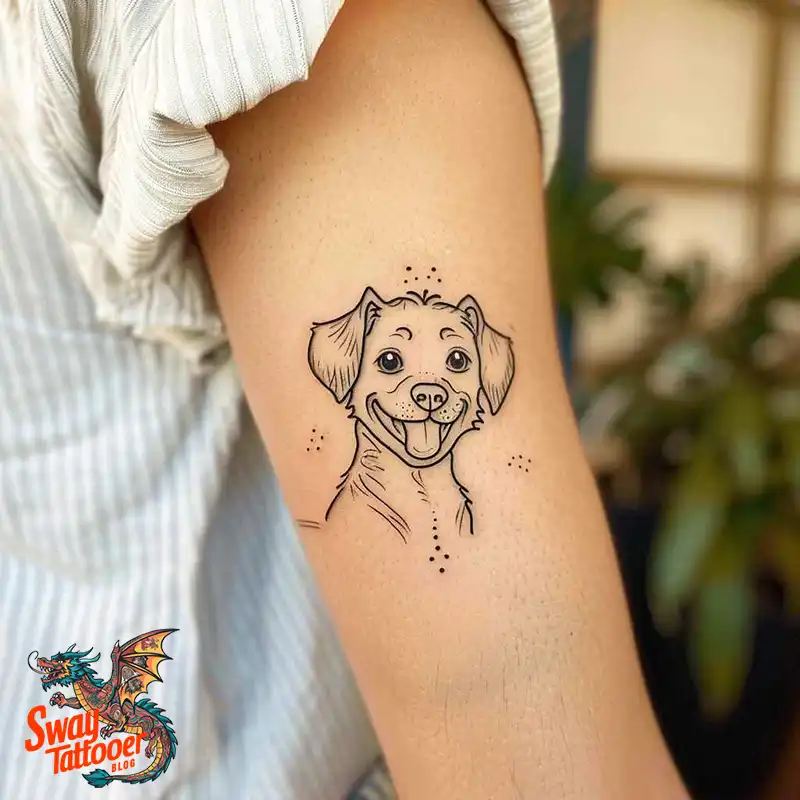
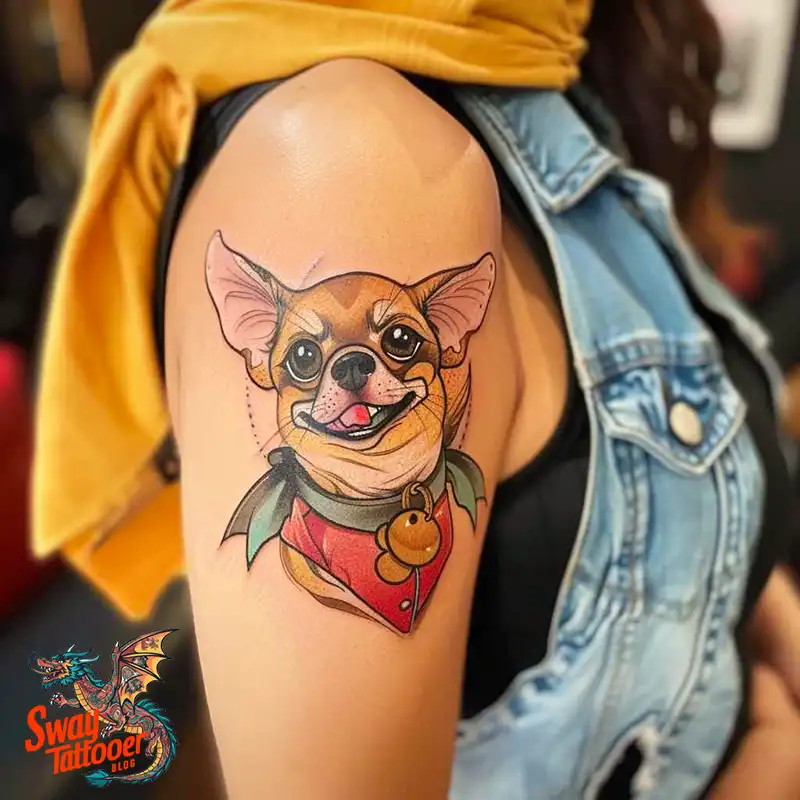
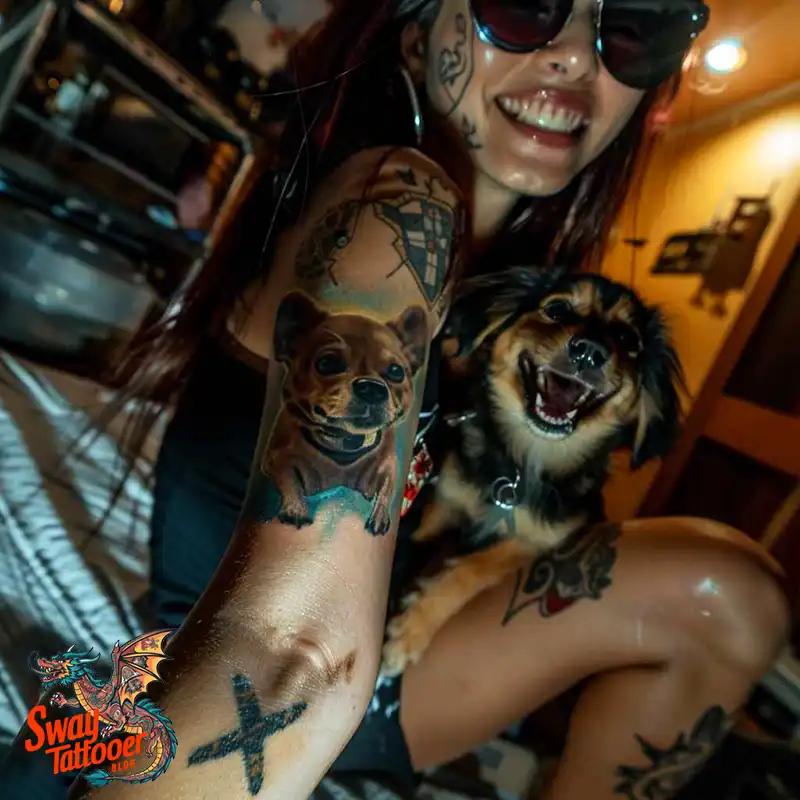
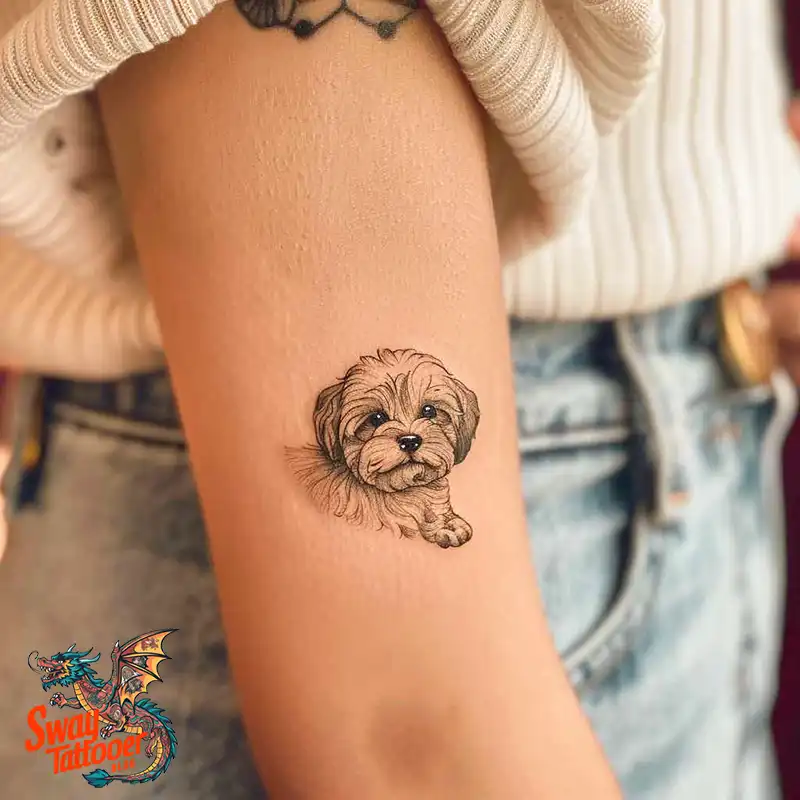
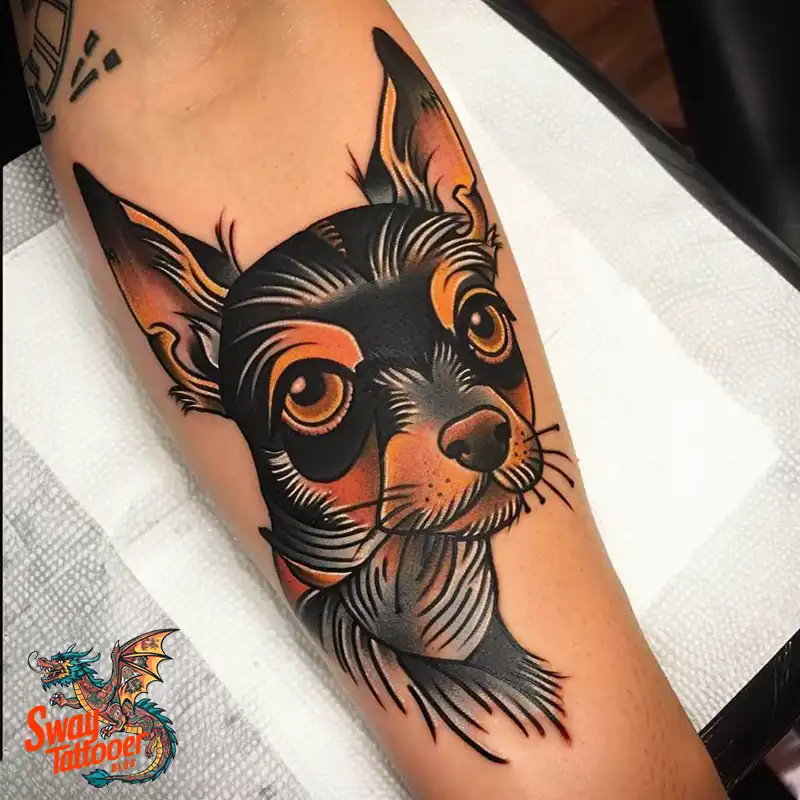
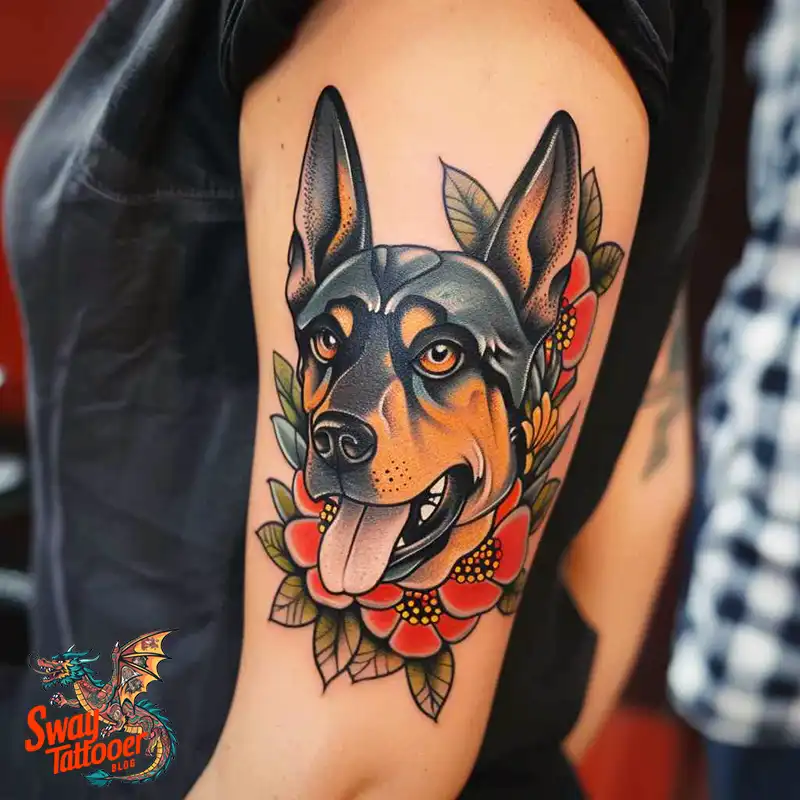
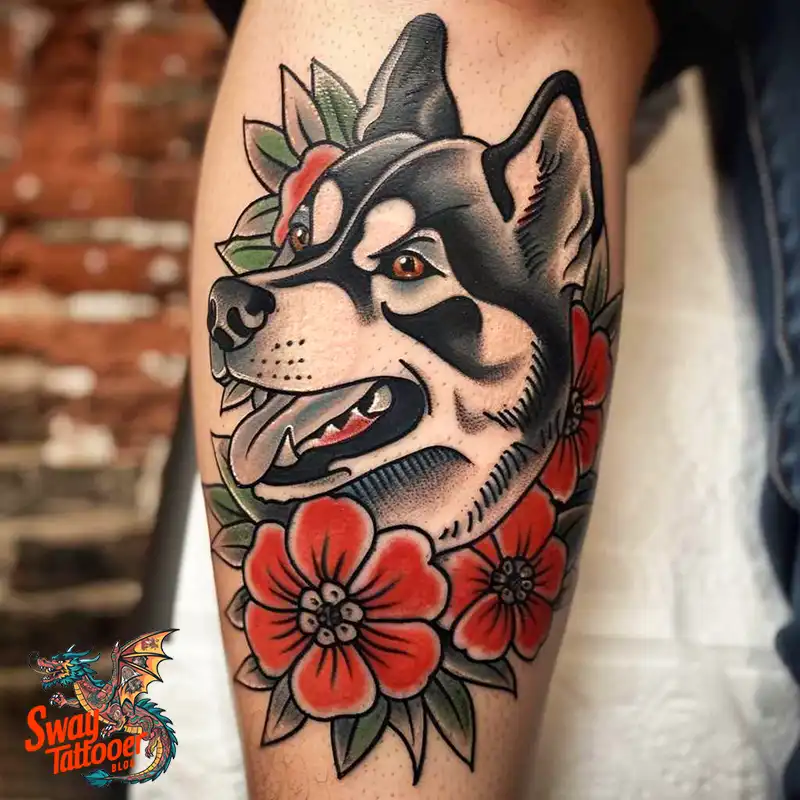
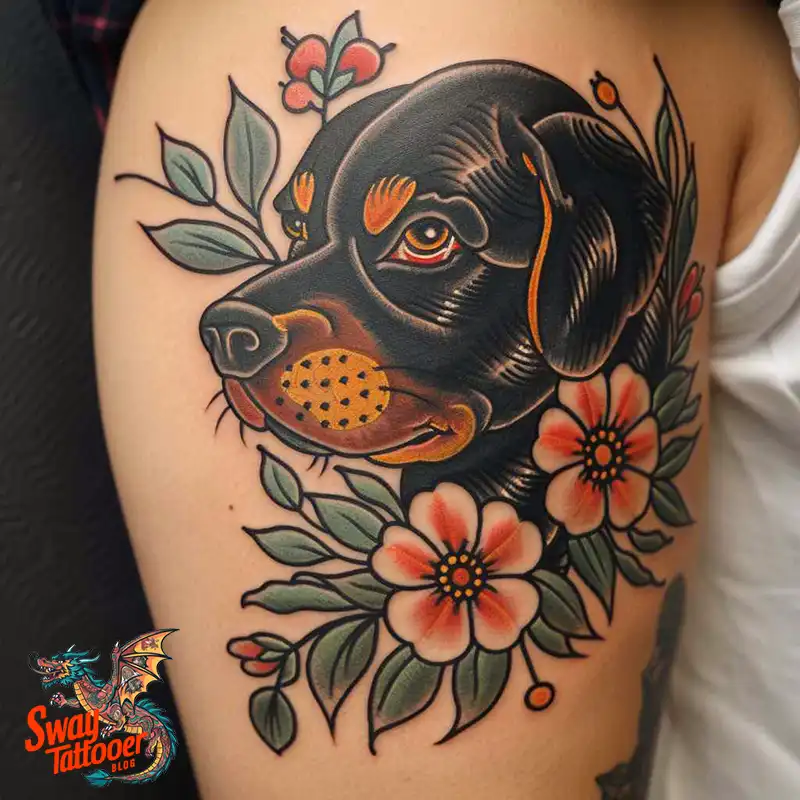
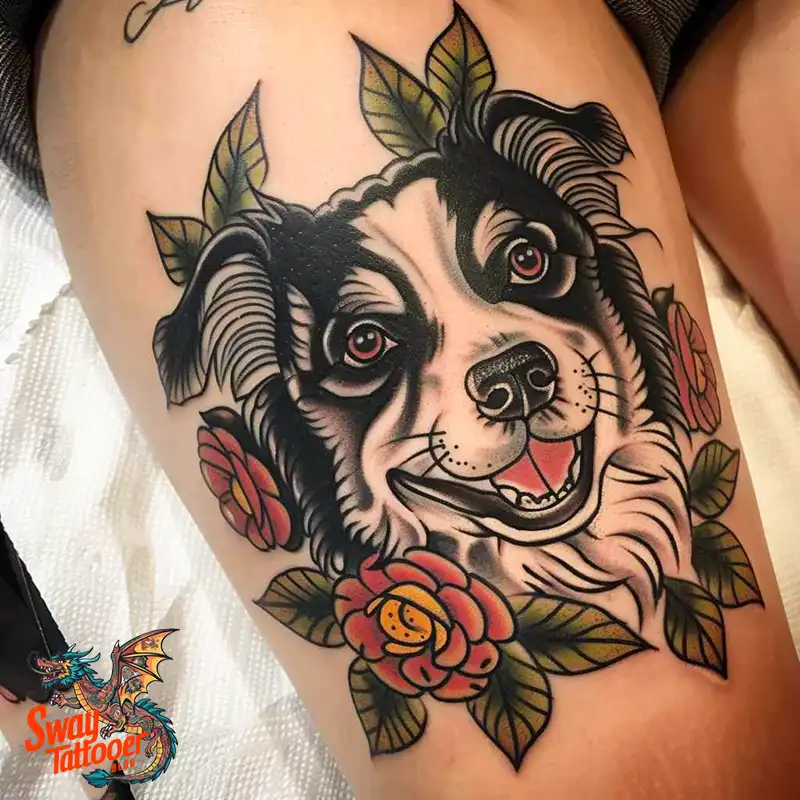
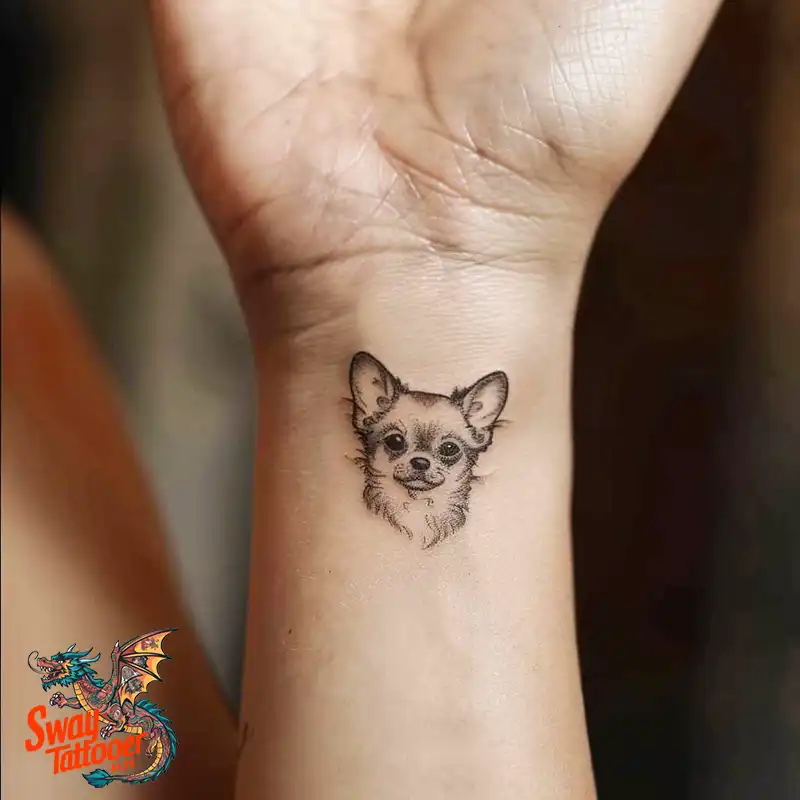
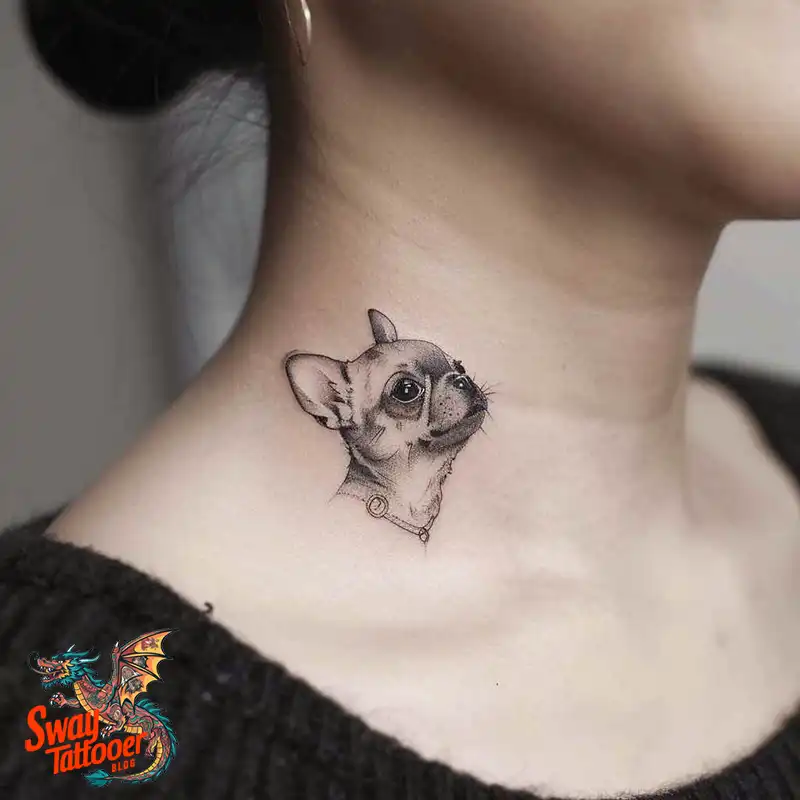

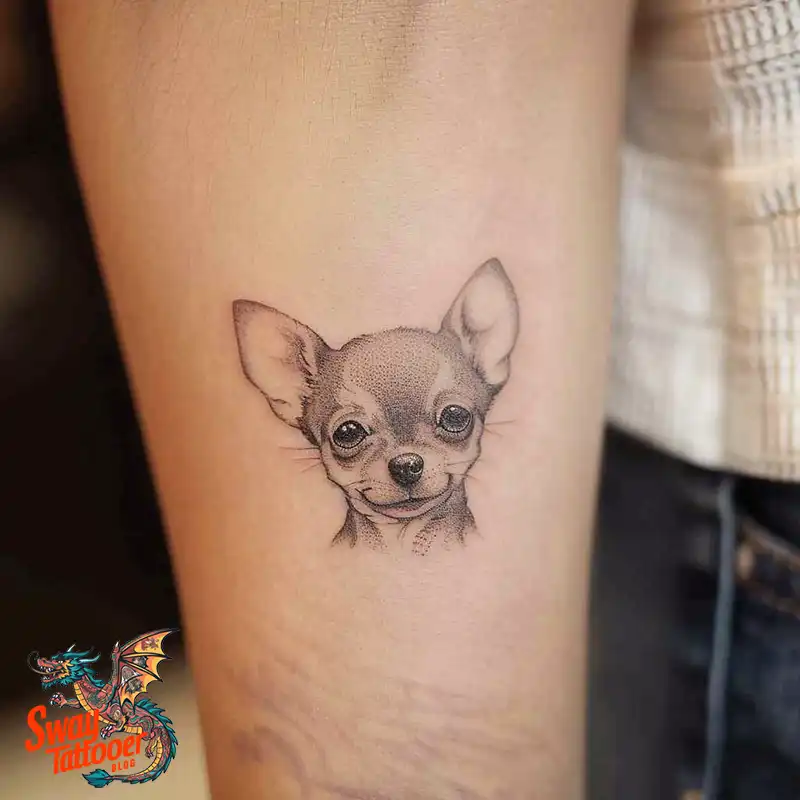
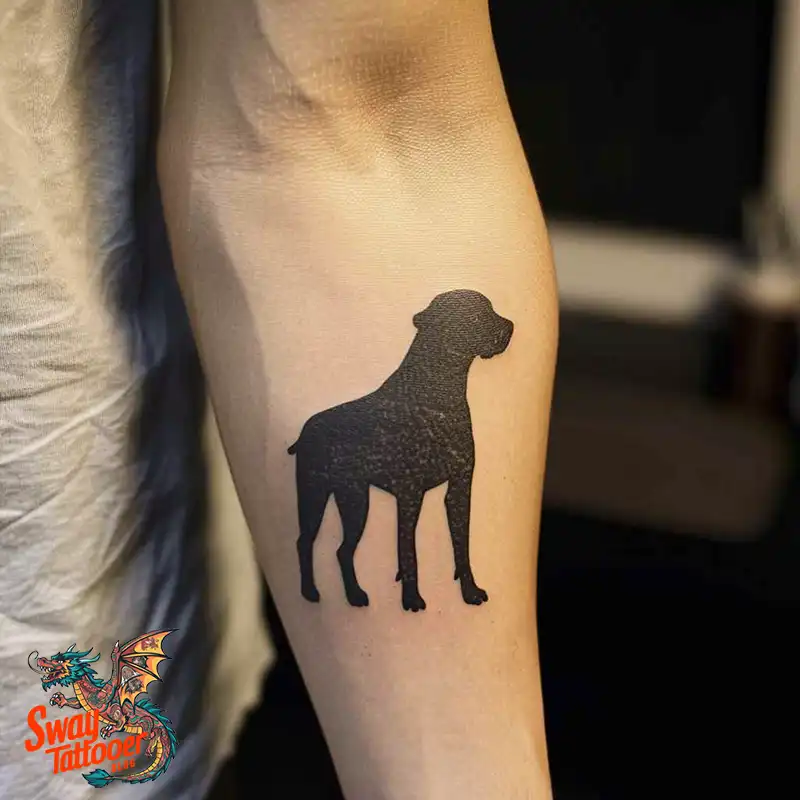
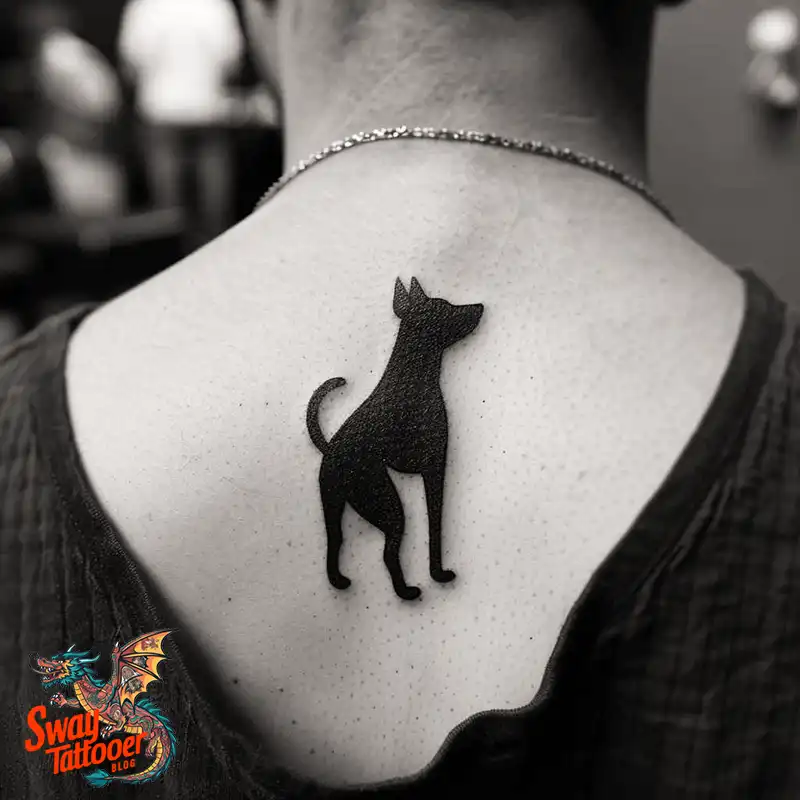
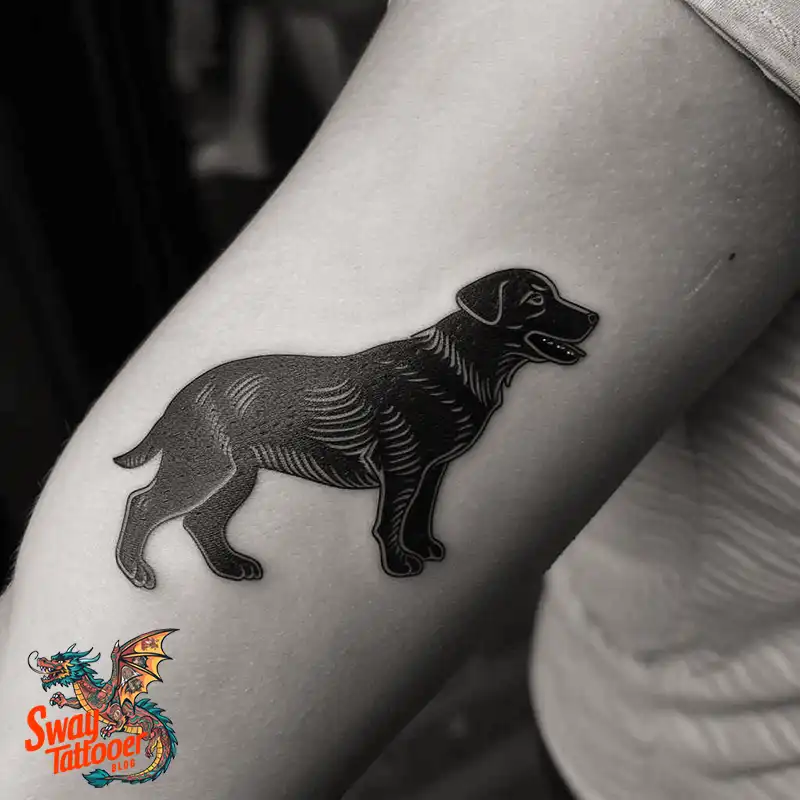
FAQ
Dog Tattoos – Frequently Asked Questions
1. What Is a Dog Tattoo?
Q: Dog tattoos are permanent marks or designs inked onto a dog’s skin. Identification, medical information, and artistic expression are just some possible uses for a dog tattoo. While not as common or widespread as microchipping, dog tattoos have been used for many years and continue to be used by professional breeders and kennel clubs.
2. Why Do People Get Tattoos for Their Dogs?
A: People may tattoo dogs for a number of reasons, including but not limited to the following:
- Identification: Tattoos are one way to identify an animal and are often supplemented, or an alternative to, microchipping. This is very common within breeding programs and kennel clubs.
- Medical Information: Sometimes, tattoos help identify important medical information, such as whether or not a dog has been spayed or neutered.
- Artistic Expression: Just like tattoos on humans, tattoos are an artistic way owners express love and attachment to the pet.
3. Is It Safe to Tattoo My Dog?
A: In a nutshell, tattooing is a common and fairly safe procedure which at all times needs to be performed by a licensed veterinarian or professional animal tattooist. It carries the same risks associated with any minor surgical operation: infection, allergic reactions. Proper sterilization of the equipment and follow-up care will minimize these risks.
4. How Is a Dog Tattoo Done?
A: The steps involved in tattooing are as follows:
- Preparation: The area where the tattoo is to be made is cleaned and shaved, if necessary, for a clean surface.
- Sedation or Anesthesia: Depending on the nature of the dog and the size of the tattoo, sedation or anesthesia may be given to the animal to keep it calm and still.
- Tattooing: The tattooer or veterinarian, by means of a tattoo machine injects ink into the skin of the dog in the designed pattern.
- Aftercare: Cleaning the tattooed area and aftercare instruction to the owner regarding how to take care of it for its proper healing.
5. What Designs Are Common for Dog Tattoos?
A: The common designs for tattoos of dogs include:
- Identification Numbers: Most used in breeding programs and kennels.
- Medical Symbols: Spay/neuter mark or allergy alerts, for example.
- Artistic Designs: Custom artistic designs, such as a paw print with your dog’s name, or unique symbols that hold personal meaning to you.
6. Where Are Dog Tattoos Usually Placed?
Dog tattoos are usually located on more hidden areas to minimize tension and discomfort. Common placement includes:
- Inner Ear: A small tattoo inside the ear flap for identification works well.
- Abdomen: Medical tattoos, like spaying/neutering indicators, are very common on the abdomen.
- Inner Thigh: This is another popular location for an identification tattoo.
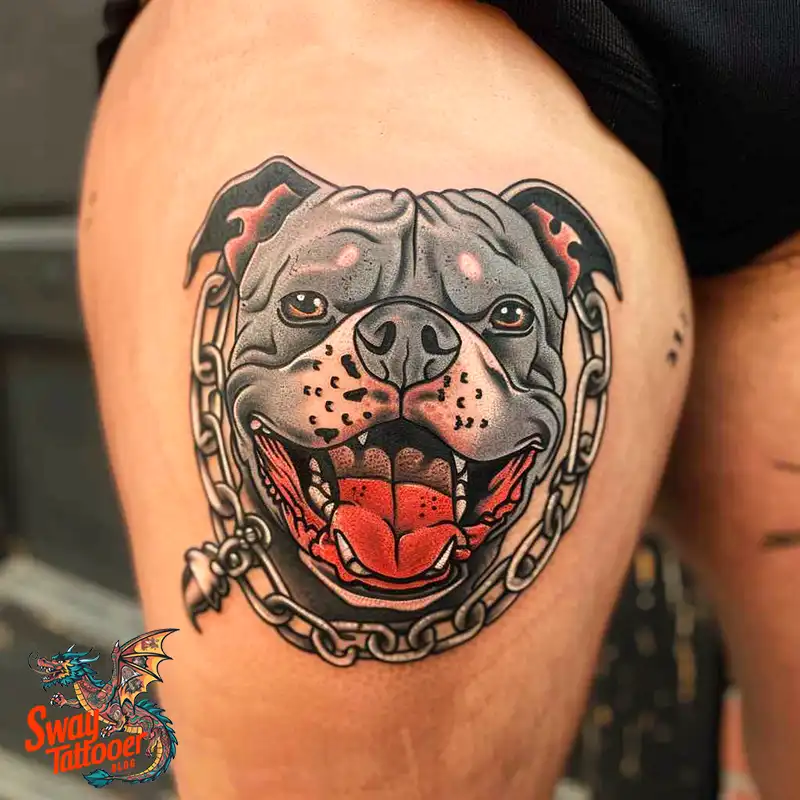
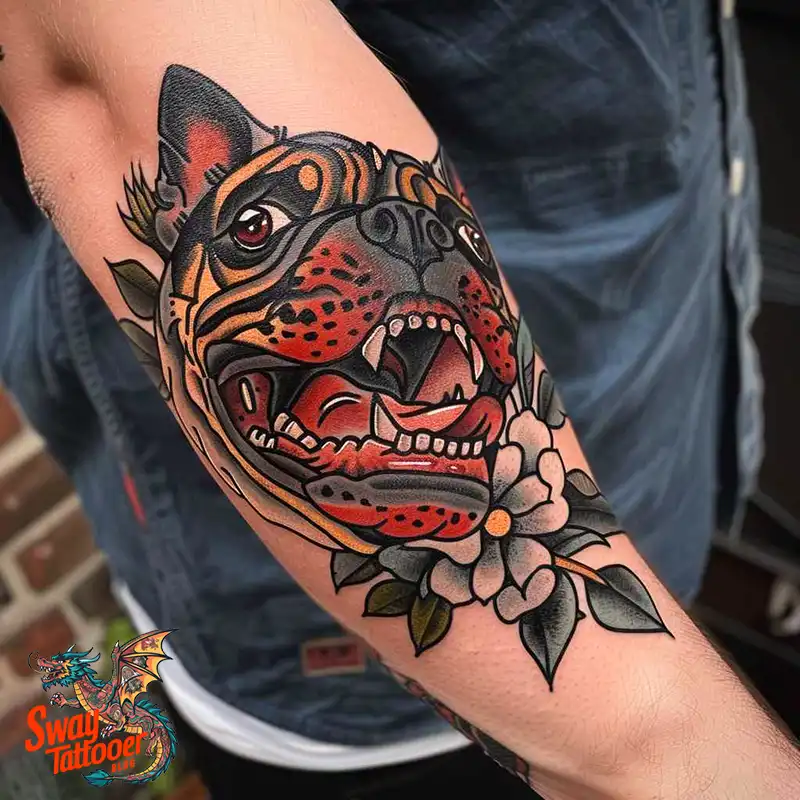

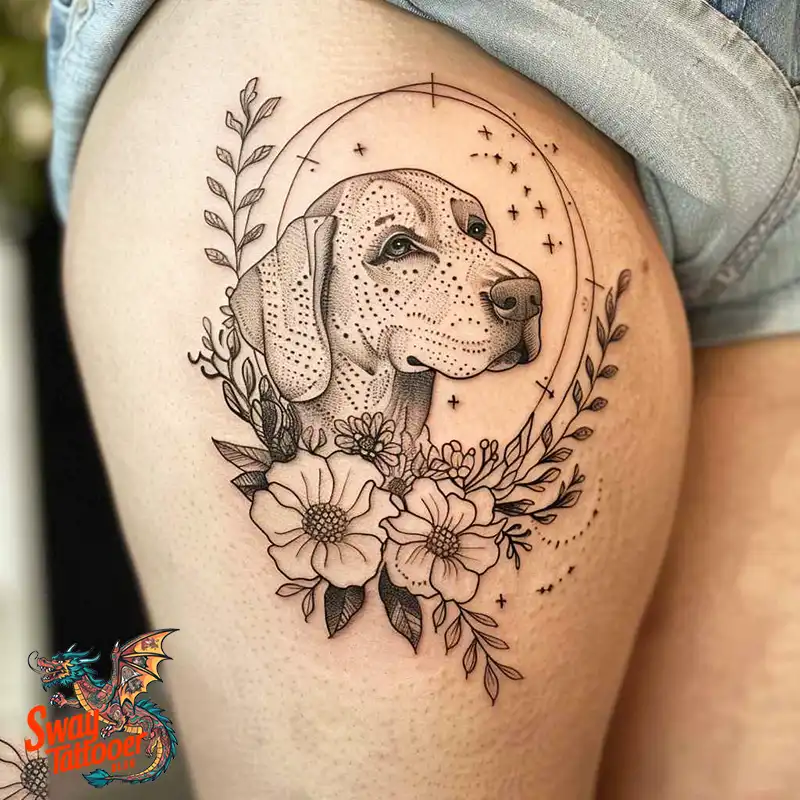
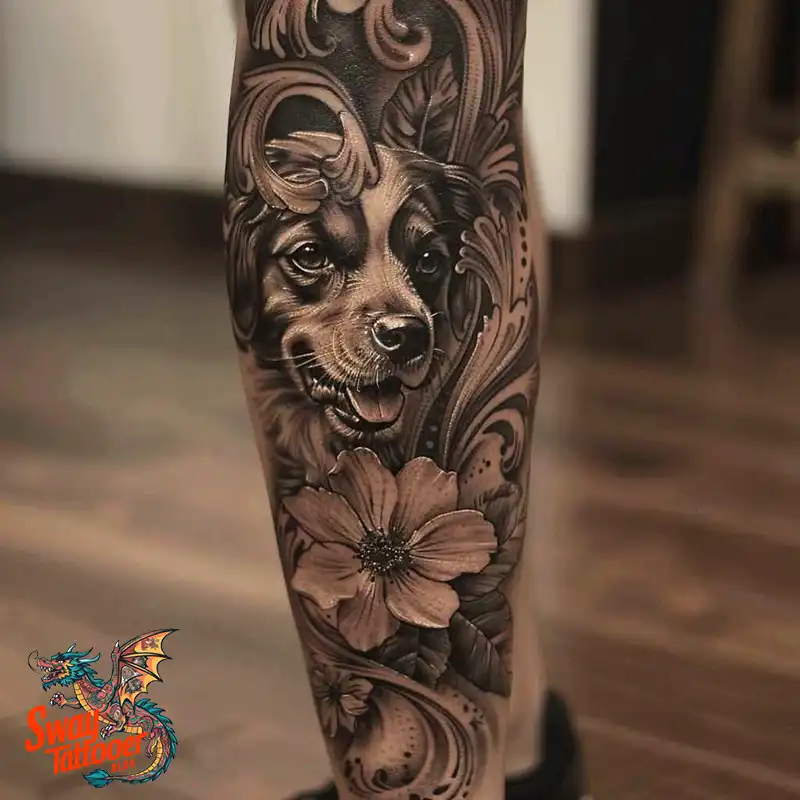
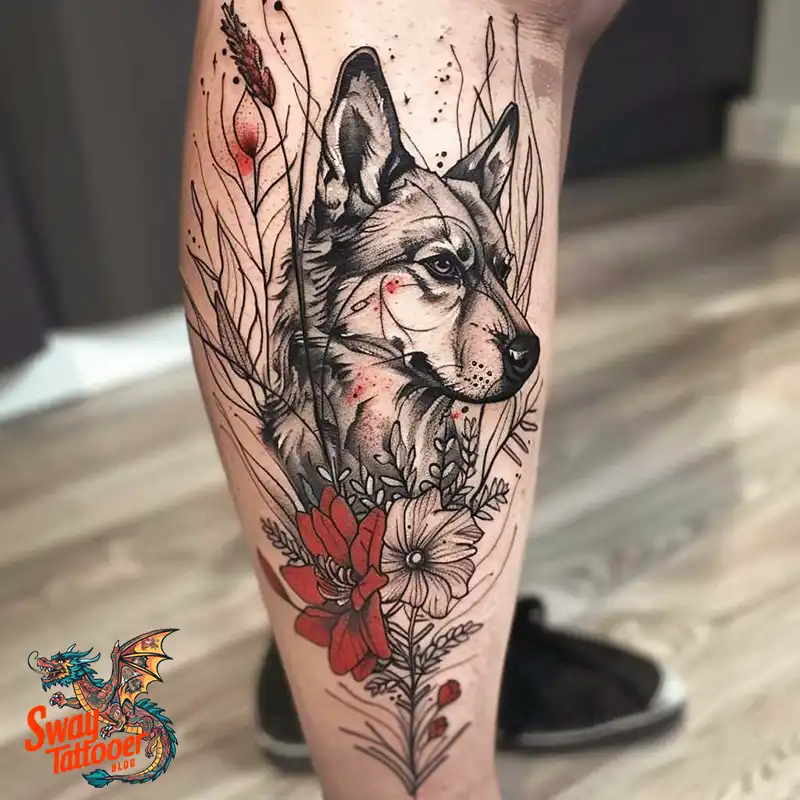
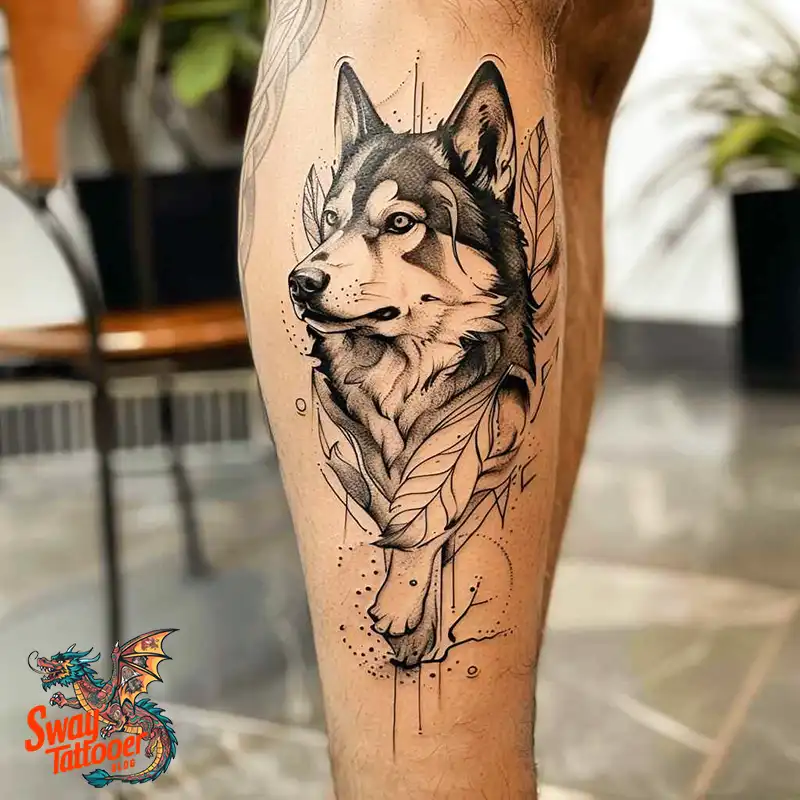
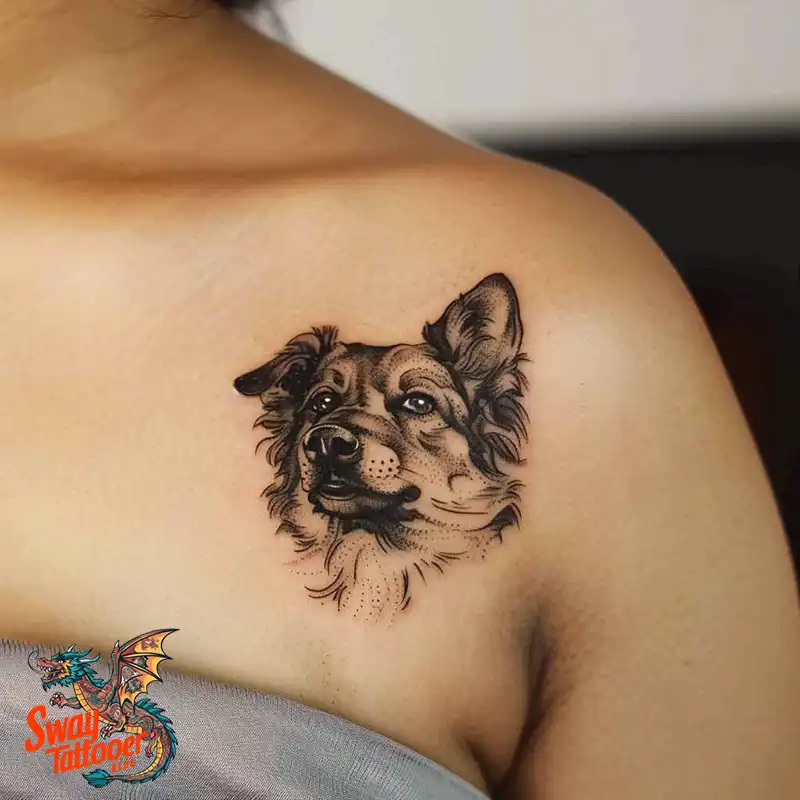
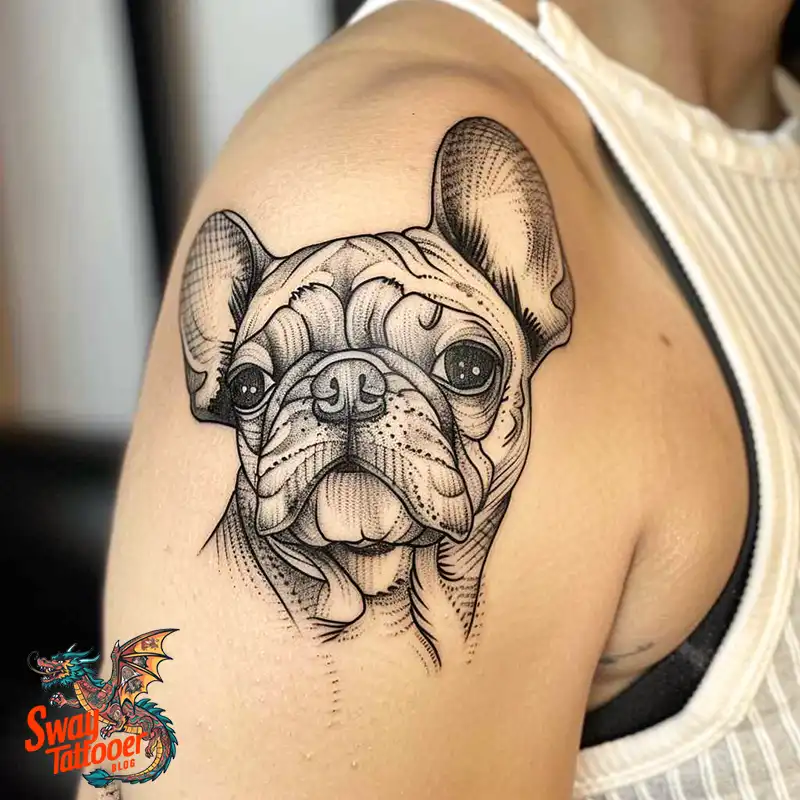
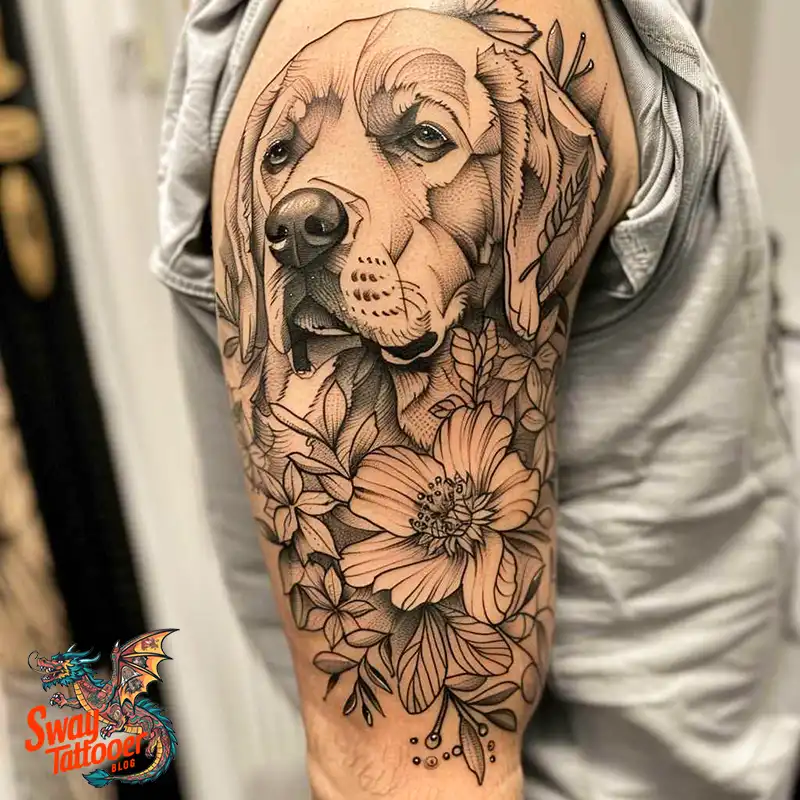
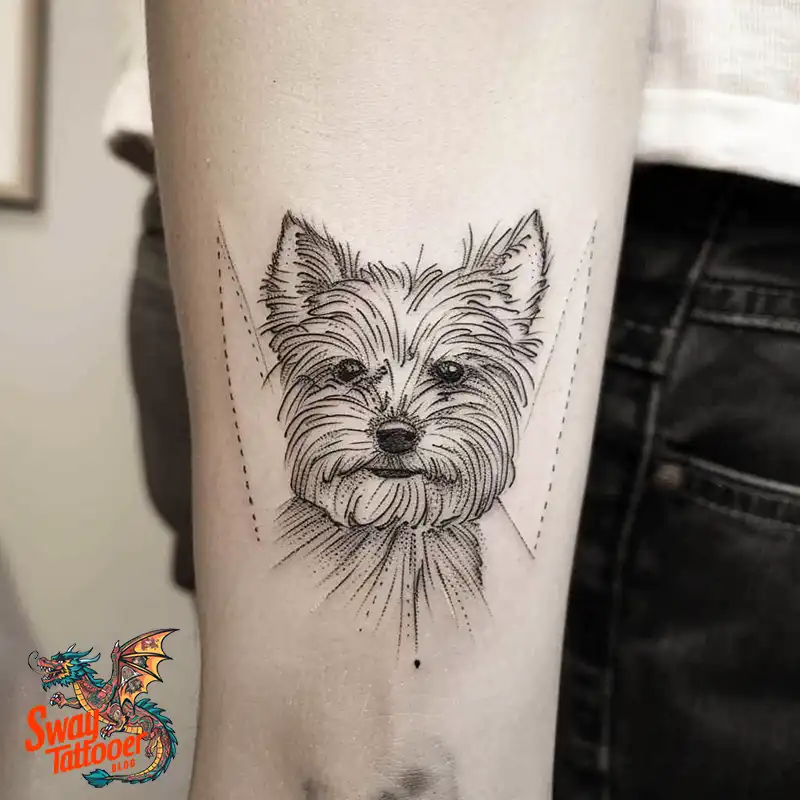
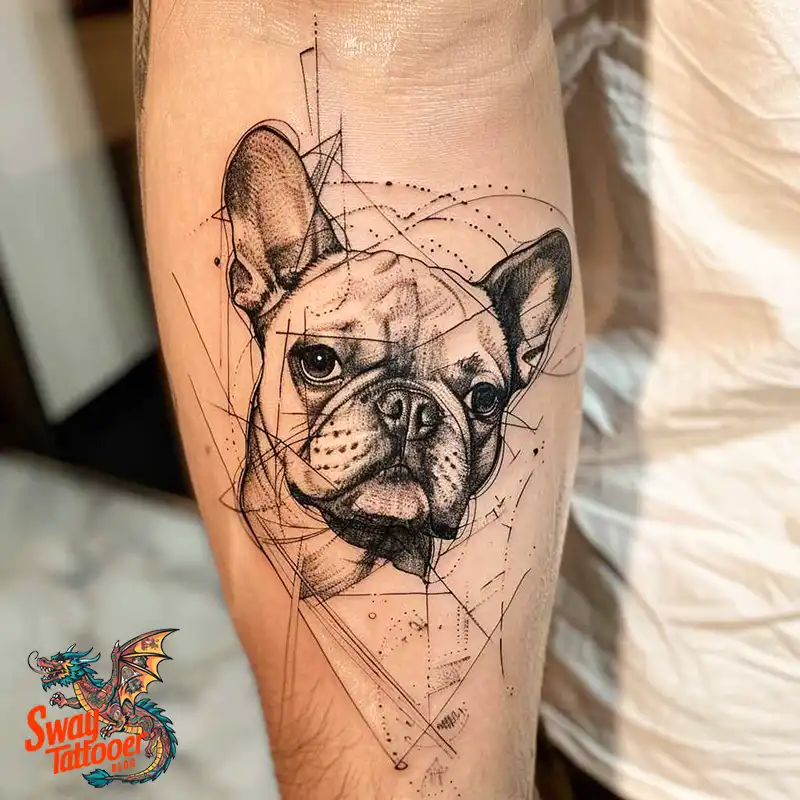
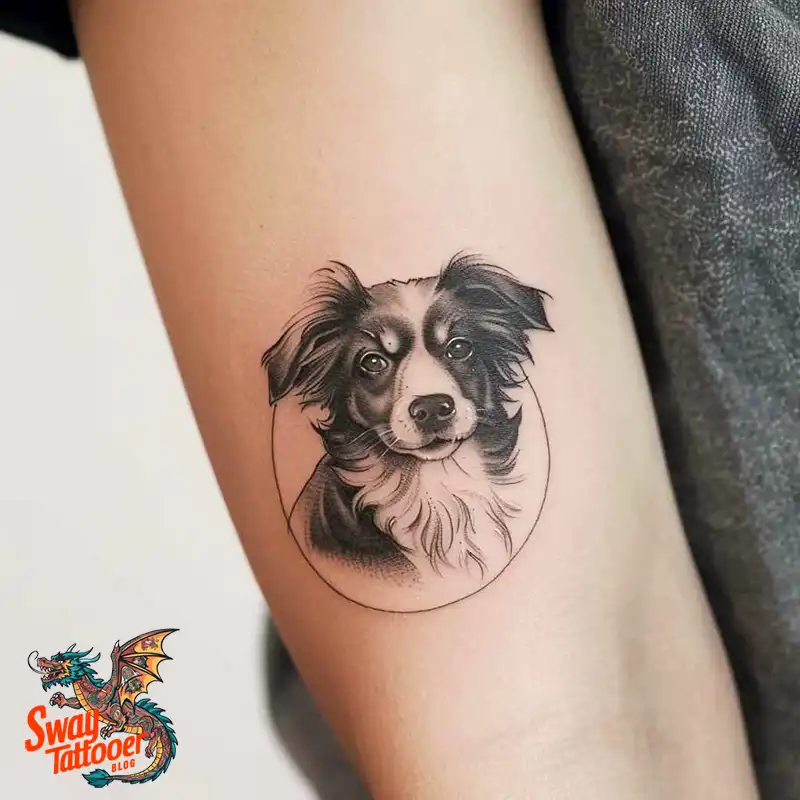
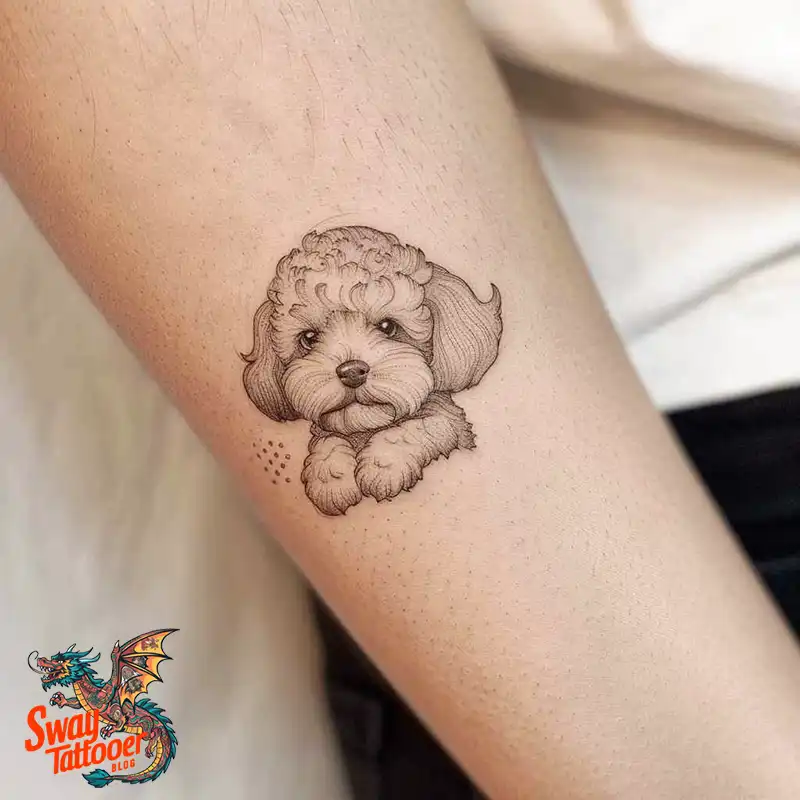
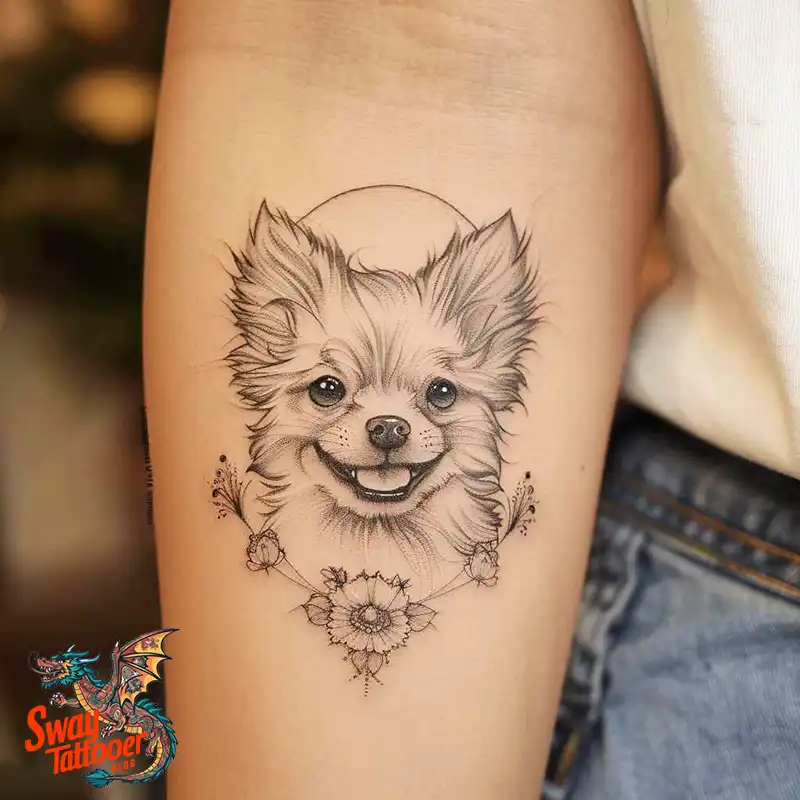
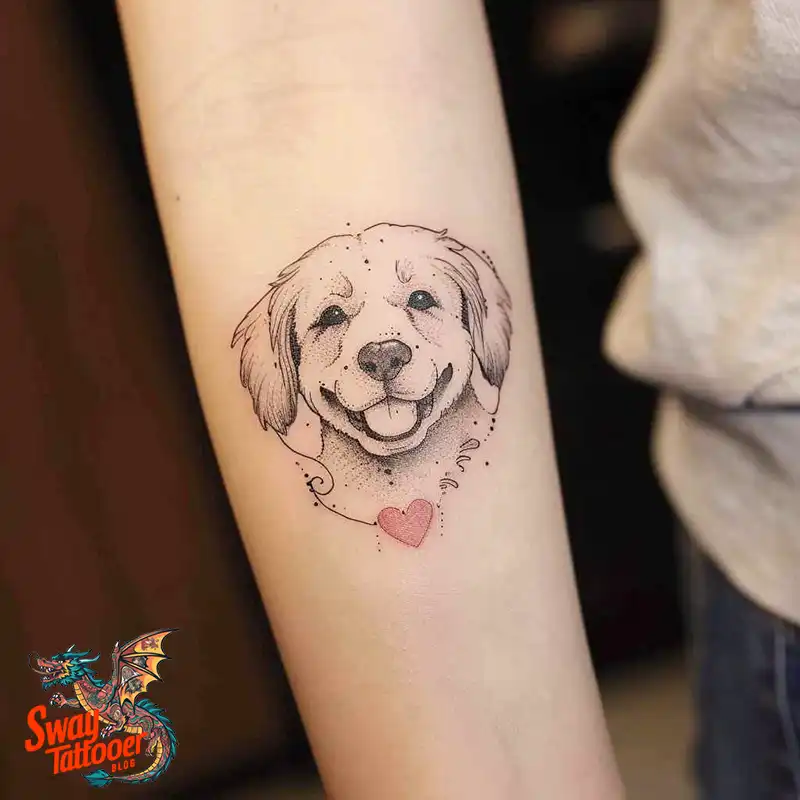
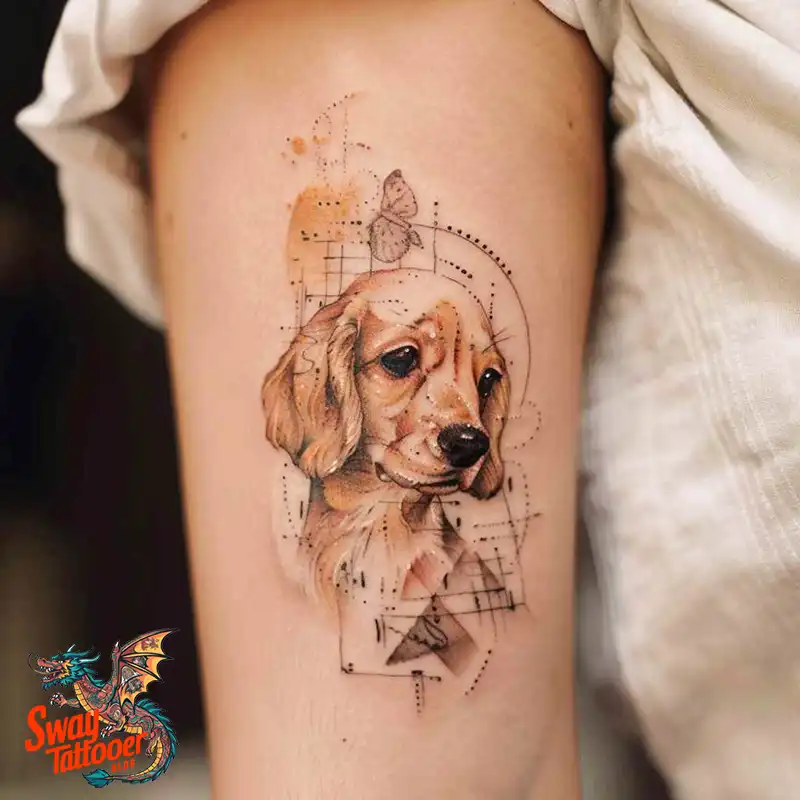
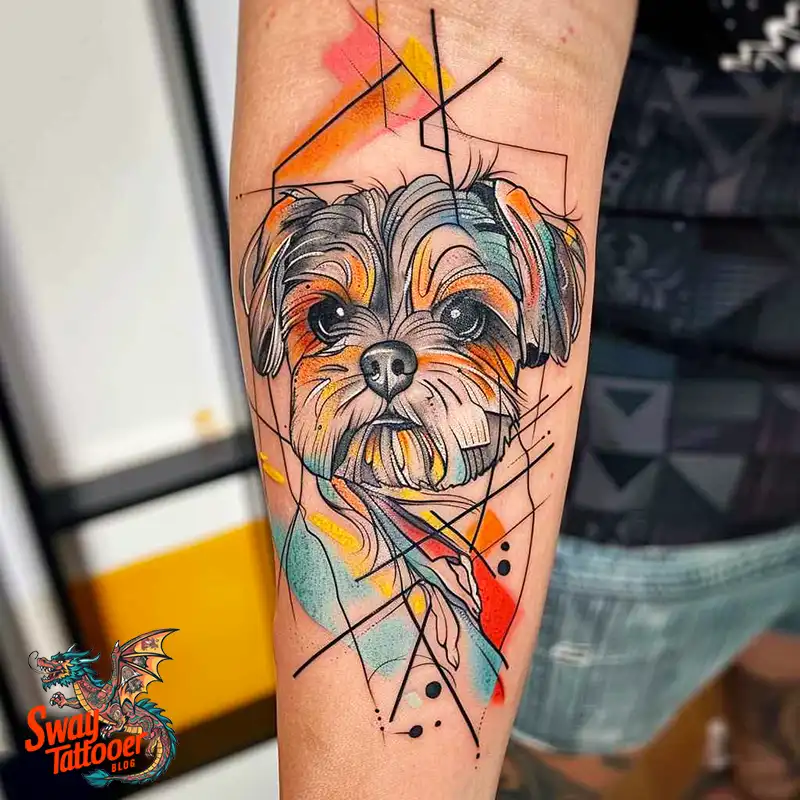

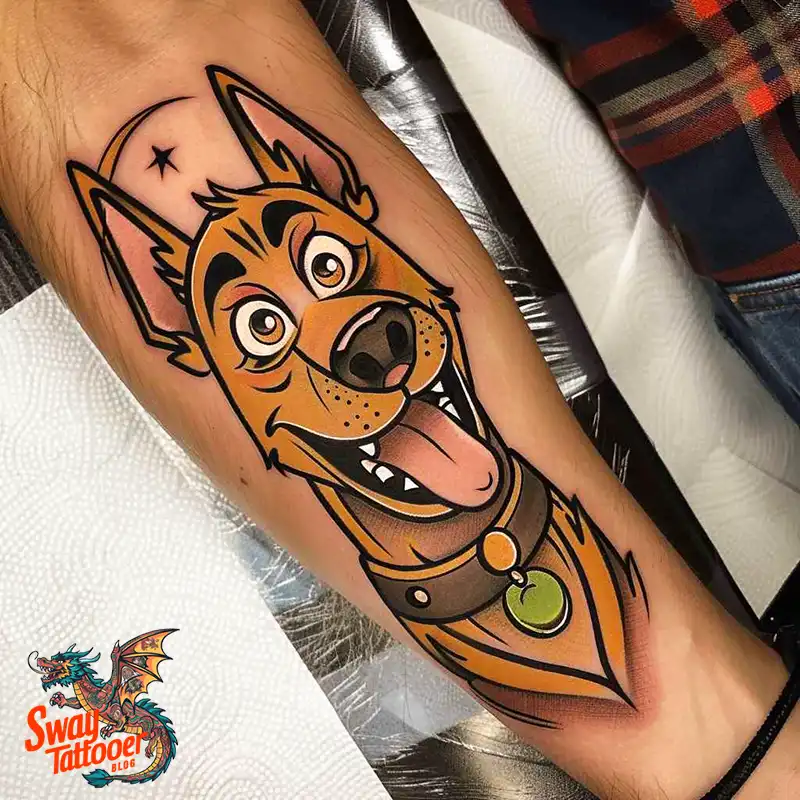
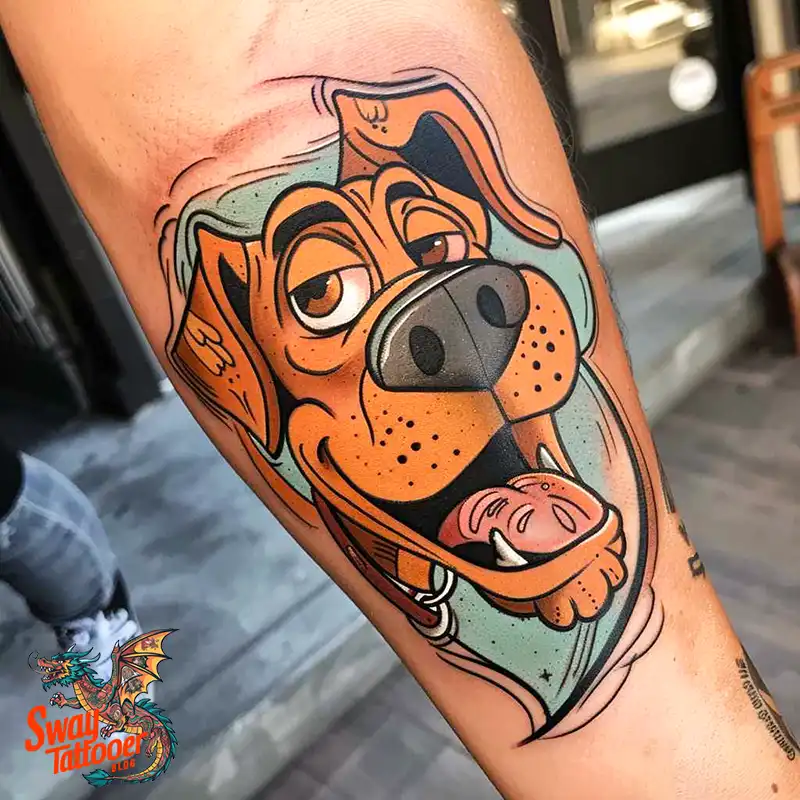
7. How Long Do Dog Tattoos Last?
A: Dog tattoos are permanent and are supposed to last throughout the dog’s life. However, just like human tattoos, they can tend to fade after some time due to their conditions, such as skin condition, sunlight exposure, among other factors.
8. Are There Alternatives to Dog Tattoos for Identification?
A: Yes, following are some other alternatives to tattooing dogs for identification:
- Microchipping: It is performed by inserting a small chip below the skin of your dog, which could then be scanned for the contact details of the owner.
- Collars and Tags: The more familiar collars with attached identification tags bearing the contact information of an animal’s owner.
- GPS Trackers: Wearable devices that allow an owner to position their dogs’ locations in real time.
9. Is Tattooing My Dog Legal?
A: This depends on the region and their purpose. Some have regulations regarding the tattooing of pets, especially for non-medical reasons. This is an important factor for which one should check with the local laws and discuss with a veterinarian prior to proceeding with getting your dog tattooed.
10. How Do I Care for My Dog’s Tattoo?
Q: What aftercare is required for a dog’s tattoo?
A: Proper aftercare is absolutely important to allow healing and to avoid any infection. Generally, the different ways of aftercare include:
- Cleaning: Lightly wash the tattooed area with a mild, nontoxic antiseptic solution.
- Protection: The area should be kept dry; avoid giving the dog an opportunity to scratch or lick it.
- Monitoring: Check the tattoo on a regular basis for signs of infection such as redness, swelling, or discharge, and seek veterinary attention if anything goes awry.
- Follow-up: Follow any subsequent aftercare instructions given by the veterinarian or tattoo artist.
The tattooing of your dog is a major decision involving a lot of considerations such as reasons, risks, and responsibilities that you would need to consider for post-operative care. Consultation with a professional is always recommended for the safety and well-being of your pet.
Conclusion
With this, dog tattoos became an innovative and expressive medium through which pet owners can immortalize their cherished canine companions. From the realistic portrait that captures the soulful eyes of the dear pet to the minimalist design, evoking the sense of a bond between dogs and humans, this range caters to every taste.
Often enough, the meanings behind these tattoos go further than appearance; the tattoos can be a tribute from the heart for the dogs that provide loyalty beyond any other creature can and unconditional love.
Eventually, a dog tattoo is more than ink on skin; it’s a deeply personal act and one that’s symbolic, celebrating the great impact dogs have on our lives. Whether it be a memorial to a dog that has passed, a celebration of one currently in existence, or an appreciation for the species itself, a well-thought-out dog tattoo can be a lifetime reminder of the joy, love, and companionship dogs bring into our lives. As you begin to work creatively, reflect upon those things which make your relationship with your dog special and allow the inspiration of such reflection to flow from a very heart-centered place.
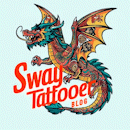

Leave a Reply